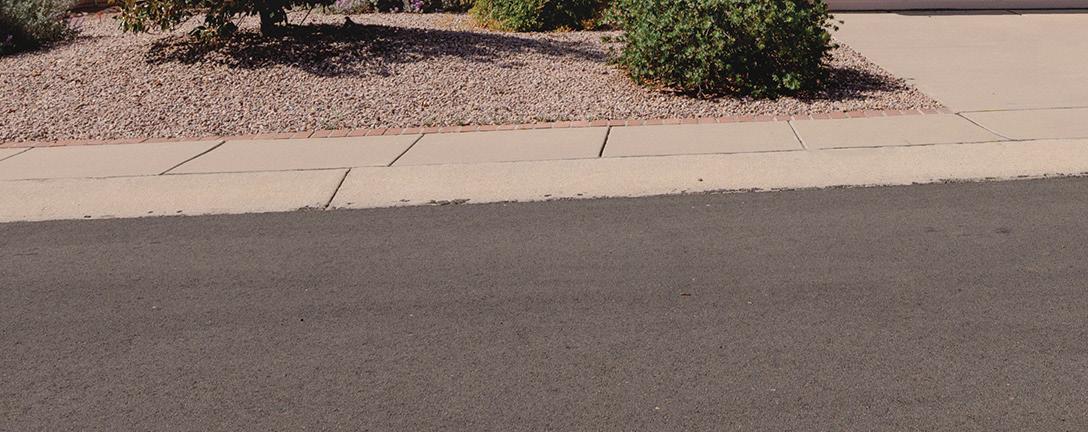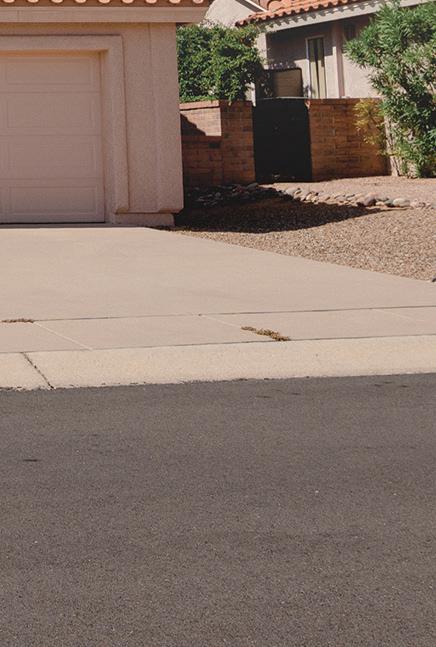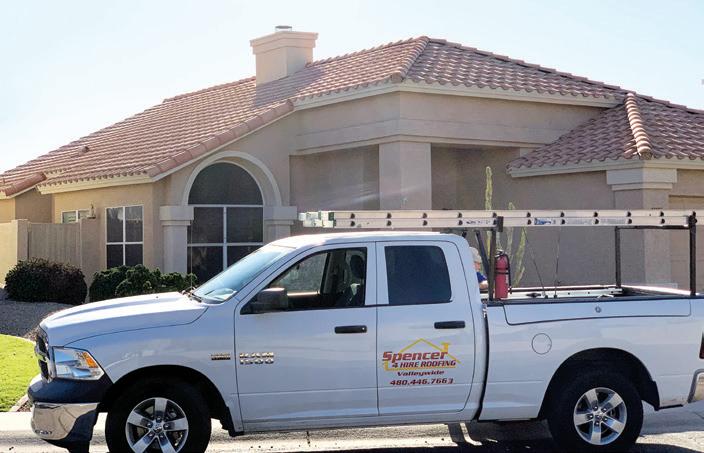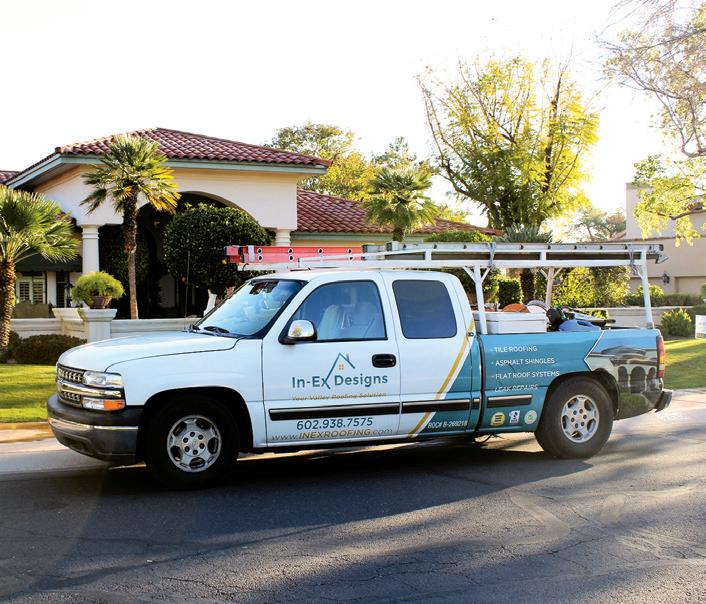






Wednesday,








Wednesday,
On April 17, Sal DiCiccio will wake up as a Phoenix City Council member and go to bed that night as Citizen Sal.
In between, term limits will have brought to a close two decades of service on the council for the Ohio native, longtime Ahwatukee homeowner and current Biltmore resident as he turns over his seat to Kevin Robinson.
DiCiccio may be one of the longest-serving – if not the longest – City Council members in modern Phoenix history, having successfully run for the District 6 seat in 1994 and 1998 and then in three successive elections between 2009 and 2017.
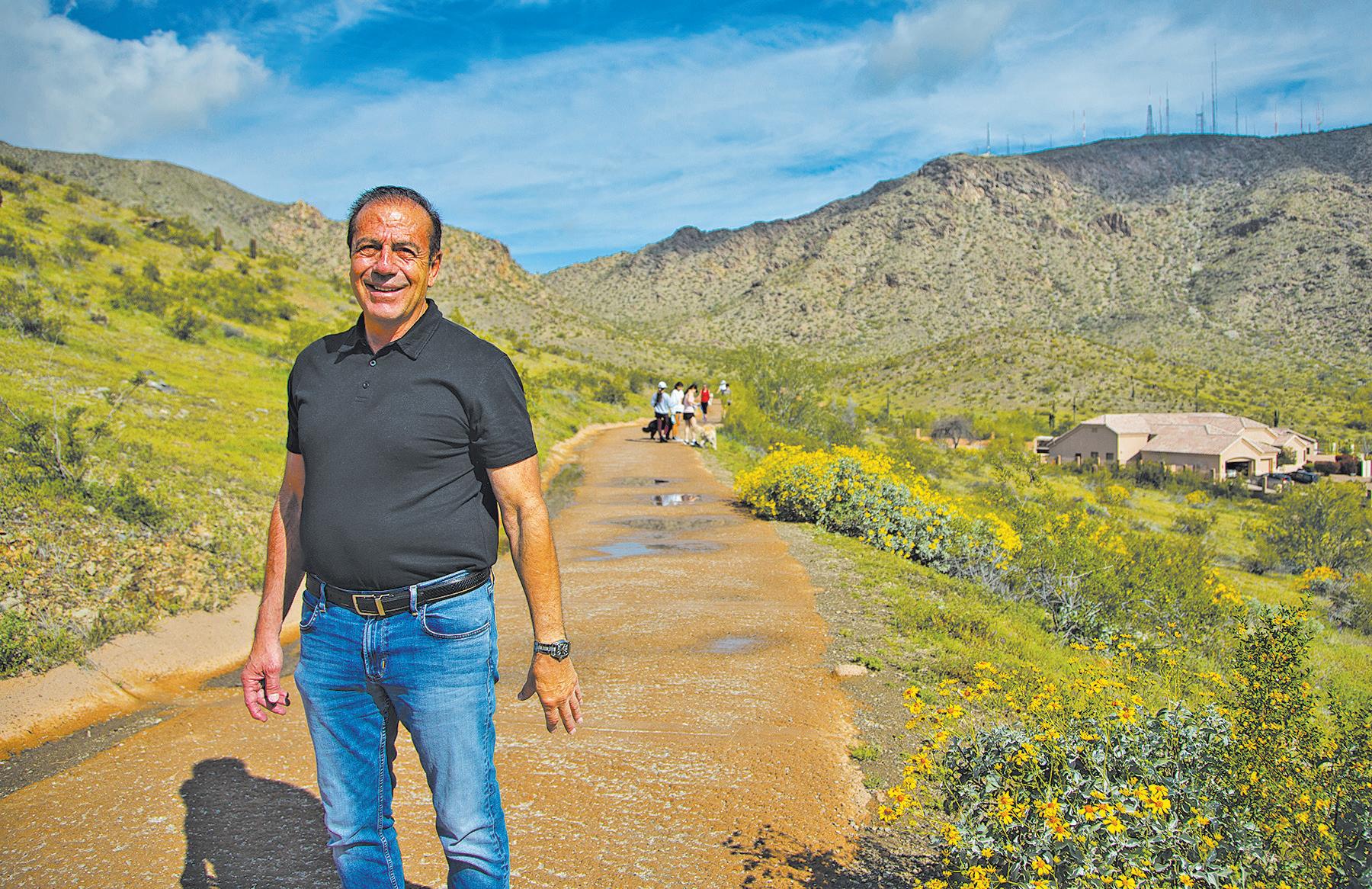
One of the accomplishments
For the 47th year, the Kiwanis Club of Ahwatukee this Saturday will lead colorful floats, marching bands, Scout troops and even an official Easter Bunny to entertain spectators along a stretch on 48th Street.
As the Valley’s only Easter Parade, the homegrown cavalcade has expanded to include entries and spectators from outside Ahwatukee, including the second-year appearance for the Gilbert Days Rodeo Teen Queens astride their horses and the El Zaribah Shriners in their
miniature motor vehicles.
On April 8, the Kiwanis Ahwatukee Easter Parade steps off at 10 a.m. from Warner Road, heading north along 48th Street to Elliot Road. Following the parade, the club will hold its Spring Fling and Craft Fair at nearby Ahwatukee Community Center Park, 48th and Warner.
This is a rain-or-shine event day, although of 46 parades (the COVID-interrupted 2020 and 2021 parades just had decorated club members’ cars) only 2009 saw rain, though skies cleared by starting time.
As Parade Boss for the 31st year, Mike Schmitt said the response from the 330 invita-
tions he sent out earlier this year has “worked very successfully.”
Those invitations and registration forms are sent to last year’s participants, and other community organizations, businesses and individuals, including local politicians.
Among that last group will be the community’s next Phoenix City Council representative, Kevin Robinson.
As part of his duties, Schmitt also determines the order of the 50 to 70 parade entries and writes the script to be read from three an-
see PARADE page 16
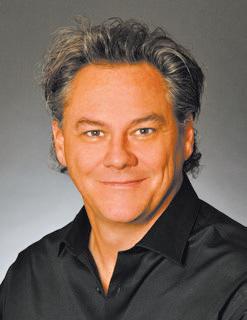
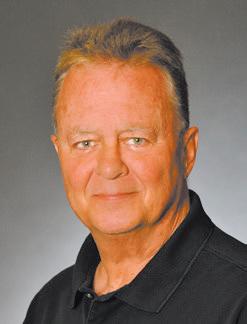
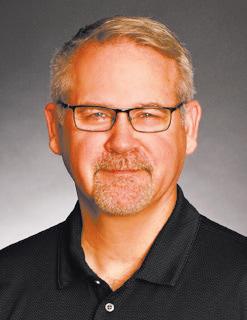
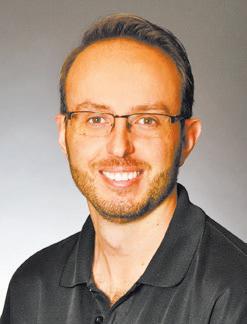
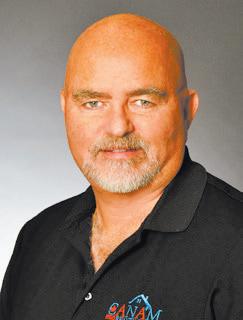


Simply stated our ultimate goal is to get you the most amount of money possible for the home you sell or the best deal on the home you buy. NO lowball investor offers, NO bait and switch, NO false promises to sell your home in 3 days, just simple hard work and negotiating skills by the most experienced professionals in the industry on your side that also own a construction company. It’s almost unfair! Use the Number One Realtor in the entire city for multiple years in a row, not just in Ahwatukee, or in a branch office somewhere, but the entire city. CANAM offices are right here in Ahwatukee where the owners live and work every day.
480-759-2242 • Rick@CanamRealty.com
www.CanamRealty.com
3233 E Chandler Blvd
Over 2,000 homes SOLD - Over 200 Testimonials on Zillow













The Ahwatukee Foothills News is published every Wednesday and distributed free of charge to homes and in single-copy locations throughout Ahwatukee Foothills. Times Media Group:
1900 W. Broadway Road, Tempe, Arizona, 85282 Main number: 480-898-6500
Advertising: 480-898-5624
Circulation service: 480-898-5641
PUBLISHER
Steve T. Strickbine
VICE PRESIDENT
Michael Hiatt
ADVERTISING STAFF
National Advertising Director Zac Reynolds 480-898-5603 zac@ahwatukee.com
Advertising Sales Representatives:
Laura Meehan, 480-898-7904, | lmeehan@ahwatukee.com
Katie Mueller, 480-898-7909 kmueller@TimesLocalMedia.com
Classifieds/Inside Sales:
TJ Higgins, 480-898-5902 tjhiggins@TimesLocalMedia.com
Steve Insalaco, 480-898-5635 sinsalaco@TimesLocalMedia.com
Executive Editor:
Paul Maryniak, 480-898-5647 pmaryniak@ahwatukee..com
GetOut Editor: Christina Fuoco-Karasinski, 480-898-5631 christina@TimesLocalMedia.com
Sports Editor:
Zach Alvira 480-898-5630 | zalvira@TimesLocalMedia.com
Production Manager: Courtney Oldham | 480-898-5617 production@TimesLocalMedia.com
Designer: Ruth Carlton | rcarlton@TimesLocalMedia.com
Photographer:
David Minton | dminton@TimesLocalMedia.com
Reporters:
Cecilia Chan. 480-898-5613 | cchan@@TimesLocalMedia.com
Circulation Director:
Aaron Kolodny 480-898-5641 | aaron@TimesLocalMedia.com
Ahwatukee Foothills News is distributed by AZ Integrated Media, a circulation service company owned by Times Media Group. The public is limited to one copy per reader. For circulation services please contact Aaron Kolodny at aaron@TimesLocalMedia.com.

To start or stop delivery of the paper, please visit: https://timespublications.com/phoenix/ or call 480-898-7901
To get your free online editiona subscription, please visit: https://www.ahwatukee.com/e-subscribe/
WRITE A LETTER
To submit a letter, please include your full name.
Our policy is not to run anonymous letters. Please keep the length to 300 words. Letters will be run on a space-available basis. Please send your contributions to pmaryniak@ahwatukee.com.
The Ahwatukee Foothills News expresses its opinion. Opinions expressed in guest commentaries, perspectives, cartoons or letters to the editor are those of the author.
The content and claims of any advertisement are the sole responsibility of the advertiser. The Ahwatukee Foothills News assumes no responsibility for the claims or content of any advertisement.
© 2023 Strickbine Publishing, Inc.

Former Mountain Pointe High School teacher Mohamed Ryad El Nounw, 33, surrendered his teaching license in January. He is facing six felony charges of sexual abuse for repeatedly abusing a 17-year-old female student, even at the school (Special to AFN).
AMesa teacher drinking alcohol in the classroom, a Higley High School teacher arrested for improper behavior with a student and a Gilbert Public Schools teacher using inappropriate physical force on a specialneeds student.
These bad apples were among approximately 75 Arizona educators who surrendered their teaching certificates in 2022 for misconduct and faced the state Board of Education.
The litany of disciplinary actions continued this year, striking closer to Ahwatukee when former Mountain Pointe High School teacher Mohamed Ryad El Nounw, 33, surrendered his teaching license in January. He is facing trial on six felony charges of aggravated sexual assault for allegedly sexually abusing a 17-year-old student repeatedly even in a classroom.
The state Board of Education is responsible for imposing discipline on educators, certified and non-certified, who’ve committed unprofessional or immoral conduct.
That year also saw the highest number of surrenders since 2012, according to the agency’s “2022 Enforcement Action Re-






























































































port,” released earlier this year.
The report includes the sources of complaints, discipline by gender, the type of certificates held by the educator and the types of cases.
The report, however, does not break the 2012-2020 data down to the school or district level. (The examples of the teacher misconduct in 2022 came off of the board’s agendas for that year).
“This is not data that are currently readily available,” said Sean Ross, executive director of the board. “However, our team is working on a project, starting with the 2023 enforcement data, to break it down by county, district and school.”
The board is on track to adjudicate at or above 200 cases this year – a projected 264% increase from cases in 2012. The number of enforcement actions taken last year was 172. To date, the board has adjudicated 1,279 cases since 2012.
Enforcement actions in 2021 tallied 146 due to the pandemic and its effect on the scheduling of hearings, according to the report.
And although 2022 saw an increase of adjudicated cases, it failed to meet the
projected target because of a lack of assistant attorneys general – positions which the board is working on hiring more.
Assistant attorneys general play a vital role in the adjudication of all cases, especially complaints, application reviews and cases settled by negotiated settlement agreements.
The bulk of the enforcement actions or 61% over the 10 years involved male educators while 39% involve women with no discernible trend seen for that stretch of time.
Nearly a third of the enforcement or 27% was against secondary teachers followed by 19% against elementary school teachers and 18% for substitute teachers, the report stated.
Action involving administrators was 6% and 2% for those with an emergency teaching certificate. Non-certificated educators such as physical education, JRTC and adult education comprise 3% of the cases.
For 2022, disciplinary action against secondary teachers came in at 18%, elementary school teachers, 17% and substitute, 17%.
Educators with administrative certificates saw an increase in enforcement at



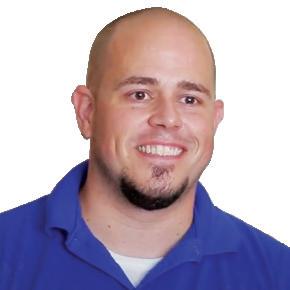




9%. Non-certificated educators represented 5% of the cases adjudicated in 2022.
According to the report, sexual misconduct represented over half of the cases for educators holding no certificate, subject matter expert, CTE and secondary teaching certificates.
Fewer educators with substitute, special education, elementary and behavioralhealth certificates are involved in sexual misconduct cases.
Disciplinary actions by the board over the 10 years included 489 surrenders of certificates, 210 suspensions, 149 revocations and 102 letters of censure.
The report said that suspensions and surrenders of teaching certificates increased from 2018 to 2020 and revocations
increased from 2019 to 2020.
The complaints fall into five categories – sexual offense, assault, substance abuse, fraud/theft and breach of contract.
Of the 1,279 cases, the largest share of enforcement actions involved sexual misconduct at 37% with substance abuse at 22% and assault at 21%. Breaches of contract accounted for 9%.
In 2022, 29% of the cases were sexual misconduct, followed by 27% associated with assaultive behaviors, the report said. Substance abuse cases dropped to 19% while breaches of contract came in higher at 14%.
According to the report the largsee TEACHERS page 18
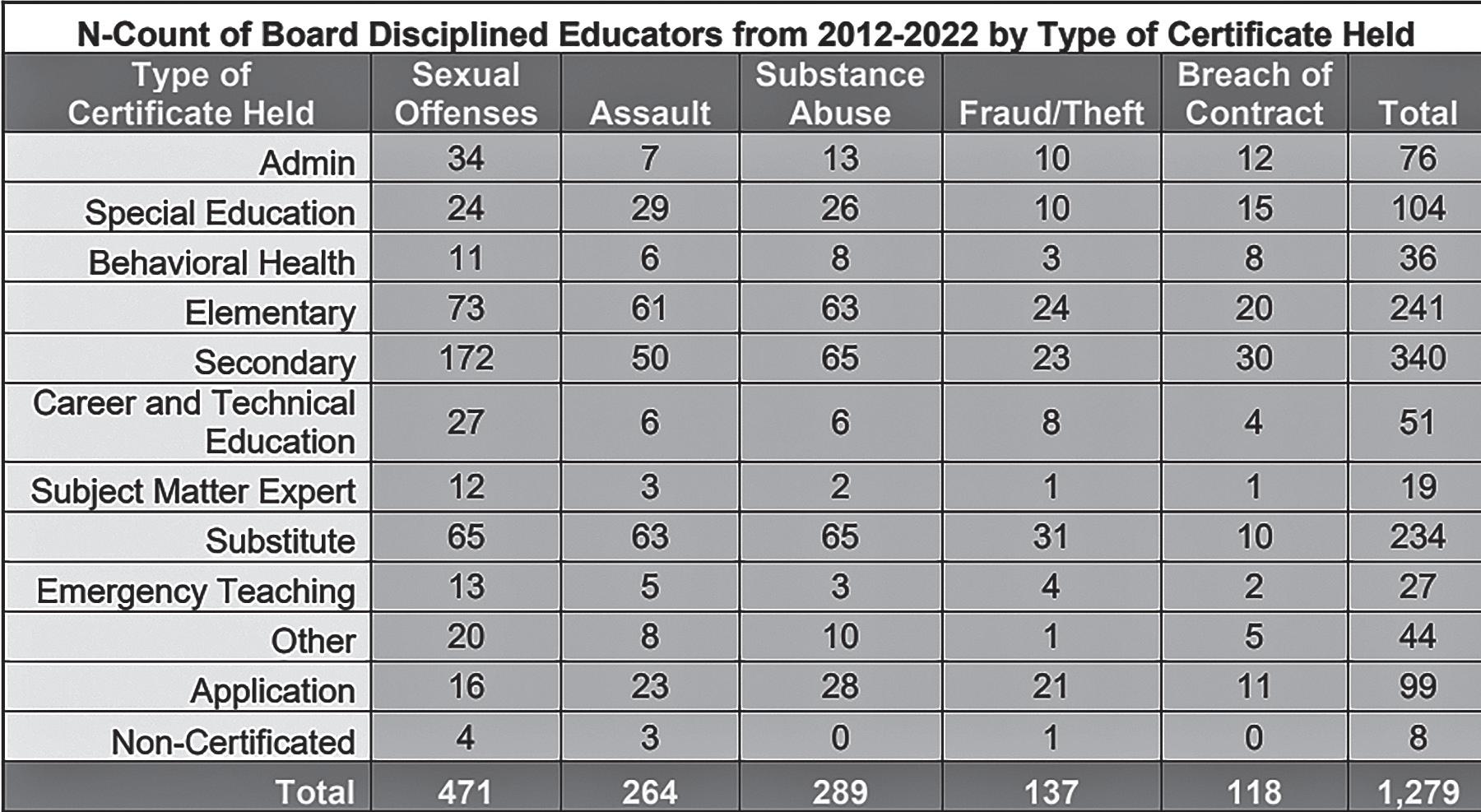
Arizona had the highest rate of COVID-19 deaths in the nation over three years, according to a research analysis published in March in the medical-science journal The Lancet.
“I think Arizona is a state with inequality, some poverty, and ultimately some of the vaccination rates and behaviors didn’t line up to have good outcomes,” said Joseph Dieleman, a professor and senior author of the study.
Arizona residents were less likely to be vaccinated, wear masks and maintain social distance, according to researchers in a peer-reviewed study.
The study says Arizona recorded 581 deaths per 100,000 people from Jan. 1, 2020, to July 31, 2022, the highest rate by far among states in the U.S. The national rate was 372 deaths per 100,000. Hawaii had the lowest rate, at 147 per 100,000.
The report said Arizona’s death rate was similar to that of the three nations with the highest coronavirus death rates in the world – Russia, Bulgaria, and Peru.
The study adjusted state death rates to account for age variations in each state’s population. But even at the unadjusted rate, Arizona was fourth-highest, with 539 deaths per 100,000, trailing West Virginia with 575, Mississippi with 550 and Alabama with 540.
In three years, 33,225 Arizonans have died of COVID-19, according to the Arizona Department of Health Services website. AZDHS officials did not respond to emailed requests for comment.
“The more robust a health system, the better a state performed in the pandemic, but only in states where the public was willing to make use of health care services for vaccination or to get early treatment for their conditions,” said Dieleman, an associate professor at the University of Washington’s Institute for Health Metrics and Evaluation.
The study also aligns with previous research that found Latinos and Blacks were more likely to die of COVID-19 than other racial groups.
One out of four Arizonans who died were Hispanic, according to ADHS data, which is higher than the percentage of people who identify as Hispanic in the census.
The Lancet researchers analyzed other factors such as poverty rates, education levels, access to quality health care and levels of interpersonal trust, in order to better understand the number of COVID-19 illnesses and deaths. The higher the poverty rate and lower the average education level of a state, the more infections it saw.
The Census Bureau said nearly 13% of Arizonans lived in poverty in 2022, compared to 11% for the U.S. as whole. Nationally, nearly 34% of people had at least a bachelor’s degree, compared to 31% in Arizona.
“This report is great because it really backs up and gives scientific evidence to the things we already thought about,” said Will Humble, executive director of the Arizona Public Health Association.
“It takes away the argument that our state just has an older population and that’s why we had high COVID death numbers, and instead looks at the whole picture.”
The report also details how race plays a role in the number of COVID deaths and illnesses.
“Many of the worst-performing states and territories in our study are also those with the highest populations of people identifying as Black (Washington, DC; Mississippi; and Georgia), Hispanic (Arizona and New Mexico), or American Indian and Alaska Native (Idaho, Nevada, Alaska, Wyoming, and Montana),” the researchers wrote in The Lancet report.
COVID-19 continues to kill. ADHS regularly reports virus updates.
Since March 5, at least 27 people have died.
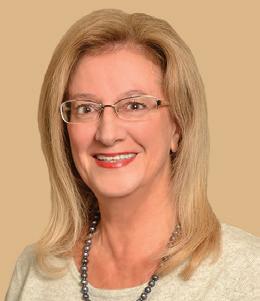




WASHINGTON – Arizona is doing all it can to improve air quality but will not meet federal standards as long as pollution from other jurisdictions can drift across its borders, the director of the Arizona Department of Environmental Quality testified Wednesday.
Karen Peters said the Environmental Protection Agency’s proposed “Good Neighbor Plan” that limits emissions in states whose pollution affects downwind states is “crucial.”
She said it addresses pollution in downwind states like Arizona.
Peters pointed to areas like Yuma, which generates little smog on its own but it still out of clean-air compliance.
“Yuma is heavily impacted by ozone transport from California and Mexico,” Peters told the Senate Environment and Public Works Committee. “There is virtually
nothing that can be done in terms of local emission reductions to reduce ozone pollution in the Yuma nonattainment area.”
The same is true in the Phoenix-Mesa area, where Peters said there are “very few, if any, remaining emission reductions available” to help the region attain cleanair standards.
But critics at the hearing called the plan an expensive and heavy-handed attempt to force federal policy on states.
They said it would force businesses and power plants to shut down. One witness called the plan “sort of shooting ourselves in the foot.”
“It threatens U.S. manufacturing, including the U.S. forest products industry,” said Paul Noe, vice president of public policy for the American Forest and Paper Association.
“Ultimately, this is a threat to the American worker – men and women with high-
see AIR page 7


In
month’s Edward Jones Perspective seminar, we’ll discuss some of 2022’s economic challenges that are still in play.
Other topics include:
• Top 3 risks to your retirement funds - and how to avoid them
• 3 ways to talk to your children about inheritance
• Saving for your child’s future just got easier - Thanks to the SECURE 2.0 Act
• HIgh earner? Backdoor Roth IRA could be a powerful saving strategy
We hope you and a guest will join us. Please call 480-753-7664 by 04/11/2023.
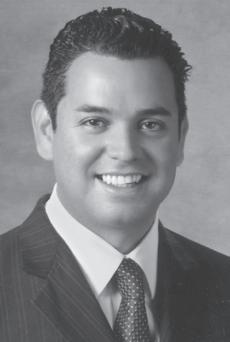

AIR from page 6
paying, highly-skilled manufacturing jobs, both rural and urban, in red and blue states.”
The Good Neighbor Plan calls for significant reductions on ozone-forming emissions from power plants and industrial facilities in 23 states whose bad air is carried to other states.
In addition to power plants fired by fossil fuels, it would also apply to facilities manufacturing iron, steel, cement, paper, glass, and petroleum and coal products, to natural gas transmission and metal ore mining.
Most of the states affected by the plan would be subject to both power plant and industrial restrictions.
California would only be subject to industrial emission limits while Alabama, Minnesota and Wisconsin would only have to rein in power plants.
Arizona is not currently one of the states that would be subject to the rule, but an EPA spokesperson said “further analysis is warranted” on whether it will apply to the state.
Dr. David Hill, an American Lung Association board member, pushed back against critics who cited the economic costs of the new regulation, claiming that it could actually spur more economic activity through reduced health burdens.
“The EPA has projected that it will prevent premature deaths, that it will avoid hospitalizations, that it will cut asthma exacerbations,” Hill testified.
“School absences will be decreased by over 400,000, and when kids miss school, parents miss work. Over 25,000 lost work days will be avoided,” he said. “So there

will be significant health care and economic benefits to instituting the rule.”
Sen. Ben Cardin, D-Md., acknowledged concerns about costs of the plan, but said they were outweighed by the health benefits.
The challenge for lawmakers, he said, is to “find that sweet spot because the risk factors to our population and cost factors to our population indicate that the federal government today is not carrying out its responsibility.”
But Sen. Cynthia Lummis, R-Wyo., said she worries that the rule would force pow-
er plants to close, removing more than 14,000 megawatts of electricity generation from the system, which would “cripple” affordable power for the nation.
“The premature forced closure of coalfired power plants in this nation is a danger to American energy security and grid reliability,” Lummis said.
“For this reason alone – not to mention the 90,000 direct coal mining jobs in 26 states, including Arizona, Oregon and Pennsylvania, just to name a few – this administration must reverse course.”
Sen. Mark Kelly, D-Ariz., countered with
an economic argument for the plan, pointing to Yuma, which is bordered on the west by California and the south by Mexico.
The city of fewer than 100,000 people could face stringent economic limitations if its neighbors are not held accountable for the pollution they are causing in the area, he said.
“Because the area exceeds the EPA’s standards for ozone, there are limits imposed on the region’s economic growth,” Kelly said. Of the pollution in Yuma, “10% comes from somewhere within Arizona, but basically nothing comes from Yuma County.”
Peters said about 40% of the ozone in the Phoenix area was generated within the state but that the rest comes from other sources, either natural background sources or other states or even countries.
Kelly was not able to answer Lummis’ question about how much pollution might be coming from Chinese manufacturing.
But he said he would not be surprised if it was true, calling on his experience as an astronaut when he said he was able to see sand and smog drifting across national borders.
Peters said there are things that can be done to help reduce local pollution, but many of those things are not within the state’s jurisdiction, a situation she finds “frustrating.”
Despite Maricopa County failing to meet ozone standards, Peters said the state made some progress in improving air quality.
“Ozone emissions have gone down over the last 20 years in the Maricopa area,” Peters said after the hearing. “But you know, time is not on our side. We need to do more sooner.”

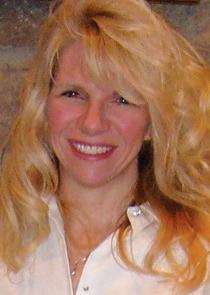


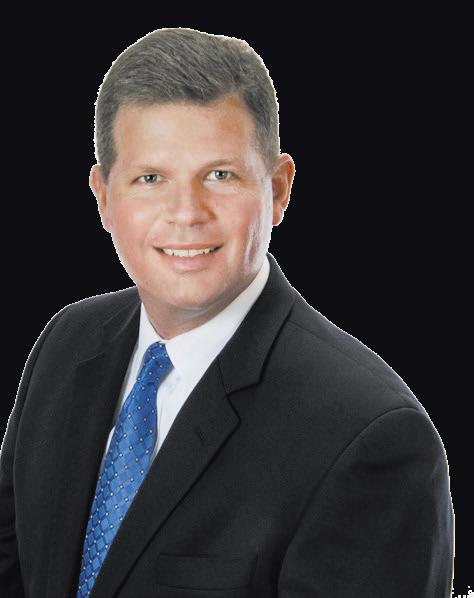






















As two Republican lawmakers defected from party ranks to defeat a measure forcing two cities to not raise the minimum wage, a Gilbert legislator lamented the concept of having a minimum wage at all – or most government regulation.
“I say, be very careful what you ask for because once you’re in this arena, you never get out,’’ said Rep. Travis Grantham.
Grantham spoke as two fellow GOP members joined all Democrats on a House panel March 29 to defeat a measure designed to make Tucson and Flagstaff go no higher than the voter-approved minimum wage.
Echoing his party’s long opposition to any mandate that businesses at least pay some set standard, his criticism went further to include any government regulation.
“Then we just regulate more and more and more, we make it more and more costly and more and more difficult and this is what we’re now figuring out with mandated minimum wages,’’ he continued.
“Eventually, they’ll go away because the whole system will topple and everything will crumble.’’
The two defecting lawmakers in the minimum wage vote did not vote against the measure because they like the voterapproved pay boosts.
Instead, Republican Rep. David Livingston said a better approach is for the cities to repeal their minimum wage laws and even help repeal the initiative that boosted the statewide minimum wage and allows individual cities to raise it above the state base.
That, he said, is what is driving inflation in those cities and across Arizona and the nation.
The measure from Sen. Wendy Rogers, R-Flagstaff, would have given businesses in those cities a tax credit equal to the difference between their wages and the statewide minimum wage of $13.85 per hour. For Flagstaff, that’s a $2.95 per hour difference. Tucson’s wages are set to rise to $14.25 by the end of the year.
Voters in both cities approved the increases.
Under Rogers’ plan, the state would recoup the tax losses by withholding income tax payments that are funneled to those cities – estimated by the Legislature’s budget analysts at $17 million a year for Flagstaff and $120 million for Tucson.
But the state’s taxpayers would still be on the hook because the analysis figured the business tax credit would far exceed what the state is able to hold back from the cities.
“Where the real answer is, the tough message – and this is the love part to the chambers (of commerce) – the answer is to repeal this terrible law. That is the answer,’’ Livingston said. “And as far as I’m concerned, we should take it a step further.”
“Flagstaff could lead that, and then we should do a statewide repeal of the law that was passed that has increased inflation,’’ he said. “Because inflation is a No. 1 factor that reduces someone’s net worth and real wages.’’
Rogers’ bill is championed by the local chambers and small businesses, which argue that the higher minimum wages have increased their costs to the point where they no longer want to invest in those businesses.
SB 1108 previously passed the state Senate with only GOP backing.
At the heart of the fight is the fact that Arizonans voted in 2006 to set a state minimum wage above the federal figure. They renewed that approval a decade later by a 58-2 margin, complete with a provision to allow local communities to impose their own.
Lawmakers are powerless to repeal what voters have approved. What Rogers sought to do was an end-run of sorts, creating a financial disincentive for cities to impose or keep their own higher minimum wages.
“What I like about this bill is that it does not prohibit any city who wants to decide to unilaterally raise the minimum wage,’’ said Rep. Justin Heap, R-Mesa.
“It simply says that if a city government



















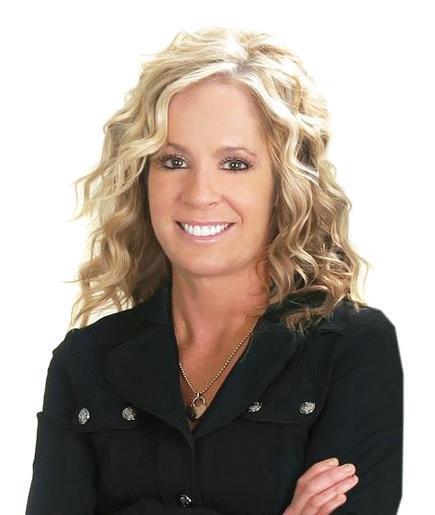

but also want to make it ‘’your own’’ - - - this is the perfect opportunity!




Foothills
Listed for $815,000
Remodeled home in a transitional contemporary style! 2,626 sf, 4 bedrooms and 2.5 bathrooms. Hillside lot with an east facing back yard! 2020 DOUBLE PAPER ROOF! Custom finishes throughout.! OPEN FLOOR PLAN! Kitchen boasts soft-close white Shaker cabinetry with ORB hardware and pull out shelving, quartz counter tops, large island with pendant lighting, upgraded stainless steel appliances, 36’’ farmhouse sink and large walk-in pantry. 2’ x 4’ porcelain tile flooring througout and engineered hardwood in the bedrooms and office (2021.) No carpet in the home! 8’ custom doorways throughout with solid frame doors. Recessed LED lighting throughout home! 2021 interior paint and 7 ¼” baseboards. 2022 trendy ceiling fans and 2022 silhouette window blinds. The 2021 remodel of the bathrooms includes new faucets, vanities, sinks, Toto toilets, mirrors, lights, and tile surrounds in showers. Enormous, expanded walk-in shower in the master suite! 2020 Nuvo whole-house water purification system. 2021 Milgard windows and doors throughout. 2021 sprinkler systems front and back. Sparkling pebble tec pool!
Mountain Park Ranch Listed for $449,999
1,594 sf 3 bedroom, 2.5 bathroom home with north / south exposure. 2014 roof with 12 year warranty, 2015 Milgard
is going to pass on a cost by fiat to all the employers in their districts, that the city government has to shoulder some of that cost themselves,’’ he continued. “It actually puts a consequence for bad policy in my cities.’’
But Democratic Rep. Andres Cano, DTucson, called the whole Republican claim about minimum wages a false narrative.
He praised the chambers for taking on the inflation issue, which he said “is really an international and national issue’’ that has hurt working families. And Cano and other Democrats said they backed the notion that businesses need some relief.
Cano said that there is an answer for those who claim the higher local minimum
wages are harming the local economy.
“Ask the voters … the people of Flagstaff, if they wouldn’t be OK with any initiative to take away their hard-earned resources,’’ Cano said.
“Put (up) a ballot referral to repeal the minimum wage and see if it passes or fails,’’ he said. “Don’t come to this Legislature seeking solutions that are sound bites and not solutions.”
Like all measures, it could later be revived, but that would require earning support from either Livingston or Carbone.
The GOP-controlled Legislature has made several attempts to penalize cities for raising their minimum wages under the 2016 voter initiative that authorized the higher wages, but has so far been unsuccessful.

Westbank Listed for $420,000
1,447 sf single level home on the Gilbert/Chandler border. This beautiful 3 bedroom, 2 bathroom home has an open floor plan. Granite counters, stainless steel appliances, center island, tiled back splash, large pantry and eat-in dining nook in the kitchen. Hardwood plank tile flooring throughout with carpet only in the bedrooms. Bathrooms are upgraded with granite vanity tops and tile surrounds in the showers. Brushed nickel hardware and wood blinds throughout. Large walk-in laundry room. Backs to the canal; easy hiking/biking access and no neighbors immediately behind! Low maintenance front and back yards. Close proximity to both Gilbert and Chandler Schools!

















































































































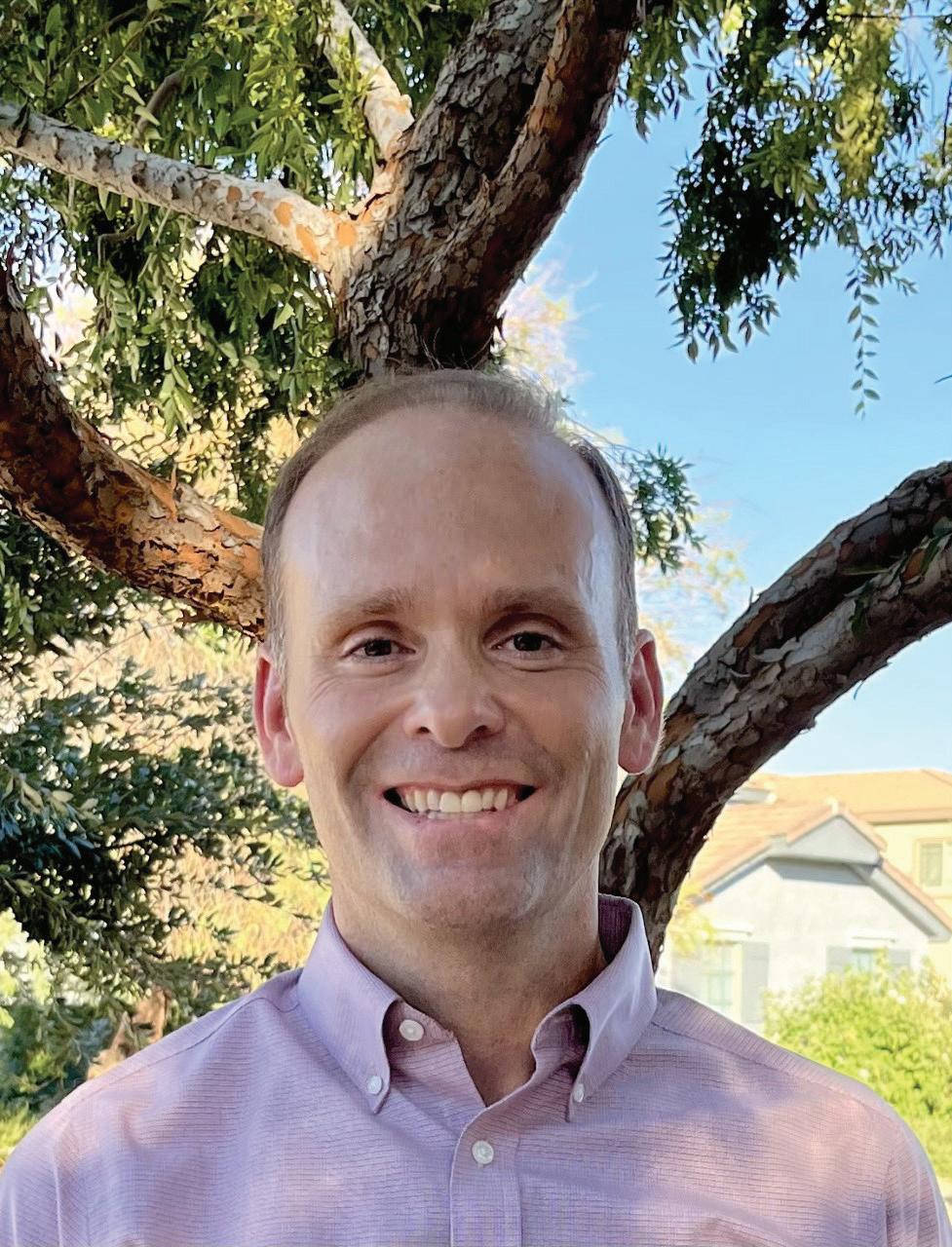

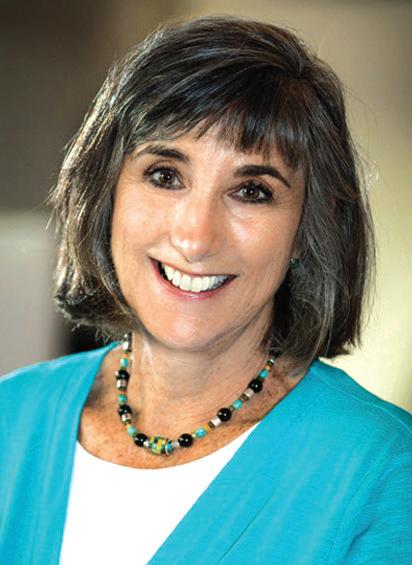


Margaret Taylor proves that it’s not the hours you work in a week but what you do with those hours that counts the most.
For the last 11 years, the 85-year-old Mesa resident has volunteered between five to 10 hours a week as the sole food meal coordinator for the East Valley Men’s Center, organizing and coordinating food donations from the community.
Her work has made it possible to serve nearly one million meals to those men experiencing homelessness by providing two hot meals and a sack lunch for the 110 residents at EVMC 365 days a year.
Bridget Talty, senior community engagement coordinator for A New Leaf, said while her job doesn’t require her to get hands on and every staff member holding a food handler’s card, Taylor has not hesitated to roll up her sleeves and step in to help in any way the nonprofit needs or whenever someone asks her.
“I’ve served meals with her here, somebody comes up short with volunteers and she’ll jump in and help,” Talty said. “She will jump in and help the agency whenever you ask her to do something.”
According to the U.S. Department of Housing and Urban Development, Arizona’s homeless population grew by 23.4% from 2020-2022 and nearly 60% of the es-
timated 13,553 homeless are unsheltered.
EVMC provides “a safe haven” for men of all ages experiencing homelessness with an assigned bed and storage area for their personal possessions for the duration of their stay.
Along with a personal space, EVMC also provides employment assistance, transportation assistance and substance abuse support, to ensure these men can get back on their feet with a job and an apartment of their own.
The age of the men at EVMC starts as young as 18 and includes “plenty” of group home teens whose kids aged out of the system and don’t have any skills.
Essential to restoring a sense of normalcy, every morning residents at EVMC receive a hot breakfast before heading off to work with a sack lunch and returning in the evening for a hot dinner.
It all started in January 2009 when Taylor’s world completely changed.
She submitted for retirement after 37 years as a first-grade teacher at Edison Elementary School and lost her husband Robert of 35 years to esophageal cancer.
“That made me need to keep working somehow because once you put in your retirement papers you can’t take them back,” Taylor said.
Initially, she started volunteering
der a program with AmeriCorps











































Mesa, AZ – When it comes to chronic pain and/ or neuropathy, the most common doctor-prescribed treatment is drugs like Gabapentin, Lyrica, Cymbalta, and Neurontin. The problem with antidepressants or anti-seizure medications like these is that they offer purely symptomatic relief, as opposed to targeting and treating the root of the problem. Worse, these drugs often trigger an onset of uncomfortable, painful, and sometimes harmful side effects.
The only way to effectively treat chronic pain and/or peripheral neuropathy is by targeting the source, which is the result of nerve damage owing to inadequate blood flow to the nerves in the hands and feet. This often causes weakness, numbness, balance problems. A lack of nutrients causes the nerves degenerate – an insidious

As displayed in figure 1 above, the nerves are surrounded by diseased, withered blood vessels. A lack of sufficient nutrients means the nerves
cannot survive, and thus, slowly die. This leads to those painful and frustrating consequences we were talking about earlier, like weakness, numbness, tingling, balance issues, and perhaps even a burning sensation.
The drugs your doctor might prescribe will temporarily conceal the problems, putting a “Band-Aid” over a situation that will only continue to deteriorate without further action.
Thankfully, Mesa is the birthplace of a brandnew facility that sheds new light on this pressing problem of peripheral neuropathy and chronic pain. The company is trailblazing the medical industry by replacing outdated drugs and symptomatic reprieves with an advanced machine that targets the root of the problem at hand.

Effective neuropathy treatment relies on the following three factors:
1. Finding the underlying cause
2. Determining the extent of the nerve damage (above 95% nerve loss is rarely treatable)
3. The amount of treatment required for the patient’s unique condition
Aspen Medical in Mesa, AZ uses a state-of-the-art electric cell signaling systems worth $100,000.00.
Th is ground-breaking treatment is engineered to achieve the following, accompanied by advanced diagnostics and a basic skin biopsy to accurately analyze results:
1. Increases blood flow
2. Stimulates and strengthens small fiber nerves
3. Improves brain-based pain
The treatment works by delivering energy to the affected area(s) at varying wavelengths, from low- to middle-frequency signals, while also using Amplitude Modulated (AM) and Frequency Modulated (FM) signaling
It’s completely painless!
THE GREAT NEWS IS THAT THIS TREATMENT IS COVERED BY MEDICARE, MEDICAID, AND MOST INSURANCES!!
Depending on your coverage, your peripheral neuropathy treatment could cost almost nothing – or be absolutely free.
The number of treatments required varies from patient to patient, and can only be determined following an in-depth neurological and vascular examination. As long as you have less than 95% nerve damage, there is hope!
Aspen Medical begins by analyzing the extent of the nerve damage –a complimentary service for your friends and family. Each exam comprises a detailed sensory evaluation, extensive peripheral vascular testing, and comprehensive analysis of neuropathy findings.
program through the Mesa United Way, which assigned her to A New Leaf.
“That was really convenient for me, which is probably one of the reasons I continued volunteering because it was close,” Taylor said.
When her time with the two-year program ended, Taylor simply stayed on as a volunteer with A New Leaf and when another staff member left, she took over the meal scheduling in August 2011.
“When she quit. I was the only one left who knew anything about the scheduling,” Taylor said. The work doesn’t stop at just getting new donors to sign up: Taylor must ensure they commit to their obligation weeks or months in advance and keep to their scheduled meal.
“God forbid someone no shows or forgets and we have a hundred hungry fellows,” Talty said. “That’s what we can’t have, so she really monitors that tightly.”
Most donors include individuals and churches around the area with a working relationship with EVMC.They would buy food, prepare it in the on-site kitchen and serve residents themselves.
Talty said. “It’s almost like the donors become competitive.”
Where most staff would find it tedious waiting on calls and emails from potential donors, Taylor said volunteering doesn’t require a lot of time.
“I understand why they left it to me for so long because I could come in and our providers got to know me and know that I was only there part-time,” Taylor said. “So, they were willing to wait for a response.”
Taylor takes no credit for her work and instead praises the community for what they provide to those individuals in a desperate time of need.
“The variety of people, churches, individuals who are coming that they will go one time and then keep coming back, it’s unbelievable how helpful the community is,” Taylor said.
But even through the pandemic, Taylor still ensured the men ate every night, encouraging donors with the importance of their work.
While she doesn’t plan to leave her role at EVMC anytime soon, Taylor said she recognizes time’s ticking reality and wants to take some time to see her grown grandchildren more, raising questions for A New Leaf about the future.
April 30th, 2023.
Aspen Medical will be offering this free chronic pain and neuropathy severity evaluation will be available until March 31st 2023 Call (480) 274-3157 to make an appointment
Due to our very busy office schedule, we are limiting this offer to the first 10 c allers Y OU DO NOT HAVE TO SUFFER ANOTHER MINUTE, CALL (480) 274-3157 NOW!!
We are extremely busy, so we are unavailable, please leave a voice message and we will get back to you as soon as possible.
Aspen Medical
4540 E Baseline Rd., Suite 119 Mesa, AZ, 85206
Taylor’s work over the past decade has orchestrated a race among companies to not only see who gets to serve the men, but, most importantly, when they do.
“Our shelter has no budget for food,”
“I’m not planning but I am 85 years old and who knows if I’m going to live five more years or not,” Taylor said.



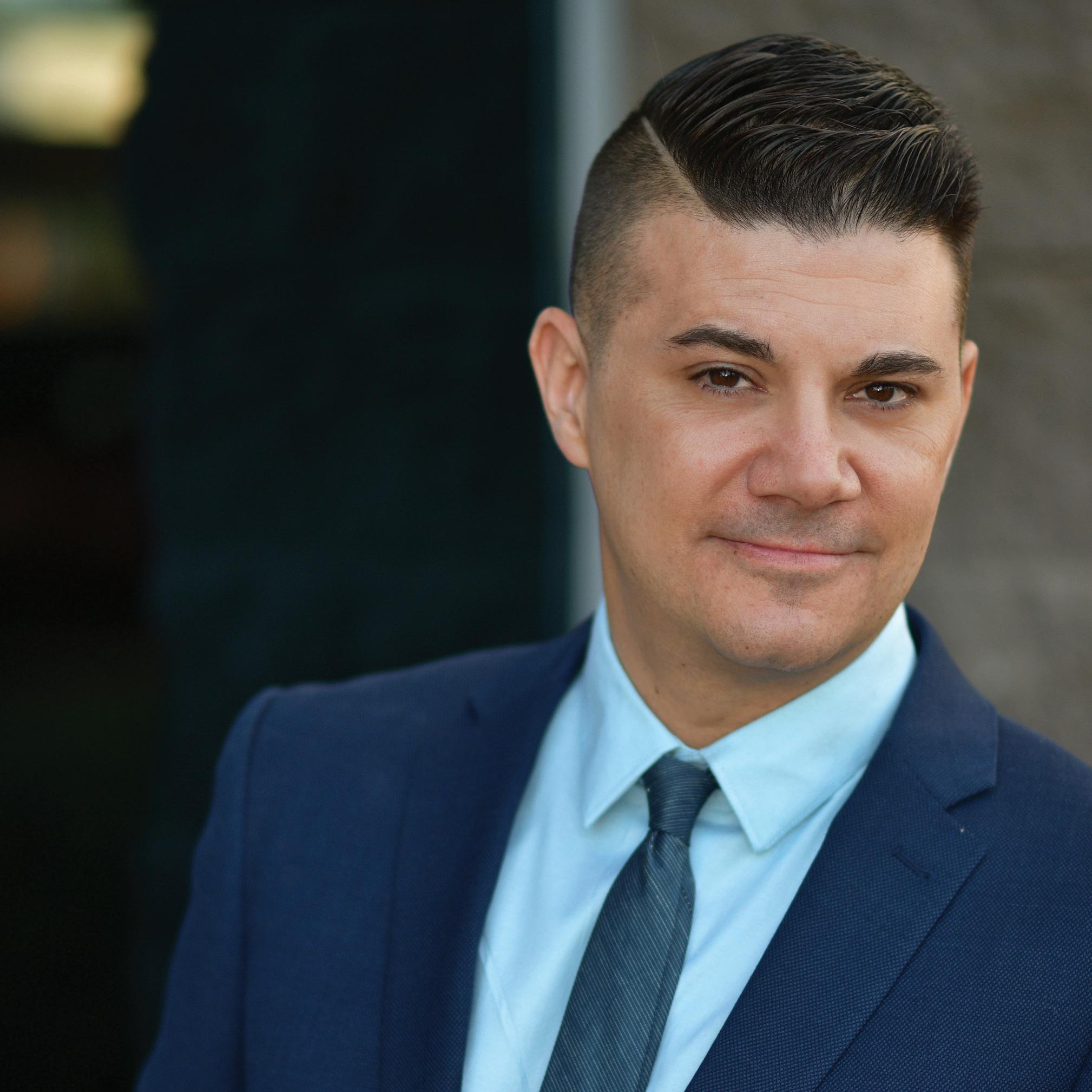





nouncer stands along the route. The script is based on descriptions from the entrants.
“It takes 14 hours just to write the script,” said Schmitt, a former writer and editor for his St. Norbert College newspaper the U.S. Navy. He remains on the board of the U.S. Navy Board of Public Affairs Association.
Among the early entries were the marching bands of Desert Vista and Mountain Pointe high schools, various dance groups, boys and girl Scout troops. The Shriners serve as the parade finale.
One of the longest-running participants, Mountain View Lutheran Church, is bringing its float to the Easter Parade its Ahwatukee Preschool students will ride decorated bikes and wagons and hand out candy.
Mountain View Lutheran has participated in all 47 Easter Parades.
A first-time float this year will be manned by Ahwatukee’s Corpus Christi Catholic Church.
Though members of their Knights of Columbus Color Guard have marched for many years, this is the inaugural year for the church to enter a float. The Knights Color Guard, with members from four parishes, will be marching again.
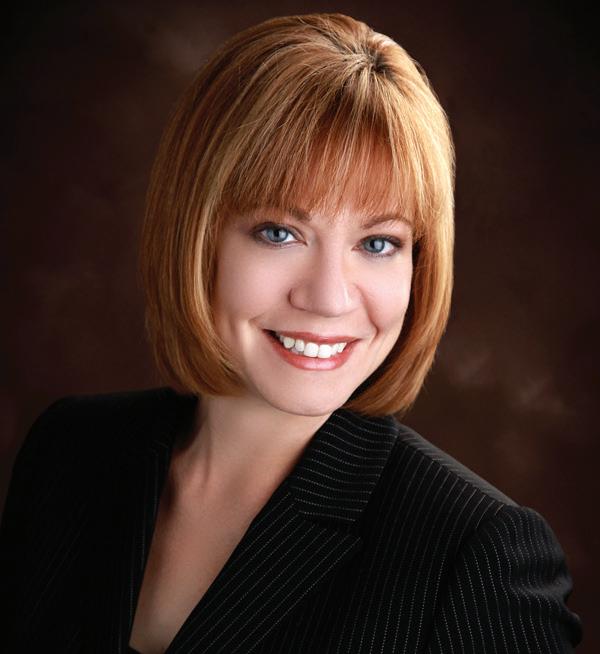

rade and Spring Fling and have great childhood memories of it, and now they’re volunteering to help out.”
She said there are more food options this year from local restaurants and new food trucks, Green Chile Love and Sweet Magnolia Smokehouse and local favorites like Yoasis and Smallcakes.
“I’m especially excited about getting the chance to showcase a wide variety of local businesses and some really gorgeous jewelry and craft items,” Dutton said.
Although adults and parents will find plenty to entertain them, Dutton said the focus remains on giving the younger visitors a good time.
“True to the Kiwanis mission,” she added, “it’s all about the kids so we’ve got bounce houses, an Easter egg hunt, face painting, two different interactive STEM activity booths, animal friends and more.”
The two Ahwatukee churches go back to 1985, when Corpus Christi parishioners, awaiting the completion of their edifice, accepted Mountain View’s offer to make use of its facility.
Another new addition this year is Ahwatukee family operated Spencer 4 Hire
Roofing, which staked a claim to the Grand Sponsor slot held for years by Vision Community Management.
“We’re trying to be more active in our community, more involved, and make sure we give back where we can,” said owner Nathan Spencer.
“We work the whole Valley, but much of our business is right here in Ahwatukee,” Spencer said. “We love our Ahwatukee community. That’s why our office is here.”
One perk for the Grand Sponsor is hosting the only adult Easter Bunny costume allowed in the parade. At press time, it was not yet determined who among the three family generations at Spencer 4 Hire Roofing do the honors.

Immediately following the nearly milelong parade is another family- tradition, the Spring Fling.
Leading behind-the-scenes work for the Kiwanis Club’s largest fundraiser of the year is four-year Kiwanian Holly Dutton, stepping in for long-time member Andi Pettijohn, who led the event for more than two decades.
Dutton said attendees will find a wealth of activities, food and fun during the Fling, 11 a.m. to 4 p.m.
“The Spring Fling is a long-standing Ahwatukee family favorite, going since 2004. The club is proud of our long-time involvement with this event, and the way it brings so much fun to our local families and kids,” said Dutton.
“We have volunteers this year who’ve said they grew up going to the Easter pa-
All of the proceeds benefit children and youth in Ahwatukee and surrounding communities.
Hosting the largest and oldest community event is a Herculean task for the 35-member Kiwanis Club of Ahwatukee, which depends entirely on volunteers for these Easter weekend events and others the club sponsors to help children and teens throughout the year.
Founded in 1982, the Kiwanis Club engages in charitable projects year-round.
They include the Foster Teens Thanksgiving and Christmas events, Back to School Shopping Spree for economically disadvantaged children, the Community Baby Shower and others.
Schmitt, who volunteered with the Easter parade for 13 years prior to his three decades as Parade Boss, explained his own involvement:
“As a 44-year resident of Ahwatukee, I’ve seen the happiness in children’s faces when they line up in the staging area before the parade. They’re dressed in colorful outfits, wearing sequined dance costumes or carrying their musical instruments. ...It’s their time to shine in the bright sunlight while marching along 48th Street to the cheers of family and friends,” he continued. “Their memories of the parade will last for years and then passed to their children. I’ve seen it happen.”
Information: AhwatukeeEasterParade.com To learn more about the Kiwanis Club of Ahwatukee: AhwatukeeKiwanis.org. Both volunteers and sponsors are still needed.





Open up to an entirely new way to look at luxury. Milgard Moving Glass Wall Systems are an innovative solution that blurs the line between inside and out of the question. Aspirational yet realistic, this sliding wall seamlessly transitions between dreams and reality. Create a vibrant mural of the outdoors on your wall. Large sliding glass panels offer sweeping outdoor views, flooding the room with natural light and fresh air.
Open up to an entirely new way to look at luxury. Milgard Moving Glass Wall Systems are an innovative solution that blurs the line between inside and out of the question. Aspirational yet realistic, this sliding wall seamlessly transitions between dreams and reality. Create










SAL from page 1
Those victories came despite a pugnacious posture on the council that earned him no small number of political enemies.
Those enemies included some of his more liberal colleagues who opposed – among other things – his unwavering and vocal support of police; developers that tried to pick taxpayers’ pockets for costly incentives; and city worker unions, which launched a quickly sputtering effort in 2011 to recall him for trying to cut their benefits.
As unabashed as he is of those fights, DiCiccio is even prouder of his accomplishments in office, both city-wide and for Ahwatukee.
“There isn’t one thing out there that I haven’t touched – not one positive direction that we’ve been in,” he boasted in an interview about his impact in Ahwatukee.
Yet, he also stressed the credit is not his alone: “It was always done with other people.”
Asked what he was proudest of, he seemed unable to single out just one or
even a half dozen actions.
Instead, he produced a mind-boggling 17-page list of accomplishments he either initiated or helped drive to fruition.
On the city-wide front, they range from helping to streamline city permitting and inspection processes to speed up business and job development in Phoenix and strengthening PhoenixMexico business ties to a string of battles over city spending.
“I’ve always been in a battle, so it’s never easy,” he said. “I’d say taking on the downtown power brokers was the most challenging time of my life.”
In Ahwatukee, his list covers accomplishments big and small, touching a gamut of landmarks like the Preserve, the Loop 202 South Mountain Freeway, Pecos Park and the Warner Elliot Loop, as well as little-publicized improvements to parks and helping to get various community activities off the ground.
He also cites a number of accomplishments that he helped move off the drawing board and into reality that may not be known in Ahwatukee but meant a lot
see SAL page 19
est source of misconduct reports to the board’s Investigative Unit come from school officials at 43%, followed by the Department of Public Safety, 34%.
And 13% of the cases come to the unit’s attention from parents, Google alerts and traditional media sources.
School personnel are required to report instances of misconduct to the board’s Investigative Unit. The public can submit a complaint at azsbe.az.gov/educatordiscipline.
The report noted that the board can only take action against individuals who are employed in a district or charter school in Arizona.
If, for example, a teacher is employed at a private school in the state and commits a violation, the board is unable to prevent the educator from legally obtaining another teaching job in the state, the report added.
To ensure student safety, the board provides a list of educators who were disciplined at its most recent meeting to schools.
And before hiring both certified and non-certified educators, schools are re-
quired to check the Arizona Department of Education’s public and internal systems for possible discipline or open investigations for immoral or unprofessional conduct.
The board’s Educator Discipline Lookup system allows public access and is also used by school districts such as GPS and Higley Unified School District
“We check each certified candidate’s certification and look for any possible discipline or open investigations,” HUSD spokeswoman Teresa Joseph said. “Once reviewed, a copy is made and placed in the candidate’s file.”
GPS’s spokeswoman Dawn Antestenis said it’s a tool the district uses in hiring employees.
“We find it helpful as it notifies us of any criminal or disciplinary history for candidates,” she said.
Additionally, the two districts ensure that their certified and classified candidates have a valid IVP Fingerprint Clearance Card and pass a required background check.
The hiring procedures in place for both also include formal interviews, reference and background checks, certification checks and candidate recommendation.
to residents in District 6’s other villages.
Among them are a successful fight to stop a planned reduction of Central Avenue’s lanes, helping to save Phoenix Memorial Stadium and Papago Park and water infrastructure improvements in Camelback Village.
All in all, not bad for the son of Italian immigrants who couldn’t speak English when he started first grade at the now-gone Isaac Elementary School in Maryvale, where his parents first moved not long after he was born in Youngstown, Ohio.
Indeed, one accomplishment he seems particularly proud of is being a faithful and loving son; choking up a bit when he briefly spoke of his parents during the interview.
“My mom and dad, I’m really proud of,” he said, crediting them with a work ethic that drove his ambition in college as he majored in business. “They had a sixth grade and a fourth grade education and I was the first to graduate from junior high school, high school, college.”
DiCiccio was working in real estate when he settled in Ahwatukee in 1986 and began working with some of the community’s pioneers – people like Ahwatukee Foothills News founder and long-time owner Clay Schad; Rick Savagian, owner and founder of Mountainside Martial Arts, Ahwatukee’s oldest business; and Realtor Chad Chadderton.
“We all worked together as a team. Everything had to require teamwork back then and it still does.”
Together, that foursome started the Ahwatukee Foothills Chamber of Commerce in 1994 and worked to fund the Fourth of July fireworks spectacular that continued for several decades until the development of the South Mountain Freeway killed the hugely popular tradition in 2017.
DiCiccio had been bitten by the politics bug in the early 1990s, he said, after Schad and Savagian told him “we need someone on council to look after this area, someone who’s focused on our community.”
“We had only 25,000 people in Ahwatukee back then – maybe only 15,000,” he recalled. "It was such a low number There was really nothing developed west of, let’s say 36th Street.”
He jumped into the 1993 campaign, winning 51% of the vote in a four-man race.
And it wasn’t long afterward that he put on the gloves for his first fight with the city and developers.
“When I first took office, there were 11,000 or more apartment units planned for the area. So I started to push for down-zoning to single-family homes. I went to all the property owners in the area and said, ‘Look, housing is better. Why don’t you rezone your property? Maximize your money right now to get homes built.’
“Even in Lakewood, you would have
see SAL page 21
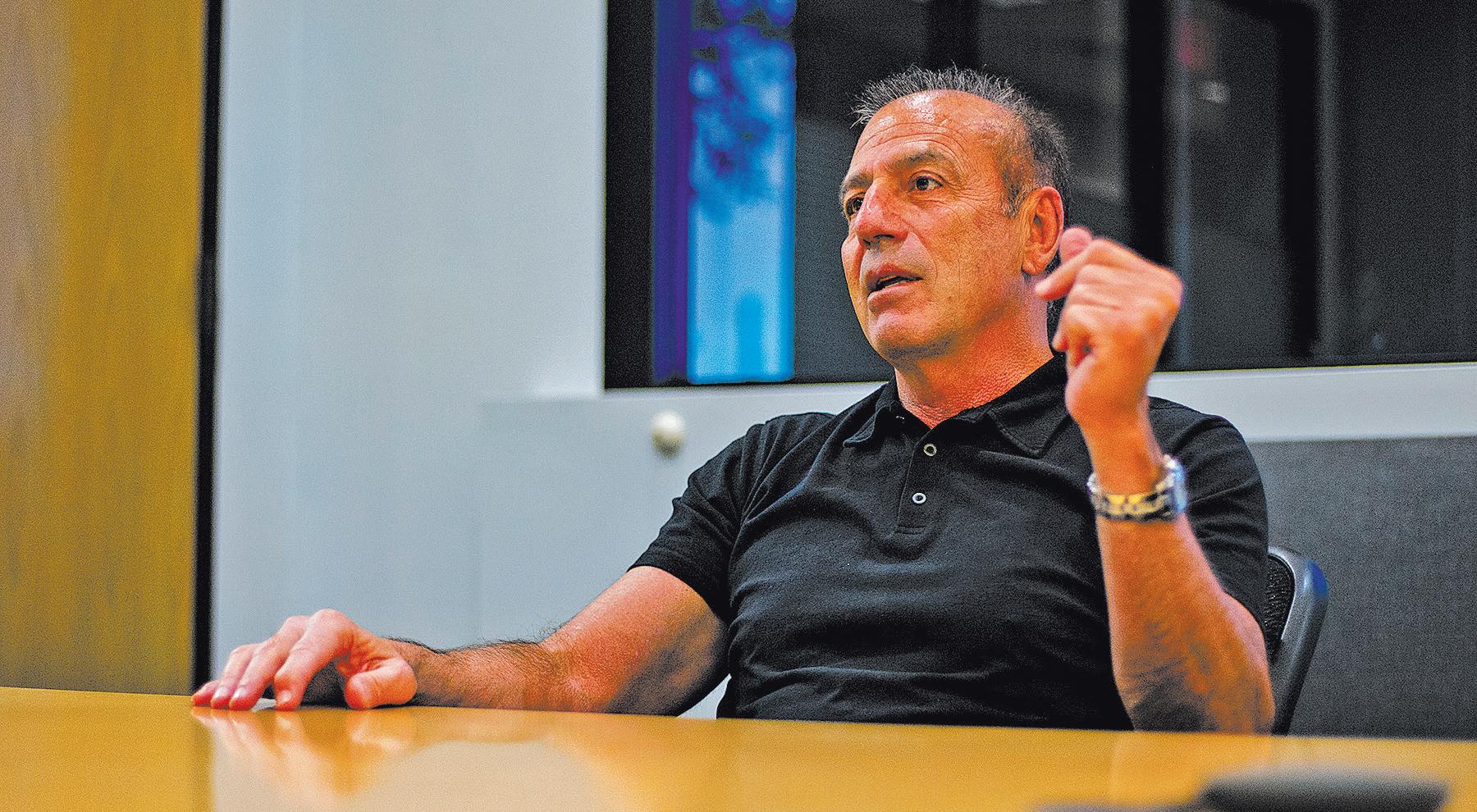
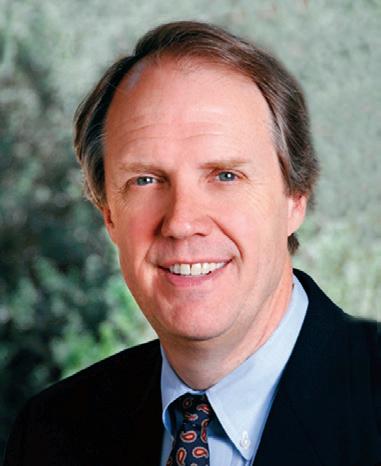








had thousands more apartments there if we hadn’t brought in more single-family homes, and we did it.”
On the flip side, DiCiccio said he also led an effort to develop small businesses and strip malls in Ahwatukee so that residents didn’t have to cross I-10 as often for basic necessities. One achievement in that category involved leading the negotiations with the owner of the junkyard that once existed at 48th Street and Ray Road.
That helped transform the area into the successful shopping district it is today. At the same time, DiCiccio collaborated with Vestar to bring the AMC Ahwatukee 24 to the community and later, he persuaded it to donate land at the same intersection for Phoenix’s first police substation.
Helping Ahwatukee play
DiCiccio’s very first pro-Ahwatukee project, however, was mid-wifing the development of Telegraph Pass Trail. He negotiated a deal with one of Ahwatukee’s early developers, Del Webb, to donate 12 acres of new Preserve land

and pay for the trailhead parking lot and water fountain as well as the trail itself.
That was the first of several major efforts he spearheaded to enhance the South Mountain experience. He worked with the Club West HOA to create the Bursera Trailhead at 19th Avenue and Chandler Boulevard, complete with a
parking lot.
He successfully pushed the city to acquire another 140 acres in that same area for Preserve land and protect it from development.
He also prodded the city Parks and Recreation Department to make significant improvements of the Warpaint

Trailhead – where he also a few years ago stopped in its tracks a homeowner’s illegal effort to prevent hikers from parking along War-paint Drive right near the trailhead.
The Preserve wasn’t the only land DiCiccio helped preserve for the community’s play and recreation.
Though he doesn’t take credit for the idea of creating Pecos Park, DiCiccio took charge of finding money to develop it.
“I inherited dirt,” he said. “We had no money.”
When he was told the city administration had squirreled away some $2.5 million in developer impact fees, DiCiccio was able to direct that to develop the 80acre park.
The development of the park itself was followed by his successful effort to land a community center for Pecos, then the addition of a senior citizens center – Phoenix’s first – and, only a few years ago, the 16-court pickleball complex –the city’s largest.
Other recreation areas in Ahwatukee also were born or enhanced because
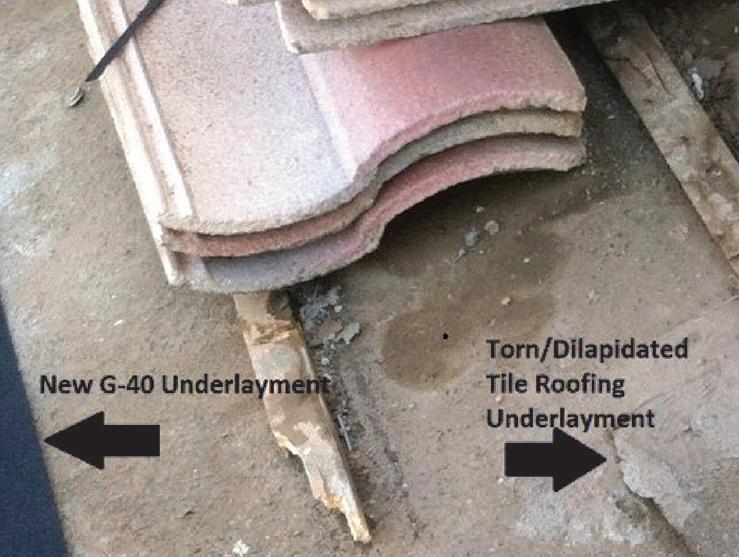
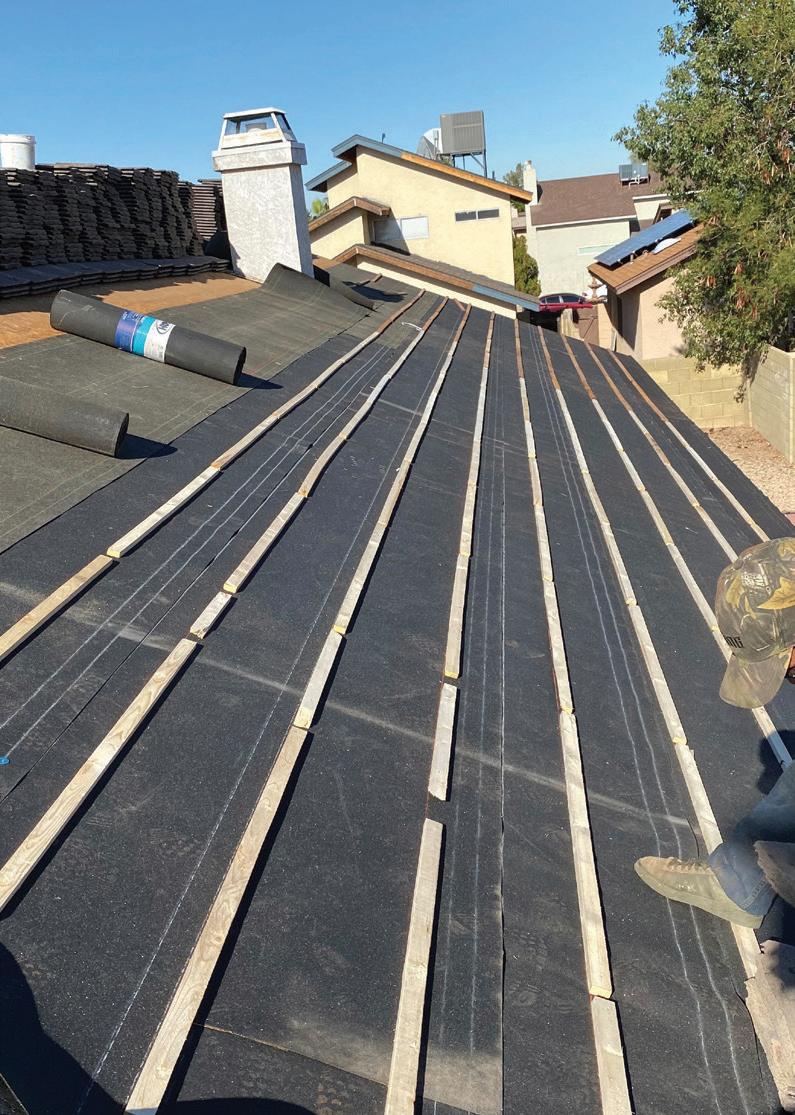
He won’t have much more official influence on Phoenix’s budget much longer, but during council’s preliminary discussion Feb. 22 of the 2023-24 spending plan, Councilman Sal DiCiccio had some advice and a warning on an item that has long been a big concern for him.
That item is the $3.5 billion Phoenix owes the Public Safety Personnel Retirement System for police and firefighter pensions.
The unfunded liability – which does not include new payments into the fund that come due every year – comes close to half the total $8.84 billion owed by 300 Arizona municipalities for public safety pensions.
Like many municipalities last fiscal year, Phoenix took advantage of unexpected revenue increases to put down an additional $65.6 million on its unfunded liability – by far the largest among all the municipalities that owe the PSPRS.
But that additional payment was a drop in a bucket. Former Phoenix City Manager Ed Zuercher warned two years
SAL from page 21
of DiCiccio’s efforts in the corridors of City Hall: 27 trees and a new playground at Western Star Park, a brandnew playground at Mountain Vista Park, the recent conversion of tennis courts at Desert Foothills Park for dual use as pickleball courts; and a playground at Vista Canyon Park with loads of features for kids.
Many of DiCiccio’s fights with the Phoenix administration and some of his council colleagues occurred on the bigger stage of City Hall and many of them involved taxpayer dollars.
Often he was a lone wolf – or one of a small pack of lone wolves – who didn’t have the votes to block expensive developer-friendly deals.
Such was the case with the 1,000 room downtown Phoenix Sheraton Hotel,
ago the debt could come back to bite the city if it encountered a big drop in revenue in the future. Though city officials and their advisors see no such calamity on the horizon, Zuercher remind the council that the unfunded liability is a legal debt that might have to come first before almost any city service.
In other words, if circumstances required, the city would have to cut services to citizens and keep paying the public pension debt if it faced that kind of stark either-or decision.
Jeff Barton, who succeeded Zuercher, told council in a February memo on the 2023-24 budget that the city’s overall pension costs – not just the unfunded public safety debt – “have consumed a growing share of the city’s General Fund resources” since 2007-08.
“This increase is primarily caused by rising costs in public safety pension,” Barton wrote, echoing his predecessor’s reminder that “the City is committed and legally required to pay 100 percent of our actuarially required contribution every year.”
He praised the council for adopting a pension funding policy annually as re-
quired by law and its reform of Phoenix’s separate pension fund for civilian employees, stating that the latter “is helping to stabilize civilian pension costs.”
Yet, he added, “While reform efforts have been successful for the Public Safety Personnel Retirement System (PSPRS), there still exists a significant unfunded sworn pension liability.”
During the Feb. 22 hearing, DiCiccio amplified that concern and suggested the city take its projected $134 million surplus from this year’s budget and “allocate a big chunk of that” to an additional paydown on its unfunded liability.
“I think we’d be a benefit to everybody,” he said. “For every dollar we put into the pension debt, pay it down, that stays of 7.4%. That’s a big return even in this market here where we have rising interest rates, but a 7.4% return for every dollar we invest into paying down our pension debt leaves us better off.”
He also said that a somewhat more aggressive reduction of its staggering public safety debt “could provide a security blanket” for retired public safety workers “to know that we’re focused on their pension.”
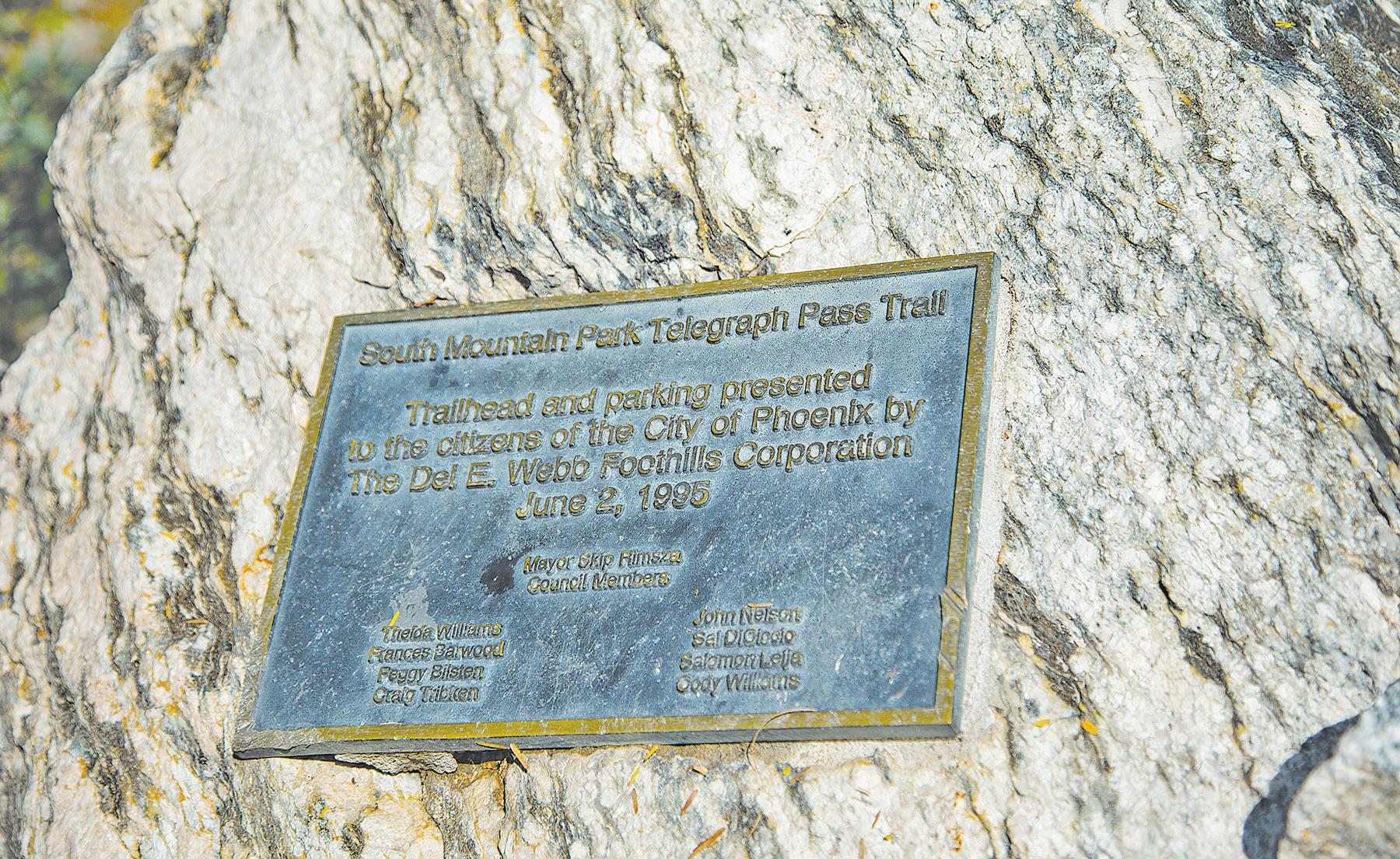
which ultimately cost taxpayers tens of millions of dollars in operating costs before the city finally sold it in 2017 for $50
DiCiccio also called a more aggressive approach to whittling down Phoenix’s unfunded pension liability “is fiscally prudent.”
“For every dollar we have to pay out in pension debt and cover unfunded liabilities, that’s one less dollar for services.”
“Now I know it’s not sexy,” he continued, “but what it does is provide longterm security and financial stability for our city and for our citizens.”
“We’ve seen this across the country, where cities, primarily in the East, have neglected their pension, then they ended up having financial issues and they just don’t have enough money.”
Praising Barton for “doing an amazing job” as city manager, DiCiccio warned, “We’re going to leave our children and their children’s children not a very good legacy and as parents, and as adults, we always want to leave a better situation.” Neither Barton nor DiCiccio’s colleagues on council continued that line of discussion as Mayor Kate Gallego moved the focus of the meeting to the state Legislature’s efforts to cut various taxes imposed by municipalities.
of life.
Such was the case with DiCiccio’s involvement with golf course owner Wilson Gee.
DiCiccio was a vocal critic of efforts by Gee and his business partners to turn the Ahwatukee Lakes Golf Course into a residential community and Gee’s 2016 decision to end irrigation of the Club West Golf Course.
Because both sites were privately owned, DiCiccio couldn’t do much beyond putting the community’s spotlight on them.
Attorney Tim Barnes and his two homeowner clients ultimately stopped the Lakes’ conversion to homes.
But DiCiccio does take credit for pushing through an ordinance that stopped Gee from surrounding the Lakes course with barbed wire.
million less than it paid for it.
In Ahwatukee, the fights often involved the community’s character and quality
“I started working with him to try to
find ways to make things compatible,” he said. “But he wanted to develop it all out. Then he put up the barbed wire fence, so we created a new ordinance.”
“I realized he was trying to create a war in the community and I was not going to allow that, so I fought him on everything because it was so disrespectful to those old people who live in that community.”
DiCiccio said he couldn’t do anything with the Club West course, which Gee sold to four businessmen who have been locked in litigation with a homeowners group ever since they bought it over three years ago.
Though he thinks the owners’ proposal to restore the course but sell parts of it for housing development “is a win in that community,” he said:
“The problem is you’ve got people now emotionally invested and when people let their emotions get in the way, they don’t make logical decisions that are long-term. …You have to have an acknowledgement that everybody has a right. It’s never 100% one way. Even people that own property there still don’t have a right to do every single thing that they want to do.”
DiCiccio was more instrumental and successful, however, in other fights involving Ahwatukee directly.
For example, he led the effort to make South Pointe Parkway a public thoroughfare after learning the owners could restrict it to private use at will.
One of his biggest fights involved the South Mountain Freeway.
Freeway fight
DiCiccio was part of a broad coalition of prominent local officials and community leaders who waged a years-long, ultimately unsuccessful fight to stop the freeway and then ease its impact on the community.
The group included former state representatives Jill Norgaard and Bob Robson and, later, former Sen. Sean Bowie; the grassroots Ahwatukee-residentsdriven Protect Arizona’s Resources and Children and their lawyer Howard Shanker; and now-former HOA presidents Mike Hinz of Club West and Bill Fautsch of Foothills.
One accomplishment DiCiccio led in the freeway fight involved a utility road near 32nd Street that the Arizona De-

City workers launched a recall effort in against Sal DiCiccio in April 2011 after he led a move to cut their benefits. They started their petition campaign after discovering he had been working with Republican state legislators on a bill that would have required Phoenix to seek bids from private contractors for city services. The recall fizzled for lack of enough petition signatures to make the ballot and then-Gov. Jan Brewer vetoed the bill, though both sides accused each other of hurting taxpayers. (AFN file photo)
partment of Transportation planned to open only for its crews.
He led a delegation of officials that negotiated to allow city first responders to use it, providing a vital emergency access to Desert Vista High and other nearby schools that otherwise would not exist if fire or police crews needed to bypass Ahwatukee streets to reach them.
“I was never a fan of the freeway,” DiCiccio said, adding that his lobbying helped persuade ADOT to locate its path a bit farther south and away from more Ahwatukee homes.
“I wanted to make sure that all the homes were protected,” he said, noting his campaign for high sound walls to reduce the impact of freeway noise on adjacent residential neighborhoods.
He also was an early proponent of the multiuse recreational path running alongside the freeway.
“That was a thing that the cycling community wanted,” he said. “I’m not a cyclist but I love those guys because it shows you have a good community whenever you see bikes on the street. It shows people want to be outdoors. It’s intrinsic to what (a community) is.”
Looking at the freeway now, DiCiccio conceded, “ADOT did an amazing job. I know people complained about them. But the State of Arizona and ADOT did
reduce speed on the boulevard because five members “didn’t want to stop development.”
But two weeks after a 5-4 vote against his measure, council reconsidered and passed it after DiCiccio continued to harangue his colleagues. “I told them people are going to die.”
While he has been almost strident in his denunciation of groups seeking to reduce funding for Phoenix Police, DiCiccio said he has developed a respect for a leader of that movement on council – South Phoenix Councilman Carlos Garcia, who lost his bid for reelection last month and will be exiting City Hall the same day DiCiccio does.
“I like Carlos,” he said. “He’s anti-police. He’s a socialist – all that, right? But we actually get along very well.”
Even in his final months in City Hall, DiCiccio made public safety in Ahwatukee a top priority.
an incredible job. I want to make sure they get kudos for the work that they did on that. They built the walls high enough, you know, for sound even though you never have 100%. But they did a lot of work to try to mitigate all the problems.”
“The one thing that bothers me,” he added, “was the cut they made through the mountain. I’m very protective of our mountains, and our preserves. The cut in the mountain was a big deal.”
DiCiccio also has been a vocal proponent of public safety and his presence on social media in that arena has intensified over the past few years in reaction to the so-called “defund police” movement.
His support for police and concern about public safety, though, date back to his early years on the council where Ahwatukee is concerned.
He recalled how in the community’s early years, the absence of any development in the community’s western half made Chandler Boulevard a popular strip for drag racing. “I wanted to shut it down because these kids were going out there and they were racing cars,” he said.
Initially, he recalled, he couldn’t get majority support on council to
He persuaded Mayor Kate Gallego –with whom he has frequently locked horns – to join with him in lobbying the administration for funding a fourth fire station in under-served far-west Ahwatukee.
City Manager Jeff Barton agreed to include money in the coming 2023-24 capital budget to build the fire station on city-owned land on the northwest corner of 19th Avenue and Chandler Boulevard within the next two years.
Moreover, Barton also gave in to their request for funding in the coming fiscal year to train the personnel that will staff it.
The unprecedented action means that when the station opens, it will immediately be ready to serve the community with a full crew.
DiCiccio said that when he drives through Ahwatukee, nostalgia mingles with a sense of pride.
He makes no apologies for being the community’s megaphone in City Hall and helping to rally Ahwatukee leaders to pressure officials to fund improvements.
“We had to become so vocal that you could get the attention on the city staff, the attention of the mayor.”
Throughout Ahwatukee, he sees intersections that now have signals that might not have been there had if he had
Now under the pressure of a judge’s order to clean up a homeless encampment called The Zone in Central Phoenix, city officials plan to spend $35 million to create 800 new shelter beds in the 2023-24 fiscal year in addition to the $140 million already allocated or spent on shelter and other services for people with no home.
That funding does not include another $7.4 million in the $500 million General Fund bond the city is expected to put before voters this November. That funding would largely be spent on problems the city says often trigger homelessness.
Nor does it include another $63 million earmarked in next year’s budget for other housing and human services directed to people without homes, according to the Trial Budget for the fiscal year beginning July 1.
Part of the information on the city’s huge expense in addressing soaring homelessness is in a report to City Council that came within days of Superior Court Judge Scott Blaney’s order last week that directed the city to clean up a 10-block encampment where more than 1,000 people live.
It also came during the same week that Gov. Katie Hobbs vetoed a Republicandriven bill that would have made it a crime to erect a tent or other makeshift shelters on sidewalks, alleyways, streets, parkways and other public rights-of-way.
Blaney ruled in favor of business owners and homeowners in or near The Zone who complained that the increasingly violent area is subjected to almost no routine police patrols.
He noted that the plaintiffs “allege that the City refuses to enforce criminal and quality-of-life laws” prohibiting a range of crimes ranging from drug use and disorderly conduct to domestic violence.
‘The city argues in response that it has discretion regarding how it enforces its policies and which policies to adopt and that such issues are therefore not appropriate for judicial review,” he wrote.
“The Court disagrees.”
The Zone roughly is bordered by 7th and 15th avenues and Van Buren and Grant streets. Included in the 13-acre area is the 18-year-old Human Services Cam-

pus, where 15 different agencies provide various services in seven buildings.
The judge noted that the ramshackle tent city didn’t spring up in that area until 2018 and that it has steadily grown under a perfect storm of drug use and increasing housing inaccessibility.
The judge also noted that despite a police commander’s testimony that officers are not permitted to enforce many laws in The Zone, “this testimony is directly contradicted by the City’s state policy positions” and “appalling conditions that continue to deteriorate."
In a searing front-page story March 19, the New York Times reported that in 2022 within a half-mile of a restaurant owned by one of the plaintiffs in the suit, “there were at least 1,097 calls for medical assistance, 236 trespassing incidents, 185 fires, 125 armed robberies, 13 sexual assaults and four homicides.” In addition, police found the charred remains of a fetus and reported 16 deaths related to suicides, overdoses or weather-related causes.
Calling the Zone “a public nuisance,” the judge also noted that city officials have “refused to pursue” a “viable, costeffective option” of creating “structured campgrounds.”
He ordered that the city show on July 10 “the steps it has taken and the material results it has achieved” by clearing the area of tents and “biohazardous materials
That includes: about $140 million “allocated for current and future shelter, rapid rehousing, navigation services, case management, mental and behavioral health, and weather respite;” 800 new shelter/ transitional beds expected to be added by 2024, 125 new affordable housing units expected by 2024; and $63 million for other housing and human services.
The $7.4 million in the bond proposal would “ensure vulnerable populations can continue receiving vital services at risk due to expiring or reduced grant funding.”
including human feces and urine, drug paraphernalia and other trash and individuals committing offenses against the public order.”
There was no indication yet as to whether the administration will appeal the order.
While last week’s report to City Council did not mention Blaney’s ruling, it detailed the efforts and future plans of the city Office of Homeless Solutions.
That office “has facilitated 800 new indoor shelter beds to the community to be added over the next year and a half, in addition to the 592 beds already in process,” according to the Trial Budget for 2023-24.
The Trial Budget proposes that the supervisor of that office be elevated to a position of assistant to the city manager at an annual salary of $213,000.
The Office of Homeless Solutions was created last fall and its ranks were expanded from 13 to 22, “resulting in an improvement in responsiveness to people experiencing homelessness, better use of data, greater contract oversight, and improved communication with the City Council and the community,” the Trial Budget states.
“In addition to the investments in the Trial Budget, City Council has also approved funding or directed staff to implement other projects to address this issue,” the spending proposal states.
Those programs – including the LowIncome Home Energy Assistance Program, the Victims of Crime Act and expanded Behavioral Health Engagement Teams – “are essential in the continuation of outreach to areas of the City experiencing high instances of substance abuse, behavioral health issues and homelessness, as well as managing domestic violence and sexual assault referrals while maintaining acceptable response times.”
That money also would be used to expand PHX C.A.R.E.S. – and acronym for Phoenix Community Action Response Engagement Services – which operates at several city shelters.
“Additional funding and partnerships with the state, county and non-profit organizations are being actively pursued to increase collaboration and resources to help individuals experiencing homelessness,” the Trial Budget states.
Last week’s report to the city council said the city created 592 new shelter beds last year at four different sites and “the total new beds to be created from 2022 through 2024 is 1,392.”
It also said that between May 13, 2022, and March 10 of this year, three cityfunded shelters with a total 417 beds were used by 1,422 homeless people. All three shelters were slightly above capacity at the time of the report.
The $35 million earmarked in the Trial Budget for new beds in the coming fiscal year would include $12 million for 280 city-operated beds expected to be available by the middle of this year.
The remaining $23 million would be divided among nonprofits – including CASS, Lutheran Social Services, Community Bridges, St. Vincent de Paul, Salvation Army and UMOM.
not lobbied for them, trailheads where parking lots brim with hikers’ vehicles, business areas that once were barren desert.
And he is proud of some things he does not see in Ahwatukee, those he fought against.
“I cannot look back and say there’s one thing that I wish I would have established in Ahwatukee that’s not already there,” he said.
He’s proud of the people he appointed to the Village Planning Committee, although their continuation on the panel will be up to Robinson after he takes office April 17.
On a city-wide basis, DiCiccio said that as a citizen, he will have the same concerns about excessive spending and debt that he had as a council member.
He said Phoenix is fortunate to have a city manager like Barton, praising his fiscal prudence. But he worries council will continue to ignore issues like the $3.5 billion unfunded police and fire pension liability.
DiCiccio also worries about police
morale – which has driven an unprecedented vacancy in their ranks – and fears it will continue to erode unless the department has a champion on council as vocal as he has been.
“I’ve been defending them since 2019,” he said. “We’ve had multiple people come into chambers – and still do –talking about how police are rapists and murderers. I pushed back hard on them because the police have to hear that. No one else on the council was saying anything positive about the police and it was embarrassing to be up there, quite frankly, and see these constant attacks and nobody defending them.”
Asked about whether a run for another public office is in the future, DiCiccio replied:
“Everyone asks me that. And the answer is, I don’t know. I don’t want to say yes. I don’t want to say no. You know, I’m really sad. I’m really very proud of the work I did there. I’m extremely proud.”
He’s also proud if people also remember him as a populist on City Council.
“I’m a Republican. I’m a capitalist. But at the end of the day, the public is in charge.”
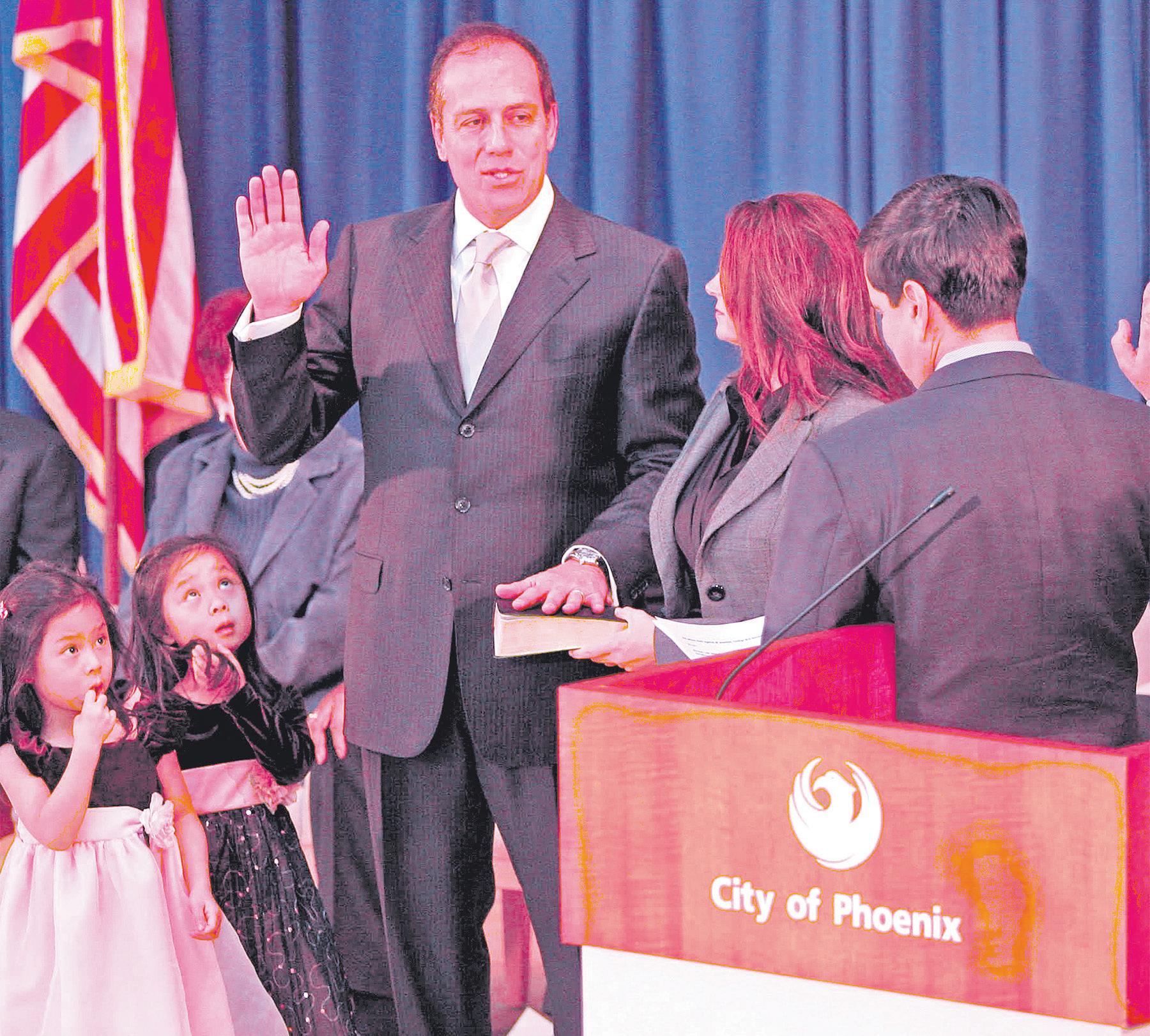




















An Ahwatukee native who headed west after graduating from Desert Vista High School in pursuit of his artistic passions has also bulked up the “novelist” part of his resume.
Josh Mendoza, Thunder Class of 2002 and son of former MLB pitcher and Ahwatukee Realtor Mike Mendoza and his wife Jude, just published his second novel, “Shadow of the Eternal Watcher.”
The book combines science fiction and detective thrillers to tell the story of a washed-out private eye framed for murder who is pursued by a deadly cabal of “interdimensional invaders.” They’re trying to kill him before he discovers that he, too, has supernatural powers.
Since he landed in Los Angeles, Mendoza has pursued twin dreams of writing and filmmaking.
He majored at Stanford University in
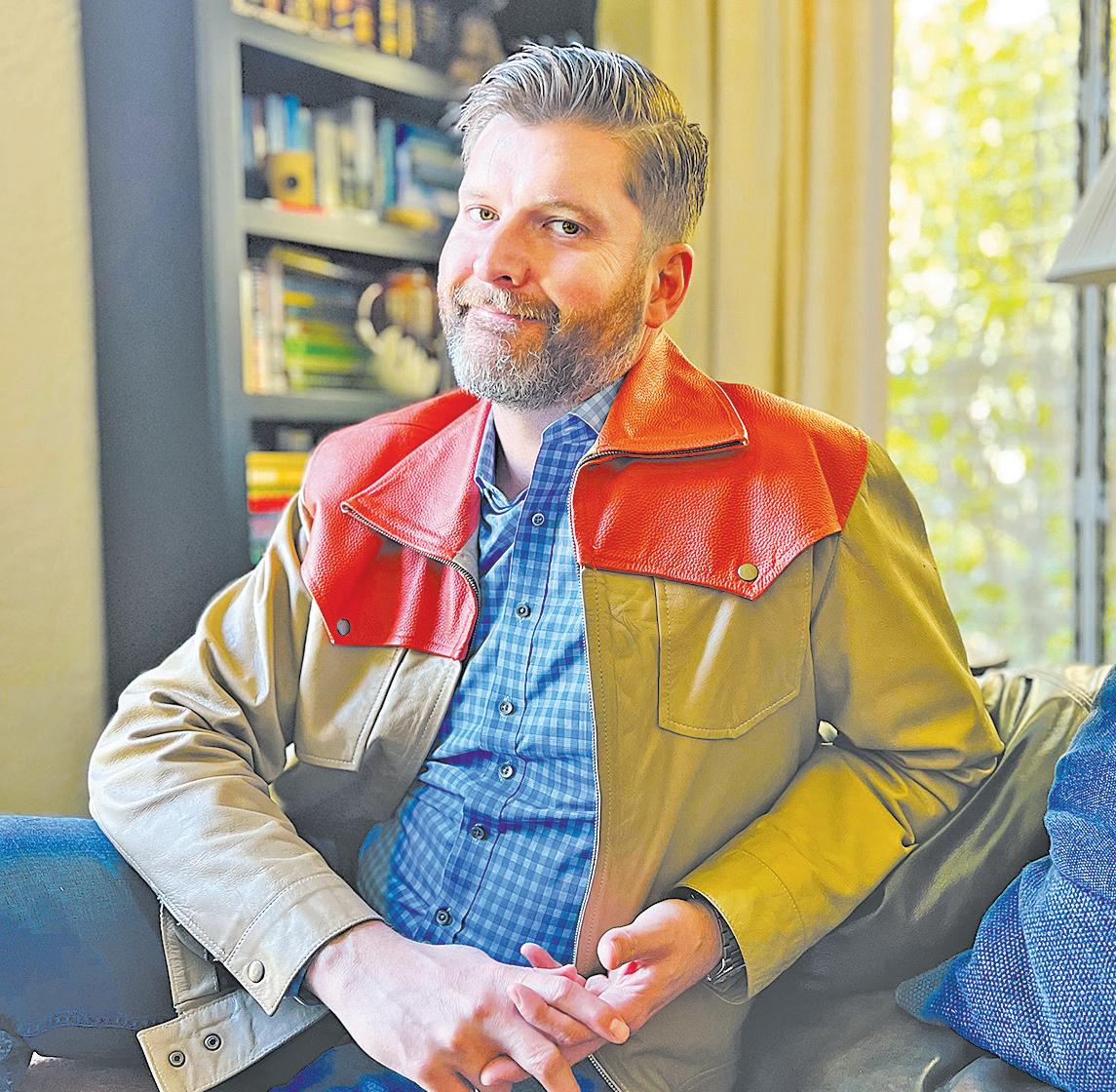
English with an emphasis in creative writing, earned a masters of fine arts degree
at the University of Southern California School of Cinematic Arts, and has been writing scripts and making movies.
Though he was involved heavily in music at Desert Vista — playing trumpet in the band, marching band and jazz band — he felt a tug to explore writing.
“When I got to Stanford, I wanted to be a writer and pursued that endeavor with an eye on being a novelist,” he told AFN when he released “I took a course my junior year that was a general overview of film noir. … A light bulb went off that I should be chasing movies with my story writing.”
Mendoza’s first novel was “Duster Raines,” which, like his new book, combines science fiction and detective
genres. Several years ago, he also released his first feature-length movie, “What Still Remains,” which has elements of both science fiction and a grim dystopian future.
Mendoza said his new novel continues his creative bent: “I love doing genre mash-ups and this was no different. It’s a noir crime thriller meets science fiction. I wanted to do a fun twist on an anti-hero finding redemption.”
“I liken it to ‘Dark Matter’ meets ‘Killing Floor’ and it plays on old tropes popularized in classic detective stories by Raymond Chandler or Dashiell Hammett –which then became great film noir works in the 50s on the silver screen,” he said.
“My novel works to turn those tropes on their head for a 21st century audience.”
“Shadow of the Eternal Watcher” is set mostly in modern-day Los Angeles and has been launched through Inkshares.
see MENDOZA page 29
Dr. Neal Lester of Ahwatukee, Foundation Professor of English at Arizona State University and founding director of its Project Humanities, has been named the 2023 recipient of the Gary Krahenbuhl Difference Maker Award.
The annual award “recognizes and celebrates faculty in The College of Liberal Arts and Sciences who personify the spirit of difference‐making demonstrated by former dean, Gary Krahenbuhl,” according to the college’s current dean, Patrick J. Kenney.
The award was established through contributions by ASU faculty, staff and supporters “the college’s professors “who are exceptional citizens of the campus and personify the spirit of difference-making demonstrated by Krahenbuhl.”
An expert in African-American litera-
ture and culture, Lester has been involved on both the campus and in the community for years in a variety of academic and humanitarian efforts.
A professor at ASU since 1997, he taught previously at the University of Alabama and the University of Montevallo, also in Alabama.
An author or co-author and editor of seven books with an extensive history in a wide range of public speaking activities, his work also has garnered a number of awards.
He created and has directed Project Humanities since 2010 in an effort to bring scholars and people from all sectors of the community to “talk, listen and connect.”
Project Humanities runs a bi-weekly Service Saturdays project, which distributes donated clothing and hygiene products collected by volunteers to unsheltered people in downtown Phoenix.
Service Saturdays volunteers connect
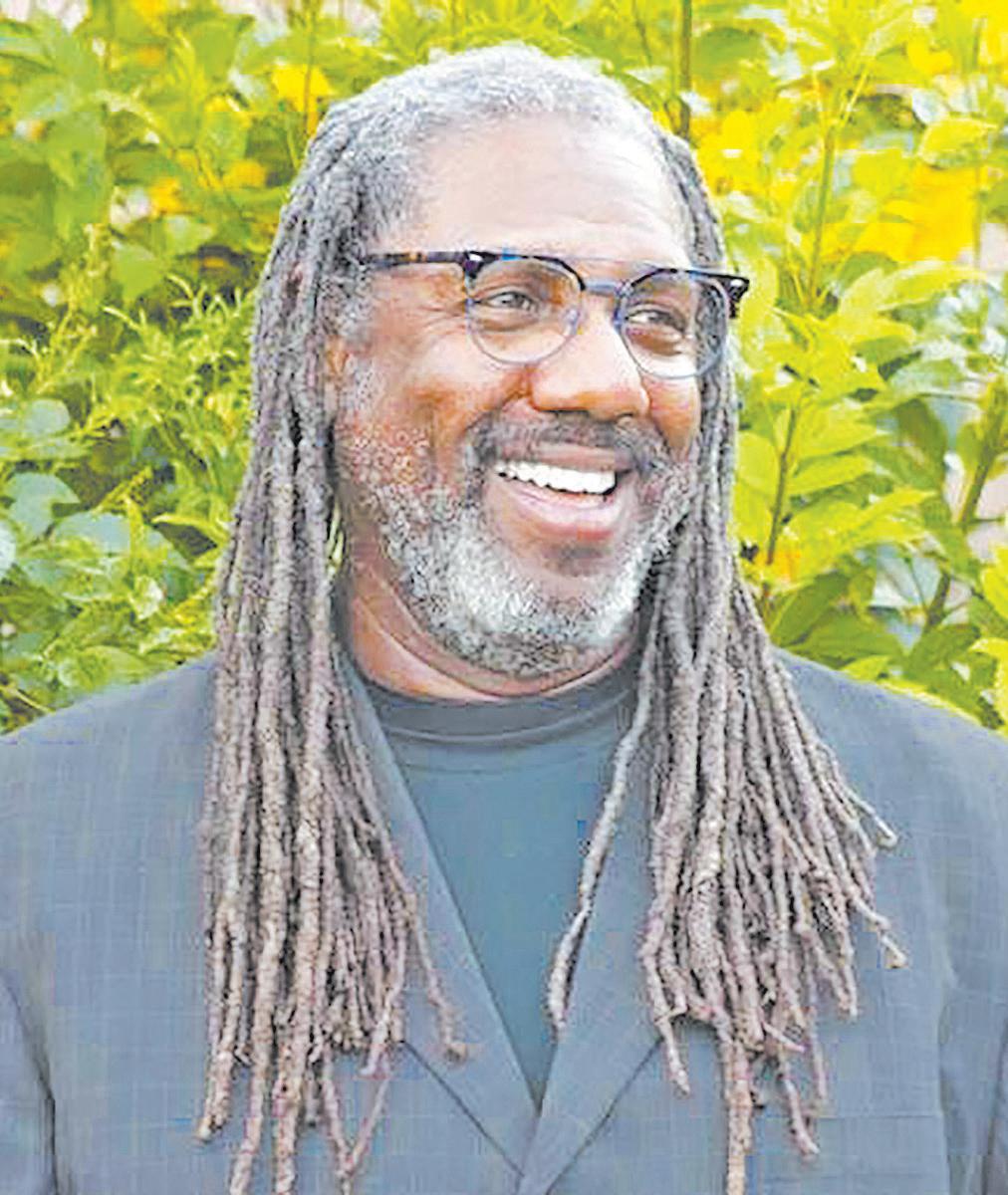
with those people, escorting them through an orderly display of clothing so they can choose what they want and need – almost
as if they were in a store.
Lester also started the annual fall Hacks for Humanity: Hacking for the Social Good, a global, 36-hour entrepreneurial marathon that challenges teams of participants of all ages and backgrounds to compete in the creation of a technical solution for the social good.
In announcing Lester’s newest award, ASU said he “created and sustained a long and distinguished faculty profile that meets” a broad set of criteria.
“Award recipients are respected scholars with a broad vision of academic scholarship; effective in the scholarship of discovery, integration, application, and teaching,” the university said.
Their activities also must demonstrate they are “unselfish and caring about the broader institution” and “have an excel-
It seems like only yesterday – though it was actually three months ago – when home prices in the Valley had dipped a bit and would-be buyers’ hearts might have fluttered.
The only thing many buyers in the Phoenix Mero area may be doing now is clutching their chest a bit, despite a dip in mortgage rates.
New data from the leading analyst of the Valley’s housing market indicate that
homesellers not only have regained their dominance but that prices have continued creeping upward and are not likely to even dip any time soon.
“Average sales prices have been rising in Phoenix over the past two months,” the Cromford Report noted as it reported stagnant sales growth reported in the S&P Case-Shiller Home Price Index for November-January. However, it noted, CaseShiller data usually lag behind local market data by several months.















Maricopa County was the fastestgrowing county in the nation last year, according to the U.S. Census Bureau.
The county added 56,831 residents between July 2021 and June 2022, bringing the county’s total population to over 4.5 million people.
It was the second straight year the county led the nation in population growth – a driver in the demand for housing and a key factor influencing the region’s chronically low housing inventory.
Census Bureau data showed that most of the population increase came from people moving into the county from other places in the United States.
Many new residents are still coming from California, according to Scott Wilken,

data advisory program manager for the Maricopa Association of Governments.
“We’re seeing more households coming from California than any other single state,” Wilken said. “The latest data shows that between 20% and 25% of people moving to the Phoenix metro area have come from California. That’s an incredible amount just from one state alone.”
There is not one place in Maricopa County experiencing significantly more
growth than any other, Wilken said.
Chris Camacho, president and CEO of the Greater Phoenix Economic Council, said a rising number of younger residents are calling Maricopa County home. Many are moving here for jobs in technology, engineering and insurance, he said.
Maricopa County remained the fourthlargest county in the nation last year,
see

“Sales pricing continues to strengthen and the average price per square foot has now recovered to the levels we saw in September and October 2022,” the Cromford Report said.
Mortgage buyer Freddie Mac said late last week that the average rate on 30-year fixed mortgages fell for the third straight week to 6.32 percent from 6.42 percent the previous week.

That’s higher than the average rate 12 months ago, which was 4.67 percent, but still lower for prospective homebuyers after a year of aggressive policy rate increases from the Federal Reserve in a bid to tame inflation.
Realtor.com said “the prospect of an outright price drop is looming on the horizon” for home prices nationally.
“One clear culprit is mortgage rates, which have more than doubled over the past year from under 3%,” Realtor.com

said. “Played out in monthly mortgage payments, financing 80% of a typical home today costs an average of $611 (or 39.3%) more, compared to just last year.
“This has put a serious crimp in what homebuyers can afford – and, in turn, is forcing sellers to lower their expectations and asking prices,” it said.
The site quoted a real estate investment teacher, who said, “Many sellers just aren’t getting what they want for their homes
right now.”
But pricing in the Valley’s housing market is likely to rise over the coming months because of the continuing pressure of low inventory – which also is plaguing some other big-city markets.
Moreover, Cromford noted, new U.S. Census Bureau for February “confirms the same unusual trend that we saw in Decem-

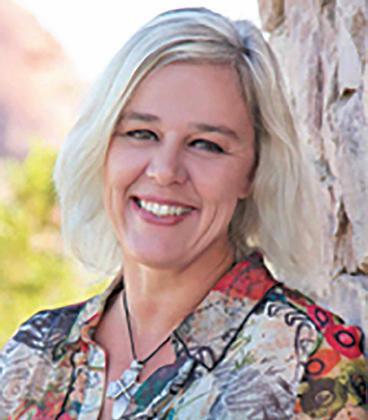
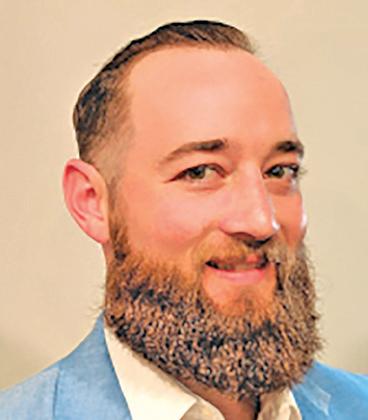
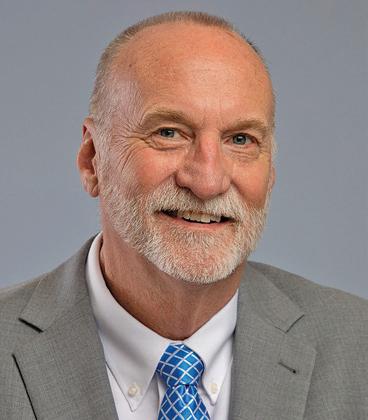

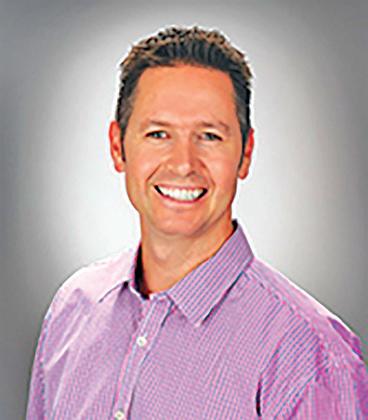
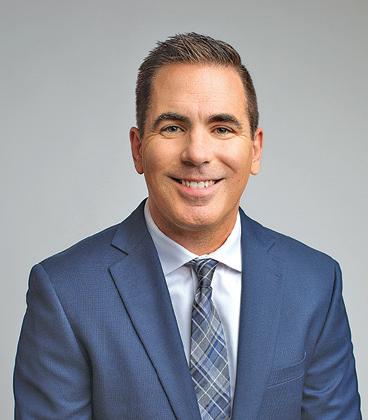
The Ahwatukee branch of West USA Realty has announced its top Realtors and honored 12 other Realtors for years of service totaling 155 years.
West USA Realty originated its first office in Phoenix in 1986 and became one the largest real estate firms in the State of Arizona and in the nation. It has grown from one agent to over 3,300 serving the valley.
The Ahwatukee branch opened 37 years ago and is still in the same location with 225 Realtors.
As West USA celebrates its 38th year providing real estate services to Arizona, it
counts more than 555,000.00 consumers it has helps since its founding.
The Ahwatukee branch also has gained a reputation for numerous charitable endeavors.
It has partnered with Horizon Honors Key Club, sponsored school supply collections and supported the Ahwatukee Kiwanis Club.
The six Realtors honored are Mike Smith, top producer in units and volume; Tom Wolf, top commercial producer in units; Kelly Pedraza, top land producer in units; and David and Mike Mulvena, largest annual growth in property management.
Additionally, Osa Hemberg garnered The
Culture Award for her service to her peers and the community.
Those honored for years of service include Thao Swindlehurst, who this year logged 25 years of service. Honored for 15 years of service were Jarl Kubat, Stephen Parrish, Terry Parrish, Kim Kurtz, Danny Close and Betty Mueller.
Recognized for 10years of service were Bonnie Kennedy, Peter Kim, Chris Conner, Ryan Gipple and Debora King.
West USA Realty is located at 4505 E. Chandler Blvd., STE 170, Ahwatukee. For more information, contact Branch Manager Donna Leeds at 480-893-0600.
APhoenix lawmaker is attempting to salvage at least part of his controversial plan to override local zoning rules in the name of affordable housing after it was overwhelmingly rejected because of opposition from cities and towns.
The move comes after a bipartisan vote in the Senate two weeks ago quashed the plan by Republican Sen. Steve Kaiser to require cities to allow everything from higher density housing and taller multi-family complexes to eliminating requirements for off-street parking. City lobbyists said these were decisions best left to locally elected city councils.
Also helping to doom the measure was the lack of any guarantee that the radical revamp of state laws giving municipalities the right to control zoning would actually lead to more affordable homes or apartments.
Kaiser said in an interview that some of the wide-ranging measure’s provisions are
clearly dead, including one that said builders had the absolute right to convert existing commercial, mixed-use or multi-family property to much-taller and larger apartment units, and another that would allow developers to cram as many as six homes onto one lot.
“Obviously by-right was not helpful, so that’s that won’t be coming back,’’ Kaiser told Capitol Media Services. “And the small lots, people don’t like that.’’
The small lots were the part of the plan designed to kick-start the building of “starter homes,’’ entry-level homes affordable enough for first-time homebuyers.
Other parts of the measure, he said, will be revived.
That includes requiring municipalities to allow backyard casitas as long as they are not used as short-term rentals, allowing construction of duplexes and tri-plexes, and allowing manufactured housing to be used. Kaiser said they probably have enough support to make it through the Legislature.
And limiting design reviews and allowing
boarding houses also will likely be revived, he said.
The plan was supported by developers and some housing advocates, and won the backing of some Democrats in the Senate.
“I think there are necessary tools in this bill that need to be implemented in order to really address the housing crisis that we are facing,’’ said Sen. Anna Hernandez, DPhoenix.
“And I think it will give us opportunities to build more diverse housing, more innovative and tailored to what some of our working families need or what some of our youth needs or some of our seniors.’’
Other Democrats opposed the plan, including Sen. Priya Sundareshan, who said her city, Tucson, already has made a lot of progress on issues addressed in the measure, including allowing backyard housing units.
“And the problem that we see is that this pre-emptive approach might actually undo some of the efforts made there by overrid-
see HOMES page RE4


ing the regulations made to date and override potentially other initiatives that they have been taking in order to address the housing crisis,’’ Sundareshan said.
Sen. John Kavanagh called Kaiser’s plan all-around bad.
The Scottsdale Republican called local zoning “a sacred thing,’’ and noted that people made decisions on where to make the biggest investment of their lives based on things like big lots – and the assurance that a developer can’t buy a vacant nearby property and cram it with six tiny homes.
“Trust me friends, I am no stranger to pre-empting cities and towns,’’ said Kavanagh.
“But I do draw a line at kneecapping,’’ he said during the vote on SB1117, which failed 20-9. “And this bill kneecaps local control. And local control is basically what our constituents want.’’
Kaiser’s plan is premised on the conten-
tion that local zoning rules and “NIMBYism,” the not-in-my-backyard opposition from existing residents to new development, is a key reason Arizona has a major housing shortage.
But Nick Ponder, a lobbyist working with the League of Arizona Cities and Towns, called that a flawed argument at best.
He said cities do not control who buys and holds land, or when they decide to build on their properties. And he noted that there is a backlog of about 23,000 apartments waiting to be built in Maricopa County, some with permits and approvals dating back to 2018.
“There’s parts of the process we control, there’s others that we don’t, but what we can control we want to improve upon,’’ Ponder said. “But the way that SB 1117 does it just is a no-go for our municipal residents.’’
And he said local opposition is not the only reason some developments are denied.
Ponder also noted that cities have been
hamstrung in addressing the housing shortage by laws backed by the state apartment association, builders and conservative groups like the Goldwater Institute, groups now pushing for the changes in Kaiser’s bill.
He said builders pushed legislation barring cities from collecting impact fees for things like the costs of extending water and sewer lines and paving streets, so new homes now are essentially subsidized by cities and towns.
For their part, apartment owners got lawmakers to bar cities from requiring 10% of new units be affordable. And Goldwater pushed a law mandating unregulated shortterm rentals, which has led to conversions that limit available long-term housing and helped drive the current housing shortage.
“So we’re being attacked left and right on things that we try and do to make things affordable,’’ Ponder said. “And now the same entities who have attacked us left and right and taken away the tools are the ones who
are saying now they have the solution to the problem.’’
Kaiser said he has no love for the League of Arizona Cities and Towns and their lobbyists.
The Phoenix lawmaker led a study committee over the fall and winter after a much more aggressive bill he sponsored failed last year. He said he crafted the current bill based on conclusions that cited over-regulation as a major hindrance to developing new housing.
“They’ve been terrible to work with this whole time,’’ Kaiser said. He complained the League is offering its own amendment, one they didn’t have the courtesy of informing him about after his bill failed.
“So this is how they operate,’’ Kaiser said. “You know, they lie and then they also do subversive (expletive) like this where they just try and work around you.
So I have zero respect for the League and
see HOMES page RE5




ber and January. Single-family permits are very low while multi-family permits are very high.”
“It seems that the construction industry has collectively determined that the mix of homes in Maricopa and Pinal is going to change in favor of multi-family and away from single-family,” it added. “This is probably a result of the low affordability we are now facing.”
The National Association of Home Builders reported two weeks ago the national housing supply picture is not likely to change any time soon.
“Homebuilders continue to face challenges in terms of higher interest rates, elevated construction costs, and access to critical materials like electrical transformers,” the association said, adding recent bank failures may add to that pressure.
“The lack of existing home inventory means demand for new homes will rise



as interest rates decline over the coming quarters,” it said. “Indeed, there was an increase for sales of homes not yet started construction in February.”
Meanwhile, the Cromford Report took a shot at some YouTube videos that are erroneously stoking buyers' expectations by suggesting a wave of foreclosures is about to hit the Valley.
“There has always been a lot of ill-informed, simplistic and childish speculation about the housing market,” it said. “But these days dozens of these people have YouTube channels and the crazier their pronouncements, the more views they are likely to get. …They are not trying to be a balanced and astute observer of the market. They are trying to shock you. Selling disaster in all forms is a proven way to get attention.”
Stating “the sheer recklessness of the pronouncements made on YouTube still amazes me,” it advised Realtors that if their clients take these YouTube videos to heart,
“they are going to find out that real-life differs dramatically from the insane forecasts by these self-appointed experts.”
To beat down those predictions of some big spike in foreclosures, the Cromford Report said, “One day this forecast might come true. It tends to happen once every 50 years or so, and certainly did happen in 2006 through 2011. But the actual numbers, when read with intelligence and insight, blow this foolish forecast out of the water.”
It noted that some people were predicting a flood of foreclosures would follow the pandemic, when a moratorium was in place on such actions.
Those predictions turned out to be wrong.
“Clearly when the moratorium stopped, foreclosures increased, but by a surprisingly small amount, to reach an extremely low level compared with the long-term average,” the Cromford Report said.
see MARKET page 7
how they operate.’’
Ponder said the League indeed is crafting its own bill that would address some of the major issue while giving cities the right to choose which parts to implement.
Although still being crafted, it would require cities to take steps such as allowing auxiliary housing units if they were in backyards and not three or four stories tall, as he said Kaiser’s bill would allow.
They also would allow for fewer regulations on off-street parking for some developments near public transit and approve higher density housing and incentives if affordable housing is included.
Other parts of the proposal would require cities to choose from a list of optional items like allowing single-room occupancies or duplexes or triplexes.
“The thing that I think is most important here is cities want to be part of the solution,’’ Ponder said.













PHOENIX | Whistling Rock
421 E Mountain Sage
3900 sqft , 5 bedrooms, 4 baths
Incredible semi-custom single level home at the base of South Mountain Range in the luxurious gated commuity of Whistling Rock



Bonny Holland
602.369.1085
www.LeadingLuxuryExperts.com
EXTREMELY PRIVATE HILLSIDE ESTATE LOCATED IN COVETED CABRILLO CANYON*4 BEDROOM,3 BATH,AND COMPLETELY REMODELED,OVER 250k SPENT*FORMAL LIVING ROOM*FORMAL DINING ROOM*FAMILY ROOM W/LIMESTONE FIREPLACE*DECORATOR COLUMNS*WET BAR*KITCHEN INCLUDES:S/S APPLIANCES,GR ANITE,ISLAND,CUSTOM CABINETS,RECESSED LIGHTING,& WALK-IN PANTRY*ADDED LIGHTING*LARGE MASTER SUITE*MASTER BATH W/SLAB GRANITE COUNTERS,MOSAICS,DUAL VANITIES,CUSTOM SHOWER W/SEAMLESS GLASS,& CLASSY CLOSET*CUSTOM WOODWORK THROUGHOUT*TRAVERTINE IN VERSAILLES*PLUSH CARPET*NEW FIXTURES*NEW CEILING FANS*ALL BATHROOMS REMODELED*BACKYARD PARADISE W/STUNNING MOUNTAIN VIEWS,SPARKLING POOL,HEATED JACUZZI,2 WATER FALLS, COVERED PATIO,SPORT COURT,PUTTING GREEN*GARAGE WITH EPOXY & BUILT IN CABINETS*THIS STUNNING ESTATE HAS IT ALL!

Listed for $1,299,000








Superb single level with detached casita in highly coveted Ahwatukee cus- tom estates. Open kitchen features granite countertops, raised-panel cabinetry, stainless steel appliances, island with Jenn-Air glass cooktop, breakfast bar, pantry and desk. Inviting family room with recessed lighting, surround sound and wet bar. Master suite features an office, separate den, walk-in closet, lami- nate and travertine flooring, granite countertops, jetted tub and walk-in shower. Two bedrooms share a jack and jill bath. Upgrades throughout include shutters, travertine, laminate flooring in all bedrooms plus granite counters in all baths. Laundry room with sink and cabinetry. Backyard oa- sis features Pebble Tec pool and spa, ramada, stainless steel BBQ/smoker, grass area, grapefruit tree, lighting and great views.
Listed for $1,225,000
“By the time the moratorium was lifted, pending foreclosures had declined to a level I would have previously considered impossibly low – around 500. That is just 10% of the bottom of the normal range,” it continued.
“And then when the moratorium ended, pending foreclosures almost DOUBLED to between 800 and 1,000. But the 1,000 level is still only 20% of normal. The current count is trending slowly higher, but remains unusually low and shows absolutely no sign of getting back to normal, never mind excessive, anytime soon.”
It also noted that national compilers of loan performance data “tell us that delinquency remains at a very low level” and said:
“These reports will provide an early warning if foreclosures may be coming back in fashion. At the moment they are
after Los Angeles County, with 9.72 million residents; Cook County, Illinois, with 5.11 million; and Harris County, Texas, with 4.78 million. Los Angeles County remained No. 1 despite also seeing the biggest decline last year, when it lost 90,704 residents.
Of the 10 counties with the biggest population gains, six were in Texas and three were in Florida. Maricopa County was the
not showing any warning signs at all.”
“If someone tells you there is a foreclosure wave coming in 2023, you can safely ignore everything that person tells you about the housing market,” it added. “Most likely that person said the same thing about 2022 and every year before that. No need to argue, just ignore what they tell you.”
Cromford’s assessment pretty much conforms with other experts.
The market “will be uncertain and chaotic,” said Aaron Brown, an adjunct finance professor and Bloomberg columnist. “I don’t think we’ll get anywhere near as bad as 2008.”
The Cromford Report’s most recent look at the Valley’s 17 submarkets indicated that Chandler had the strongest market for sellers and that Phoenix wasn’t all that far behind, holding fourth place. Fountain Hills and Glendale held second and third, respectively.
only one from Arizona.
While no other Arizona county came close to Maricopa’s numeric growth last year, Pinal County saw the fastest growth rate for the second year in a row.
Twelve of the 15 counties in the state saw population growth last year, according to the Census Bureau. The remaining three saw population declines: Greenlee County lost 75 residents, Cochise County lost 100 and Graham County’s population fell by 103.










3
Superb




family room w/canterra fireplace, kitchen incs :slab granite,alder cabinets,s/s wolf appliances,gas cooktop,miele dishwasher,copper sinks,island, & subzero, most amazing custom stonework ever seen in ahwatukee consisting of marble,canterra,travertine, & granite, large master ste w/sitting area & 2 separate full baths, his/her alder & cedar lined closets, guest suite-2nd master w/ensuite bath & courtyard, extremely private backyard w/covered patio, pebbletec pool w/waterfalls, firepots, firepit, grassy play area, & fully equipped outdoor kitchen, fruit trees inc: apple, orange, lemon, & lime, this dream estate has it all!
Ahwatukee Custom Estates $2,799,000

ON A
AT THE END OF A CUL-DE-SAC WITH A 6-CAR GARAGE*GATED DRIVEWAY*COMPLETELY REMODELED WITH THE HIGHEST QUALITY FINISHES*EVERYTHING IS NEW*GRAND FOYER*LIVING ROOM W/ FIREPLACE*FORMAL DINING ROOM*FAMILY ROOM W/FIREPLACE & FULL WETBAR*KITCHEN INCLUDES CUSTOM CABINETRY,RARE QUARTZSITE COUNTERS,THERMADOR APPLIANCES,BUILTIN FRIDGE/FREEZER,ISLAND,& WALK-IN PANTRY*LARGE MASTER SUITE*MASTER BATH W/ STEAM SHOWER,JACUZZI TUB,HIS/HER VANITIES, & WALK-IN CLOSET*MEDIA ROOM*EXERCISE ROOM*GAMEROOM*GIGANTIC PARADISE BACKYARD INCLUDES:PEBBLESHEEN POOL & JACUZZI,TWO GRASS AREAS,SPORT COURT, AND STUNNING SOUTH MOUNTAIN VIEWS*BACKS & SIDES TO WASH WITH COMPLETE PRIVACY*A 6-CAR GARAGE



Mountain Park Ranch
Ahwatukee Custom Estates

$1,750,000 Amazing Remodeled Custom Estate with mountain views located at the end of a cul-de-sac.Over 8000sqft of pure luxury finishes.6 Bedroom,5.5 Baths.Custom Kitchen.Elevator.Executive Office.Basement Media Room.Dance Studio.Huge Backyard with Pool, Jacuzzi, Turf, BBQ, Sportcourt.This Spectacular Estate has it all!!! SOLD!
Foothills $499,000
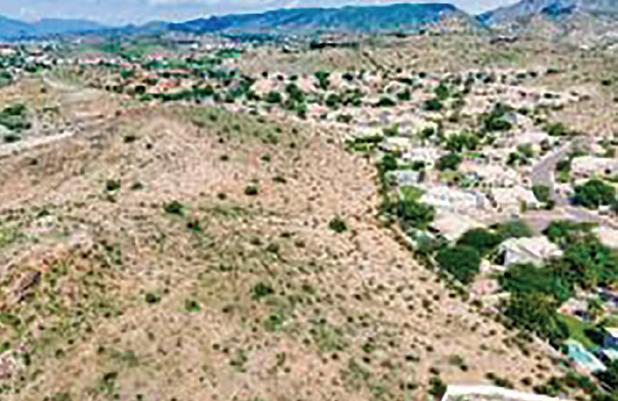



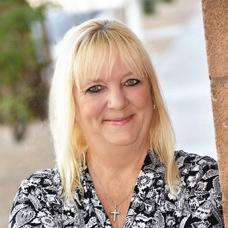

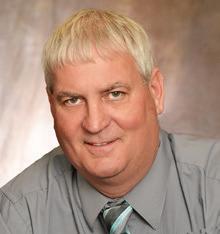
Troy
480-435-3461
troyston61@gmail.com

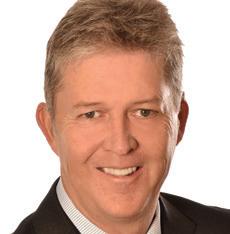


Mike



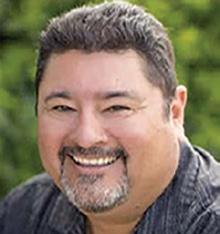
One of the most amazing lots available in ahwatukee!! Located in foothills mountain ranch estates!! Over 5 acre hillside lot with stunning mountain views from every direction*build your dream custom estate or build multiple homes on this sight*zoned r3*the possibilities are endless on this rare opportunity*there is not another piece of land in ahwatukee that offers this many buildable acres*no hoa*located at the end of a cul-de-sac*be the king of the hill with views all the way to four peaks*plans available and other custom home options available from a well know ahwatukee custom home builder*do not miss this amazing hillside lot in an amazing location!!!!

Thunderbird Farms South

$580,000
Custom home on flat 3.3 acres with horse arena and room to roam. City water! Custom Santa Fe style 4 bedroom with tons of upgrades. Travertine tile galore, family room and other bedrooms also have tile. Kitchen has been upgraded with quartz counter tops, white cabinets and all stainless steel appliances convey. Custom doors and woodwork throughout home. Also, lots of tile work in bathrooms and other upgrades. Over $30,000 spent on upgraded doors and windows.
Carlos Martinez
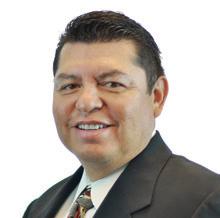
480-751-8866
teammartinez11@gmail.com

Copper Creek
Gorgeous newer build with a spectacular back yard for your family! TLC abounds with many upgraded features: Hi-end plantation shutters, newer appliances, new paint, stunning cabinets and completely re-landscaped front and back. Enjoy those family great times in the highly upgraded north-facing back yard. Custom Sunburst shutters, dual pane windows and newer AC. Large Master suite with Beautiful Bay Window & Walk-in closet provide plenty of room for your bedroom set & sitting area. Nice views of the South Mountain Preserve.

Link Paffenbarger
602-989-7221
linkpaff@gmail.com
Cub Scouts gathered in Ahwatukee March 25 for the 2023 Gila River District Cub Scout Activity Day at Mountain View Lutheran Church.
It gave Scouts and those interested in learning about scouting an opportunity to enjoy a variety of activities ranging from panning for gold to more STEM-like activities and others in between.
They built a boat out of recycled materials to race down a regatta track, built derby cars out of LEGOs as well as old-fashioned kites, hammered out leather crafts, watched demonstrations of metal forging.
And they met with state police officers and checked out their official patrol vehicles.
The high point was the running of the 2023 Gila River District Pinewood Derby.
The top three winners, all from Pack 178, were: Grayson Anderson, first place; Danny Baum, second; and Cameron Mueller, third.
Special mention for car designs went to Harris Nolle from Pack 472, who took Best of Show, and Coner Nelson, also of Pack 472, whose model was praised for showing “Most Cub Scout Pride.”
The day was organized by the Gila River District with volunteer support from leaders in the community and Ahwatukee Troop 17 and Troop 48.
Anyone interested in learning more about Scouting in Ahwatukee area can email: ahwatukeescouting@gmail.com

com, where it can be purchased by searching for the title.
“I’m excited at the response it’s already received and can’t wait for it to reach a larger audience,” Mendoza said. “Eventually the book will be available across all platforms and in brick and mortar stores.”
Mendoza envisions his new work to be a debut for a series with at least two more novels.
And he’s hoping it also will hit the silver screen.
“As a filmmaker, I see it in that medium,” he said, “and I’d love for the story to one day be a movie or possibly a series.”
Mendoza’s “What Still Remains,” released in 2018, garnered favorable reviews and the trailer can be viewed at whatstillremains.com. The movie is currently streaming across multiple platforms, including Amazon, Paramount+, Apple TV and VUDU, among others.
Mendoza is not one to rest on his laurels or take a breather apparently.
He’s in the process of getting a second film off the ground as well as plotting the sequel to “Shadow.”
“I’m always writing and I have multiple scripts, some of which have won awards,” he said. “I recently signed with a new
manager as a writer/director and I’m excited about the new opportunities and connections for me. You just have to keep creating.”
And he noted that while much of that creating has been in the realm of science fiction, his first movie contains elements of non-fiction, given what the COVID-19 pandemic did to the world.
“It can’t not impact you,” he said of the pandemic, noting that the world in his first movie is one “long-since destroyed by disease.”
“It’s the post-pandemic survivors to a zombie apocalypse and how that’s changed people and whether you can still have hope for a better life when so much has been taken from so many,” he said. “Obviously the subject is even more topical now that we’ve lived through our own lockdown pandemic.”
Not that he’s letting all that keep him down.
“I think my main takeaway from the last few years is a recommitment to the entertaining and fun stories that made me fall in love with cinema and I that escaped into the pages of as a kid,” he said.
“Going to the movies or reading a book should be an experience, an adventure, and help give us a place for escapism. I hope my work does that for people and it’s what I strive for in all my stories.”
Women in Ahwatukee who are looking to meet other local women with similar interests are invited to join Ahwatukee Foothills Friends and Neighbors. They can get an introduction to one of the club’s many activities at a luncheon 11:30 a.m.-1 p.m. April 24, when the program is a Retail Therapy Fashion Show presented by JudyWear Boutique. The luncheon will be held at Ahwatukee Country Club and attendees must register and pay in advance by April 15.
Cost is $25 and registration/information can be obtained by emailing affanwomensgroup@gmail. com.
More information about AFFAN can be found at affanwomensgroup.org/public. The club sponsors a wide range of activities, such as team trivia, dining excursions, wine tasting, trips, book club and bridge.
Ahwatukee Republican Women is again offering their annual scholarship to Ahwatukee high school seniors. The Marjorie Miner Scholarship, established in 2011, is awarded to Ahwatukee residents graduating from any area high school this year. This scholarship honors the longtime Republican activist who has been a member of ARW since it was founded in 2005.
Scholarship applicants should include two letters of recommendation from other than a family member and a 250-500-word double-spaced essay incor-
porating their involvement in volunteer service, extracurricular activities, clubs, and educational goals.
Visit ahawatukeerepublicanwomen.com for full details and to download the application.
The deadline to apply is April 30. Questions can be emailed to ARWomen@aol.com
Chabad of Ahwatukee will host a community Passover Seder tonight, April 5 at 7:30 p.m.
People can RSVP at ChabadAhwatukee.com/ Passover.
Contact information: Rabbi@ChabadAhwatukee. com or call or text 480-382-0232.
“The Way of the Cross” will be offered on Good Friday, April 7, from 7 a.m.-6 p.m. except noon-1 p.m., at Mountain View Lutheran Church 11002 S. 48th St., Ahwatukee.
The “Way of the Cross” is a self-guided time of meditation and prayer comprised of seven stations. Each station has a picture, Scripture reading, devotion, and prayer that leads along the way of Jesus Christ’s suffering. It takes approximately 45 minutes to complete. The public is invited.
The artist of the paintings is Sieger Köder (19252015). His paintings, sculptures, and stained-glass church windows can be found throughout Europe.
The paintings are displayed in the Catholic Church of St. Stephanus in Wasseralfingen, Germany.
The devotions and prayers are written by Theo Schmidkonz, SJ. They have two perspectives; one looks at the experience of Jesus’ suffering while the other looks at the experience of situations present in our world today and in our personal lives.
The Kyrene Foundation has put out the call for players and sponsors for its 12th annual Golf Classic May 5 at the Whirlwind Golf Club at Wild Horse Pass.
“In 2022, we raised over $25,000 for the Kyrene Foundation, which supports our initiatives in the Kyrene School District,” the foundation said, noting the public’s help is essential to that kind of success.
This year, the foundation has set a fundraising goal of $30,000, with all proceeds going to its work in helping struggling families living in the school district’s boundaries.
Sponsorships include title, contributing, hole and contest. Players can purchase tickets for foursomes, singles and classic and lunch-only tickets also are available.
Information: kyrenefoundation.org/event/golf23.
American Legion Post 64, the only formal military veterans organization based in Ahwatukee, is holding a free veterans social mixer that’s open to the public 5-6:30 p.m. today, April 5, at the Ahwatukee Recreation Center, 5001 E. Cheyenne Drive.
Light food, iced tea and water will be served at the free event and music and the card game Spades are also on the agenda.
Information: Brenda, 303-301-4429
An engraved commemorative paver placed at the Ahwatukee Blue Star Memorial can honor a friend or family member who served, or is currently serving, in the U.S. Armed Forces and orders are being accepted until April 15 for pavers to be placed in time for Memorial Day.
Pavers cost $60 with the military logo of your choice, or $50 without military logo. Pick up order forms at the Ahwatukee Board of Management office, 4700 E. Warner Rd, or download at ahwatukeehoa.com/blue-star-memoria. Leave completed forms and payment at the ABM office or mail to the address on the form by April 15. Contact mltiede@ hotmail.com.
The Blue Star Memorial, a joint project of the Desert Pointe Garden Club and the Ahwatukee Board of

Management, is located on the north side of Warner Road just west of 48th Street. Parking is available in the ABM parking lot.
Coach Matt at Empowerment and Wellness Clinic at 4221 E. Chandler Blvd., Ahwatukee, is offering a free Pranic Healing session 10 a.m.-2 p.m. the last Saturday of every month. This month it will be held on April 29.
Pranic Healing is a modernized version of an ancient healing art “that uses prana or life force to remove old or stagnant energy within the body to accelerate healing,” a clinic spokeswoman said.
“We have done our best to prepare a safe healing clinic environment for those interested in experiencing the power of Pranic Healing,” she added.
People should arrive 10 minutes prior to fill out paperwork.
Owner/practitioner Matthew Olschner has been coaching and mentoring youth, families and teams in Ahwatukee for five years and recently added breathwork and other healing modalities to his work.
He can be reached at Coach@coachmattaz.com or 480-261-9168. Information: coachmattaz.com.
Ironwood Library, 4333 E. Chandler Blvd., Ahwatu-
kee, presents a variety of programs for children, teens and adults. Unless otherwise noted, free tickets are required and available 30 minutes before programs’ start times at the library’s information desk.
For more information: phoenixpubliclibrary.org.
Babytimes
Babies ages birth to 23 months, accompanied by a favorite adult, will enjoy songs, rhymes, books, and interactive fun Tuesdays, 10:30-11:10 a.m. Space is limited to 12 families.
Toddlertimes
Toddlers ages 24-36 months, accompanied by a favorite adult, will enjoy songs, rhymes, books, and interactive fun Thursdays, 10:30-11:10 a.m. Space is limited to 12 families.
Family Storytime at Pecos Park
Children birth to age five and their favorite grownups play, read, sing, and dance in a fun, active program that builds reading skills.
Every Friday 9:30-10 a.m., outdoors at Pecos Park, 17010 S. 48th St. No tickets required. Supported by a grant from First Things First.
Sit, Stay, Read!
Young readers & listeners can sign up for reading time with a registered therapy dog/handler team. Read with Elsa 4-5 p.m. every Tuesday.
Family storytime at Pecos Park
Children birth to age five and their favorite see AROUND page 32
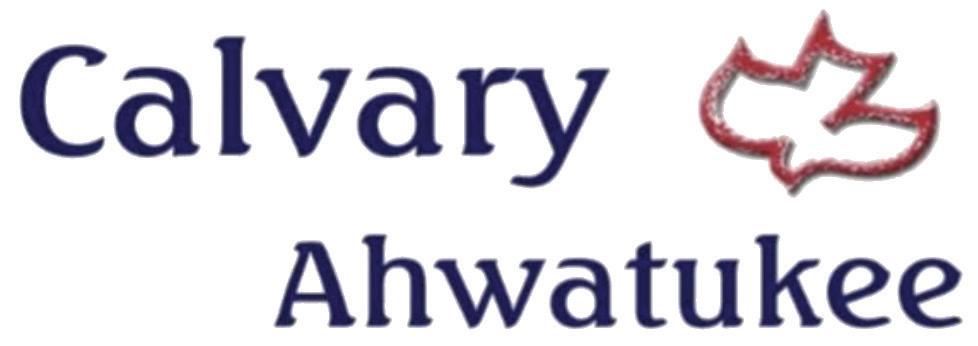




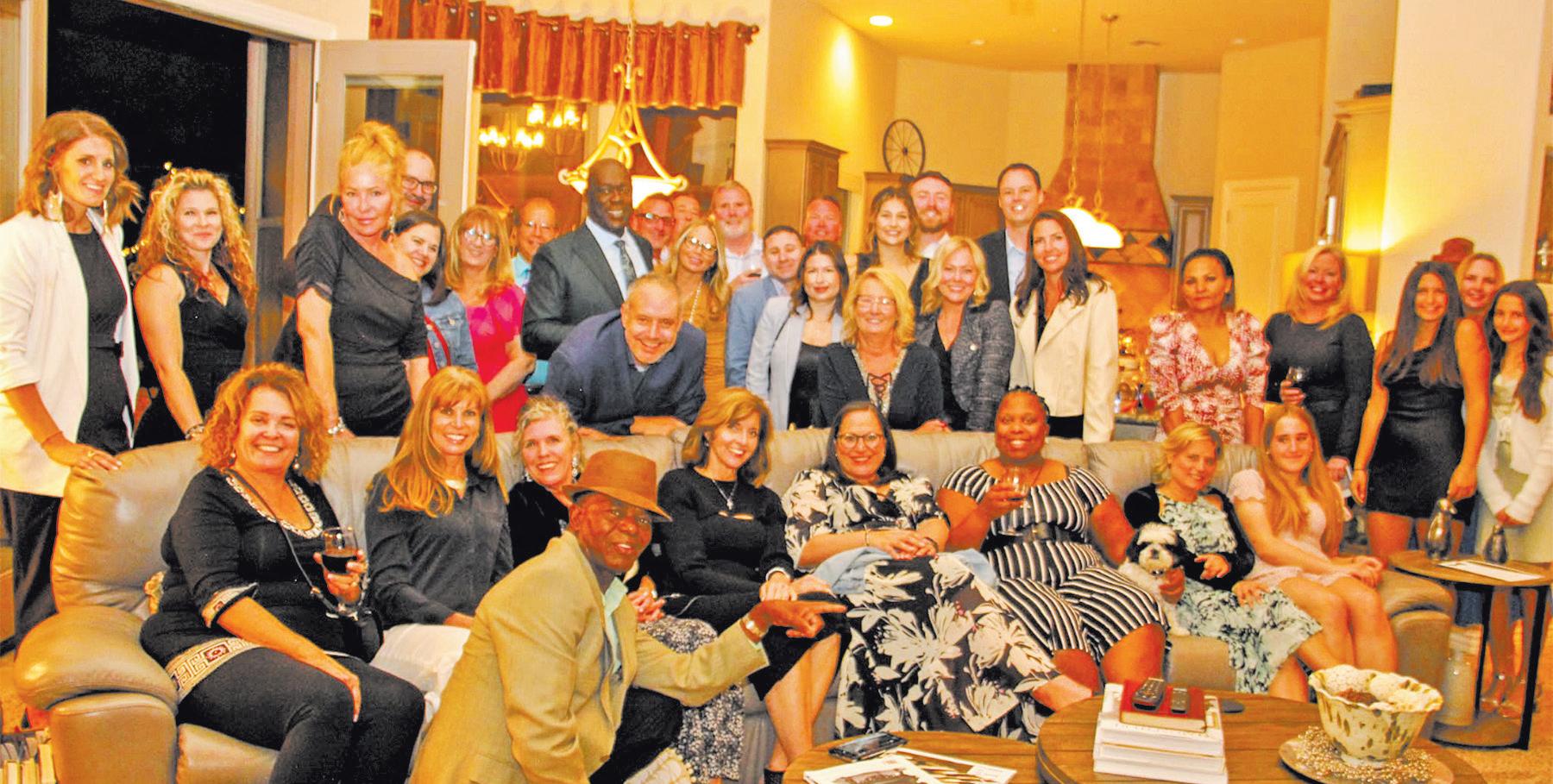
Ahwatukee Realtor Michelle Hodges was grateful for the turnout at a winetasting social hosted at a local home March 25 to raise money for the Ahwatukee YMCA during its annual drive. “We had nearly 30 raffle items, 50 attended, raising nearly $6,000 for community sponsored events promoting healthy living, social responsibility, and youth development,” said Hodges, who with Marilyn ten Hope and wine expert Jason DiFrancesca hosted the event. Raffle donors included Foothills Nail Spa, Ish Salon, Xpress Automotive, AZ Tavern, B&B Cocktail Lounge, Betty’s Dog Wash, Biscuits, Trader Joe’s, Foothills Golf Course, Staci Cotter at Loan Depot; Duenes, Eden and Cravatta Law Firm; Purfekt Natural Skin Care, Native, First Class Reflexology, Miracle Nails, Buzzed Goat, Sports and Family Care Clinic, Aguilla Dental, and Design Ramon Hair Studio. People interested in joining the YMCA board can email svfranks@ vosymca.org or THE480Group@gmail.com. (Fabio Guimaraes/AFN Contributor)
AROUND from page 30
grownups play, read, sing, and dance in a fun, active program that builds reading skills. Every Friday, 9:30-10 a.m., outdoors at Pecos Park, 17010 S. 48th St. No tickets required. Supported by a grant from First Things First.
Young readers & listeners can sign up for reading time with a registered therapy dog/handler team. Read with Elsa every Tuesday, 4-5 p.m. Read with Raven every Thursday, 4-5 p.m.
Children ages 6-12 explore hands-on creative ways to design, experiment, and invent Saturdays, 2-3 2-4 p.m., in this drop-in Science, Technology, Engineering, Art and Math (STEAM) program. No tickets required.
Summer teen volunteer opportunity
Teens ages 13-17 can to volunteer for the annual Summer Reading Program, which offers a chance to learn customer service skills, inspire children to read, and work with other teens. Look for information about availability, training, and volunteer requirements, as well as the online application and parent
consent form, at phoenixpubliclibrary.org/teens.
Positions can fill quickly, so apply early for the best chance of selection until all positions are filled.
Paper crafts
Adults and teens can learn a new papercraft the first Wednesday of each month starting today, April 5. Flowers and all materials will be provided. 4:305:30 p.m. No tickets required.
This inclusive community-based book club is designed for people ages 12+ with intellectual and developmental disabilities who have a desire to make friends, explore their community, and read (regardless of current reading ability).
This weekly gathering is free and occurs every Wednesday, 3:30-4:30 p.m. Registration is required and available in the library or online in the Calendar section of the library’s website.
Adult readers 18+ can meet up with fellow adventuresome bibliophiles to share their thoughts about each month’s selection the first Wednesday of each month, 5:00-5:45 p.m. On May 3, Turtles All the Way Down by John Green will be discussed. No tickets required.

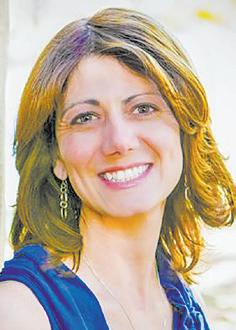 BY DARLA HOFFMANN AFN Guest Writer
BY DARLA HOFFMANN AFN Guest Writer
Have you ever wondered why some people don’t appear to age while others look older than they are?
The reason is not all genetics; it only accounts for about 15-20% of the aging process. We are responsible for the other 80%. The two components that affect aging are called intrinsic and extrinsic factors.
Intrinsic factors include genetics, gender, ethnicity, anatomical variations, and life stages. This element of aging includes cell function and hormonal changes due to chronological and physiological changes.
It explains why you may have the same deep furrow between your brows as your mother and why men have thicker, oilier skin than women. And while the amount of melanin in certain ethnic groups protects the skin, some groups are more vulnerable to hyperpigmentation.
Inevitably, our cell turnover slows down, and our skin barrier becomes less effective as we continue to age. Ultimately, after age 20, the skin loses some of its elasticity and collagen.
Some features of intrinsic aging include thinner skin, fine lines, dehydration, loss of firmness, and hollowed cheeks due to the loss of underlying fat.
Though combatting this natural biological aging process is complex, it is possible to slow down some of this activity with chemical peels and corrective products.
The extrinsic or environmental aging factors occur through sun exposure, gravity, facial expressions, smoking, sleeping positions, pollution, hydration, and diet.
Although facial expressions seem unpreventable, squinting, raising eyebrows, and puckering from smoking and swish-
ing mouthwash can cause unwanted wrinkles.
The lack of hydration and excessive sugar can cause poor skin tone, dullness, and even breakouts. Additionally, side sleeping puts pressure and friction on the face and chest, creating a flattening effect and fine lines.
Other features of extrinsic aging are coarser wrinkles, photoaging, leathery skin, spider veins, rosacea, enlarged pores, and skin cancer. There are no quick fixes to this kind of trauma to the skin, but there are steps we can take to repair past and ongoing damage and prevent further damage.
First and foremost, avoid tanning booths and intentional sun exposure. Wear brimmed hats, sunglasses, and UVprotective clothing when swimming or performing outdoor activities.
Regularly apply sunscreen with zinc to protect against the rays and antioxidants like vitamin c, niacinamide, resveratrol, and vitamin e to fight oxidative stress. Moreover, drinking half your weight in ounces daily is an excellent benchmark to stay hydrated in Arizona.
Making some minor lifestyle changes can lead to healthier skin.
Non-invasive chemical peel treatments and professional-grade home care products that contain peptides, growth serums, and retinol can help get you on your way to having your best skin. It may be helpful to schedule a skin consultation with a licensed aesthetician to get you on a regimen that will work for you.
Darla S. Hoffmann owns A-peeling Faces Skincare & Massage Therapy inside Signature Salon Studios, 3936 E. Chandler Blvd., Ahwatukee. Information: apeelingfaces.com, 480540-7555
 Kurt Eugene Huntley
Kurt Eugene Huntley

Kurt Eugene Huntley, 63, a devoted husband and father, passed away on Thursday, March 30, 2023, in hospice care.
Kurt was born in Meadville, Pennsylvania, and spent most of his childhood in State College, PA. He was the son of Tom and Sally Huntley (nee Loebelenz). He married Shirley Ann Buchanan May 4, 1991, who survives. In addition to his wife, he is survived by his daughter Sara Huntley, his sister Danti Rivera and husband Edwin of Reunion, Florida and brother Thomas (Ted) Huntley and his wife Diane and daughter Laura of Walnut Creek, California. Kurt earned a bachelor’s degree in industrial engineering (1981) from Penn State and a master’s degree in systems analysis and management from George Washington
University. He had a long career in the telecommunications and banking industries and ran a pet sitting business with his wife Shirley.
An avid and talented soccer player, he played on his state champion high school team and on Penn State’s team at the Behrend branch campus. He was also a devoted Penn State sports fan, attending football games in his youth and following along on TV after moving to Arizona. He also enjoyed cheering on the Pittsburgh Steelers.
Kurt was a member of Esperanza Lutheran Church in Phoenix, Arizona, where he served as a volunteer in a variety of capacities. He also enjoyed volunteering his time and talent in the broader community, including as a YMCA youth soccer coach and in computer classes for elementary students.
In lieu of flowers, please send donations to Esperanza Lutheran Church.


Sunday, April 9th • Easter Services
Sunrise Service 6:00 AM
Traditional Service 10:00 AM Children’s Sunday School 10:15 AM
Easter Egg Hunt After Worship




BESTOF 2022
If you thought you have been to a Mexican restaurant lately you probably need to reconsider and visit La Casa De Juana in Ahwatukee. The fare is authentic Mexican, and when we say authentic we mean it, unlike many of the restaurant chains that call themselves Mexican. Upon entering you’ll be dazzled by the colorful décor, the tables and chairs are beautiful, Mexican painted murals, colorful banners hanging from the ceiling and the gracious service with warm orange and yellow tones echoing throughout the restaurant will make this your favorite Mexican restaurant. With great lunch and dinner specials, we have Happy Hour Monday - Sunday from 2 - 6 PM with $5 House Margaritas, $4 Beers, $5.95 Cheese Quesadilla, $8.95 Chunky Guacamole and $9.95 Juana’s Nachos. Live music every Thursday night in our Ahwatukee location and every Friday at our Tempe location. In conclusion The flavorful salsa, the delicious margaritas, the extraordinary and well-priced food will definitely keep you coming back.


Don’t hesitate to stop by the Ahwatukee location
3941 E. Chandler Blvd. (S/W corner Chandler & 40th St) to make your next reservation call 480-626-9295
www.juanashouse.com




WHY DOES EASTER MATTER?
It matters because we live in a broken world, but God intended to give us hope. He sent his Son, Jesus, who died in our place, and on Easter he rose from the dead. Because Jesus lives, now we have answers for the brokenness of this world and a place to find hope, peace, life, and love. Because Jesus lives, our relationship with God is restored and our hope is made certain. Easter makes all the difference!
Easter Sunday
7:30 Outdoor Service
9:30 Festival Service/10:45 Kids Egg Hunt
Be our guest
Find a place of community, a place of peace, and a place to celebrate He Lives!


Independent living One bedroom from $2100 and Two bedroom, two bath from $2400.










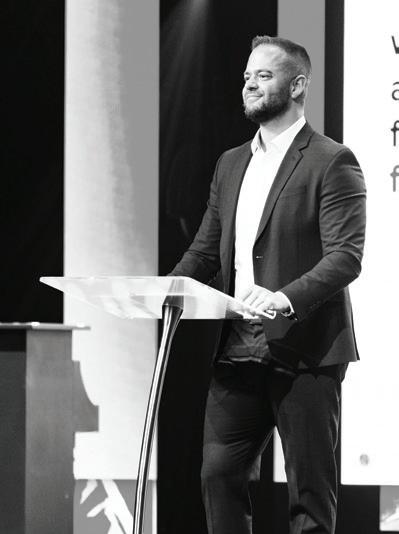

Scores of college students, some with electric skateboards tucked under arms, flocked to the student union on Arizona State University’s Polytechnic campus in southeast Mesa last month for a standing-room-only Q&A with executives from electric-vehicle startup Lucid, which makes cars in Casa Grande.
They asked questions about the electric vehicle industry and afterward students crowded around Lucid employees outside like they were celebrities, with knots of students breaking away to inspect some of the high-end EVs parked nearby.
While Lucid’s leaders were in demand, in many ways the students were the stars of the networking event.
With the passage of the CHIPs and Inflation Reduction Acts, a race is on to grow U.S. production of microchips and energy technologies, but to onshore these indus-
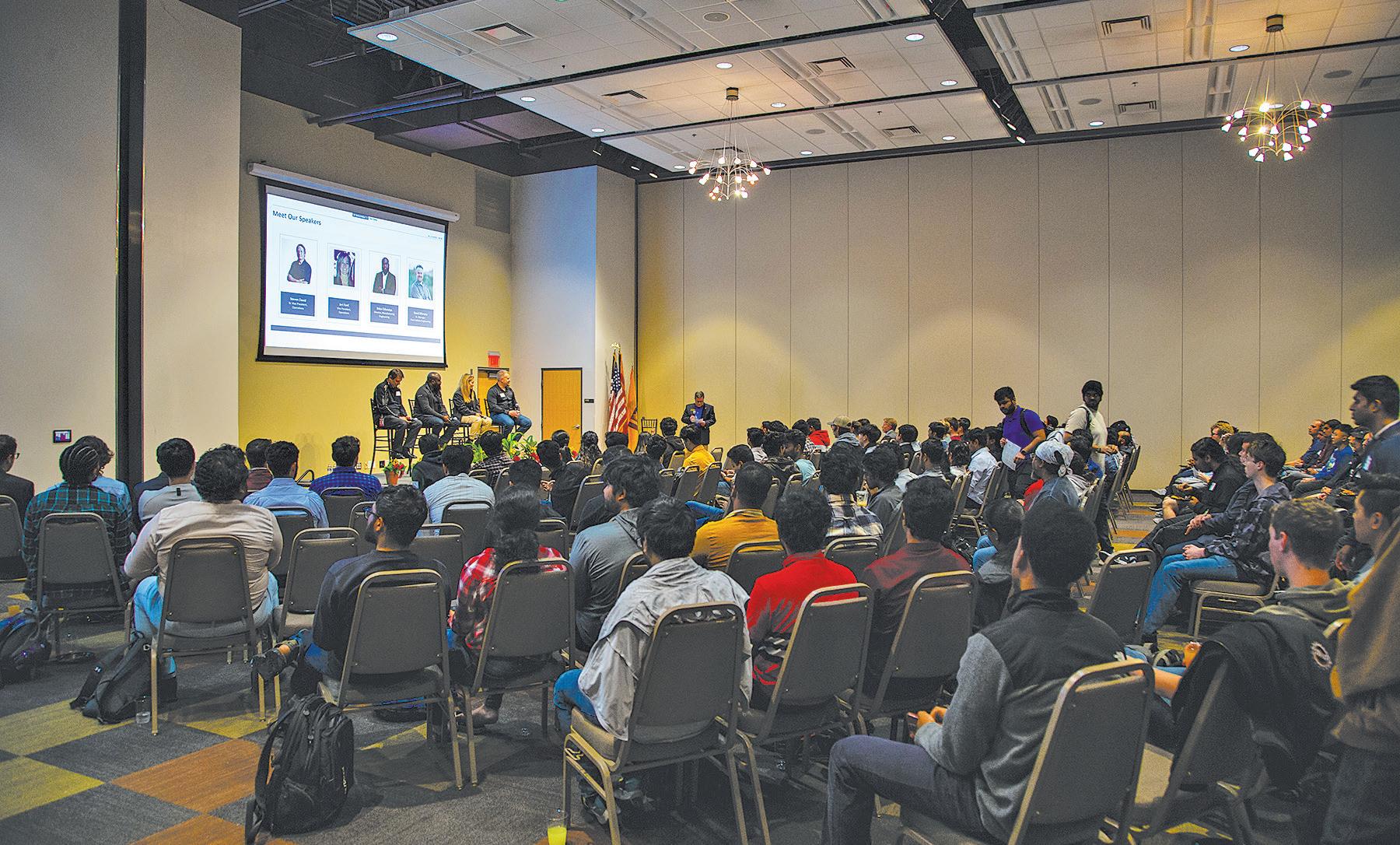
tries, the U.S. and Arizona will need thousands of more engineers and technicians than they currently have.
Even before those bills, pandemic supply chain disruptions had renewed interest in onshoring manufacturing – a move-
ment which Mesa is trying to get a piece of.
Polytechnic School Director Kurt Paterson said there is already an “insatiable” demand for skilled workers, with some juniors on the 5,000-student campus lining job offers more than a year before graduation.
Paterson was worried Lucid Day might see a lower turnout since fall is the prime recruiting season, but the turnout was huge, something he credited to students’ enthusiasm for EVs.
“This is one of the signs that the EV revolution is happening,” Paterson said, gazing at the crowd. “It resonates with students.”
The enthusiasm may also bode well for Arizona’s ability to develop the talent pool it needs to become a manufacturing hub, particularly in electric vehicles and batteries, two industries that have taken root.
WASHINGTON – Arizona has attracted more than $58 billion in private investments for manufacturing since 2021, one of the highest levels in the country, according to the White House.
“This is starting to have a real impact for people, for families, for communities,” said Bharat Ramamurti, the deputy director of President Joe Biden’s National Economic Council.
Arizona analysts and experts agree that federal policies likely played a role in the investments, but they said Biden can’t claim all the credit.
They pointed instead to an “ecosystem of individuals” on the state and local levels who worked for years to “put Arizona in the positive spot it is in today.”
Mike Huckins, vice president of public

affairs of the Greater Phoenix Chamber of Commerce, said federal support helps but the federal government is “not a sav-
ior for Arizona.”
“The efforts of lawmakers and the private sector in Arizona, long before this
money came along, has had a major, major impact on businesses locating and expanding here,” Huckins said.
The White House said the Arizona funding is part of more than $435 billion in private investment for projects in every state over the last two years. Ramamurti was not able to rank the states, but confirmed that Arizona was one of the top states for investments during that period.
More than $200 billion of the investment is slated for semiconductor manufacturing across the country and another $200 billion has been pledged for clean-energy products such as electric vehicles and batteries, according to administration data. Investment in Arizona followed that pattern, with much of the funding planned for semiconductors and battery manufacturing.
The largest amount in Arizona is the $26 billion pledged by Taiwan Semiconductor
Two tiny homes last week arrived in downtown Mesa ahead of groundbreaking for an unusual residential project planned to get underway this spring.
ZenniHome, created by SkyMall founder and former state Sen. Bob Worsley, is preparing to stack and lock together prefabricated tiny homes into a 90-unit midrise apartment building on Main Street.
Before cranes hoist the homes into place – possibly this summer– the public will have the opportunity to tour two modular homes by appointment at a demonstration site at 29 Robson, next to Cider Corps, in downtown.
ZenniHome’s two models on display are 320 square feet and 640 square feet, respectively.
The company touts its product as a solution for people who want to add a dwelling unit to their property, or developers looking to create multifamily housing on an accelerated timeline.
Worsley wants downtown Mesa to be the test site to demonstrate the multifamily housing possibilities of the units.
To do so, ZenniHome has struck a deal with Scottsdale-based Caliber Development to construct two tiny home towers atop a ground-floor retail building on a property it owns at 29 Main St., which currently houses a vacant bank building.
A Caliber spokesman said it could begin demolishing the bank and filling in its basement level by May.
The company will then build a new ground-level retail structure that will become a base for the tiny homes apartment blocks above.
Worsley sees his small, shippable homes as a new tool for communities and individuals to fill housing gaps in Arizona and beyond.
“I could see in the Senate that there was a lot of need for housing,” Worsley said.
After he retired from the Legislature in 2019, he saw a lab in Utah where engineers were working on robotic walls and furniture to maximize space.
Worsley was impressed with the concept, but the devices he saw weren’t ready for the market yet.
“After 18 months, I just said, ‘I’m going

to do this,’” he said. “There’s good product out there that’s currently offered. … I want to take the house and design it around robotic furniture, because I think that’s the future.”
In the prototype ZenniHomes installed downtown, a bed glides up into the ceiling during the day to create a living room with couch and coffee table and an entertainment center that slides to create a walk-in closet.
Brooklyn-based Ori – as in origami –created the mobile furniture.
At $95,000 and $125,000, respectively, the units are more affordable than a typical starter home in today’s market.
ZenniHome estimates additional costs of $30,000 to $50,000 to install the small structures on site.
The homes are built using the dimensions of shipping containers to facilitate shipping, but Worsley emphasized the homes are not made from containers.
According to Worsley, shipping containers are not practical for creating living spaces.
“By the time you take a container and cut into it, you’ve destroyed the structural integrity of the container,” Worsley said, “And if you’re putting in windows and doors, it’s got to be reinforced again.”
The steel bones supporting the Zenni-

Homes are built “from scratch.”
“We built these with enough steel in the walls that we can stack these fivehigh,” he said.
Most of the workers who are welding, wiring and finishing the compact homes are Navajos.
ZenniHome’s factory is one of the first redevelopment projects to open on the site of the Navajo Generating Station coal plant that was decommissioned in 2019, leading to the loss of hundreds of jobs in the rural community.
Originally, ZenniHome planned to source its steel frames from China, but when the pandemic disrupted international shipping, Worsley said the company decided to onshore production. He thought bringing jobs back to the NGS site could be a win-win for the company and the communities of Page and Lechee, a neighboring community on the Navajo Nation.
“I was told by so many people ‘Never do it. You’ll never ever get anything done up there. The government won’t let you do it. Navajos won’t let you do it,’ and it’s just not true,” he said.
“In 60 days, we had a lease, an emergency operating agreement, and now we’re talking about really big relationships with the Navajos, because they believe in us because we believed in them.”
Among those touring the modular homes was acting Head of Commerce of the Navajo Nation Tony Skrelunes.
“A lot of Navajos really value that hard work with their brands, so this is certainly significant, because we’re building something that’s premium for our country, and sustainable,” Skrelunes said.
He said the Navajo Nation is in the process of master planning redevelopment for the NGS site, which is thousands of acres.
Skrelunes said the tribe is also interested in keeping some of the ZenniHomes on tribal land.
“We have a massive need for housing on our nation,” he said. “A lot of our people are excited this could really help us solve a glaring need.”
Skrelunes said the small size of the ZenniHomes works well with Navajo tradition.
“A smaller space ensures communication, ensures storytelling, ensures that interaction happens,” he said.
Tucked in a cul-de-sac of land adjacent to Mesa Gateway Airport on 600 acres of the former Williams Air Force Base, ASU’s Polytechnic campus can be easy to miss amid all the high-profile developments in the Southeast Valley.
However, ASU Poly’s presence has already aided the economic explosion in the area, helping to build the case for manufacturing in the East Valley with the promise of skilled workers nearby and collaborations between industry and ASU.
Today, the campus boasts advanced manufacturing equipment like metal 3D printers, which are million-dollar pieces of equipment, and partnerships with major manufacturers in the region like Boeing, which helps the school develop curriculum.
But plans are underway to significantly expand the campus to meet the current moment.
“ASU Poly is going to be one of the growth areas for Arizona State University,” said Dr. Binil Starly, a manufacturing researcher who was tapped last fall to lead the new School of Manufacturing Systems and Networks.
He said ASU wants the Polytechnic to be the “center of focus” for its various manufacturing programs, so it can support companies in the East Valley looking to ramp up operations or companies outside the state interested in relocating.
According to Starly, ASU Poly has a lot of room to grow, with just 100 of its 600 acres developed.
At this year’s State of the City address, ASU President Michael Crow told the crowd his goal is to triple or quadruple the current enrollment of ASU Poly.
He also announced a $200 million investment in the ASU Poly campus.
Starly said much of that money is earmarked for a planned 180,000-square-foot Polytechnic Engineering Research Building slated to open in fall of 2025.
Once built, it would become the largest building on the campus, and will “scream manufacturing in every shape and form,” Starly said.
The first floor of the building will be “laid out like a mini factory that enables students or parents or prospective industry to come and walk and actually experience how things are being made and built and tested,” he said.
The mini factory will include “some of

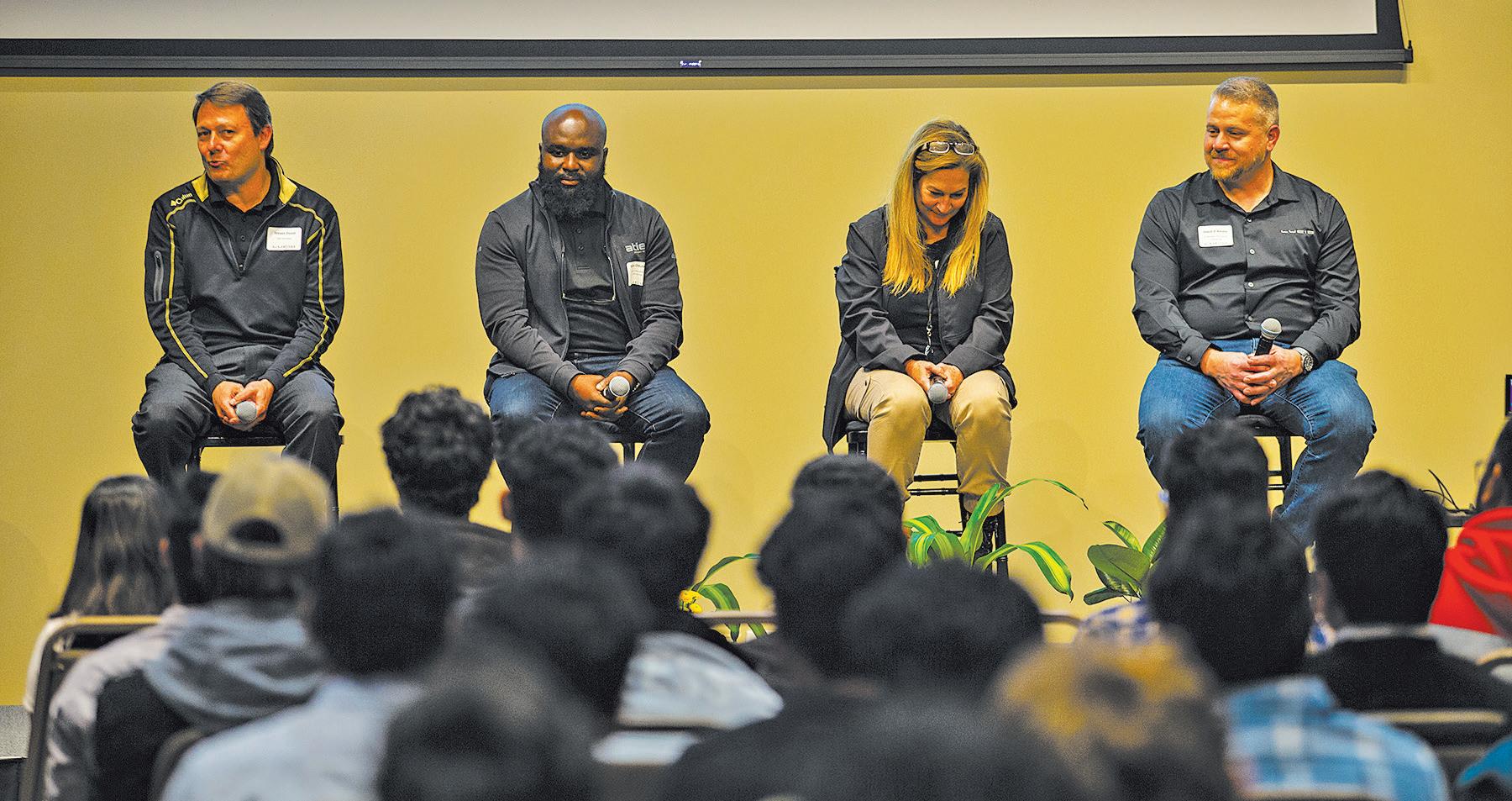
the most advanced equipment that already you can buy or that you’re going to build.”
Some of that money, Starly added, will also be used to upgrade infrastructure on the World War II-era campus.
He said one piece of critical infrastructure needed for manufacturing that surprises people is network connectivity, because modern factories are “very data intensive.”
“Our metal 3D printers, I was just informing our architects, these things are going to generate terabytes of data for a single part to be built,” Starly said. A terabyte is enough data to store 250 full-length movies.
But manufacturing, unlike other domains, also requires plenty of physical space, and the ASU Poly campus provides that, too.
Starly believes ASU Poly could play an even greater role in the local economy than it already does.
He said that the manufacturing research conducted at the campus could persuade more companies to locate their research and development facilities in Mesa, in addition to their factories.
Lucid’s engineers, for example, work from California, but build the cars in Arizona. Why can’t they do both here?

Starly believes an expanded ASU Poly could also have national significance in the rush to make more things within U.S. borders.
For one, he said, moving production to the U.S. where labor costs are higher, will require greater automation.
But research is needed to figure out how
to automate some processes. Starly said that manufacturing semiconductors is a challenging process to automate, and figuring out how to produce the chips with fewer employees could be a critical area of research in the near future.
An even bigger hurdle may be figuring out how to train the thousands of engineers needed to meet the current national goals.
Starly thinks ASU Poly could be on the cutting edge of this.
“For the last 20 years, we have seen a decline of manufacturing facilities going outside the U.S., and now we see ever since the pandemic a resurgence of manufacturing back into the U.S.,” Starly said.
“ASU is taking this novel idea of college and a school entirely focused on manufacturing systems, and many other universities are watching this exercise,” he said.
“So it is critical this particular school be successful, not just for ASU, but really for the entire country. Because if ASU is successful in this experiment, other universities are going to copy it.”
ASU polytechnic alumnus Ben Heckthorne, a thermal engineer for Lucid based at the Casa Grande plant, said ASU Poly provided good experience for his role with the car maker.
Heckthorne, a third generation Arizonan, said he became fascinated by electric cars after the release of the Tesla Roadster, and at ASU Poly, he participated in the school’s Baja team, a nationwide competition between student-built off-road vehicles.
“I loved the hands-on experience,” he said of ASU Poly’s project-based curriculum.
Manufacturing Co., which plans to build two TSMC plants in the state.
Intel has promised to invest $20 billion to facilities it operates in Chandler, while LG Energy Solution has said it will spend $5.5 billion to make electric vehicle batteries in Queen Creek.
“There’s a multiplier effect,” Ramamurti said. “You have a big factory making an investment, small businesses sprout up.”
Daniel Scarpinato, who served as chief of staff to former Gov. Doug Ducey, said the groundwork for those gains was laid long before Biden took office.
“Arizona is actually now No. 1 for foreign investment, and that is a result of the focus that was really made over the last eight years on economic development, on our business environment,” Scarpinato said, “and on the governor specifically recruiting some of these companies, including TSMC, LG, the expansion that we saw with Intel, etc., etc.”
He pointed to separate trips to Asia by Ducey and Phoenix Mayor Kate Gallego to build relationships with TSMC and LG Energy that paid off in the recent investments. Scarpinato also said Sandra Watson of the Arizona Commerce Authority and Danny Seiden of the Arizona Chamber of Commerce have been part of the network that helped land those deals.
An Arizona State University economist said that the state’s “culture of welcoming business” has fostered relationships with companies like TSMC and LG Energy in recent years.
But Dennis Hoffman said there’s no doubt that Biden-era policies have helped those relationships flourish.
“This chips bill (the CHIPS and Science Act) to some degree, and the clean energy incentives for autos that lead to the need
for more battery manufacturing, you can draw the direct link from that type of legislation to these types of businesses,” said Hoffman, director of the L. William Seidman Research Institute at the W.P. Carey School of Business.
Universities are also a major player in helping promote manufacturing growth for the state, Hoffman said, as they provide the research and workforce needed in semiconductor and battery industries.
Biden plans a 20-state Investing in America tour members of the administration fanning out across the country to visit sites of similar investments.
The administration said policies like the CHIPS Act and funding from the president’s infrastructure bill and Inflation Reduction Act have enabled the investments that will “boost U.S. competitiveness, rebuild infrastructure, strengthen supply chains, and help build a clean energy economy.”
Huckins said there is no denying the investments are good news for the state.
“Workers coming into Arizona to work … are going to need to go to new places to live, so that’s going to benefit the housing industry,” he said. “They’re going to need places to go eat, so that’s going to benefit the grocery stores and the restaurant industry.”
Scarpinato said he worries an “unending amount of money that is coming in” to the state from the federal government is exacerbating the state’s already-high inflation. But Hoffman is not as concerned, saying the fact that there is more money in the system is manageable.
“It’s serendipity for sure,” he said of the confluence of factors. “It’s federal government action, it’s local government action with respect to incentives in organizing the investment here and coordinating all the activities that have to take place to make this investment successful.”

















 BY HAROLD WONG AFN Guest Writer
BY HAROLD WONG AFN Guest Writer
Inflation in 2022 hit 40-year highs, so how can you retire well, even if we have continued inflation and a recession in the next few years?
Case study: I met Joe, 63, and Judy, 65, in June, 2019 at a seminar I gave at the Ahwatukee Event Center. They had $850,000 of financial assets and 90% of it was in the stock market. They planned to retire when Joe reached 70.
They were concerned about stock market risk and wondered how much they would be able to spend when retired. Their #1 priority was “never run out of money” and their #2 priority was “investments that don’t lose.”
The conventional wisdom in the field of financial planning is that when retired, you need 25-35% less income than when working. I asked them to dream big and write down their bucket list items (everything you’ve dreamed about your entire life).
I explained that there are the phases of retirement: the Go-Go Years; the SlowGo Years; and the No-Go Years. Most Americans don’t have more than twothree weeks of vacation each year.
So, you may have a good income, but not enough time off to spend it on bucket list items.
Why should you spend your whole lives working and not be able to afford your bucket list items? In the Go-Go Years, you have just retired and have unlimited time. The question is whether you will have enough money to afford to accomplish your list.
You may be spending more during your Go-Go Years than when you were working.
The solutions: Most take Social Security at age 62 and only 3-5% wait until age 70, when they could receive up to double their retirement benefit at age 62. Joe enjoys his job and will wait until age 70 to take SS.
If Judy waits until she is full retirement age, she can take either her SS
based on her earnings history or half of Joe’s. Their total future SS when Joe retires will be $63,768.
They then take 90% of their financial assets out of the stock market and buy two private pensions that are worth $44,254 of total income when Joe reaches age 70.
They also buy some solar equipment that will generate a safe $11,900 of annual income each year for 10 years.
Using solar tax credits and deductions, they reduce the tax burden of a big Roth IRA Conversion so that half of their private pension income will be tax-free.
As a result, total income at age 70 will be $119,922, almost $70,000 more than what they are currently spending and almost $45,000 more than the $75,000 they want to spend each year in retirement. These were the numbers in 2019.
Now, with several years of increases to their SS, they will have at least $125,000 of annual income. They don’t have to worry about the high inflation the last two years of forecasted inflation for the next two years. They have so much more income than they thought possible.
Free seminar and lunch: March 22, 10 a.m. at Hyatt Place, 3535 W. Chandler Blvd. Chandler. Topic is “Beat Inflation by Saving Taxes and Increasing Income!” The seminar starts at 10 a.m., followed by a free catered lunch.
Free Tour/Workshop: Solar Reefer (Refrigeration) Factory, 9 a.m.-noon April 29. Topic is “How solar reefers can reduce taxes to $0 and earn a steady 1014%!” Lots of tasty refreshments served.
Location is at Advanced Energy Machines: 4245 E. Norcroft St., Mesa, ¼ mile SW of McDowell & Greenfield Roads.
To RSVP for the seminars or schedule a free consultation: contact Dr. Harold Wong at 480-706-0177 or harold_wong@ hotmail.com. His website is drharoldwong.com.
Dr. Wong earned his Ph.D. in Economics at University of California/Berkeley and has appeared on over 400 TV/radio programs.








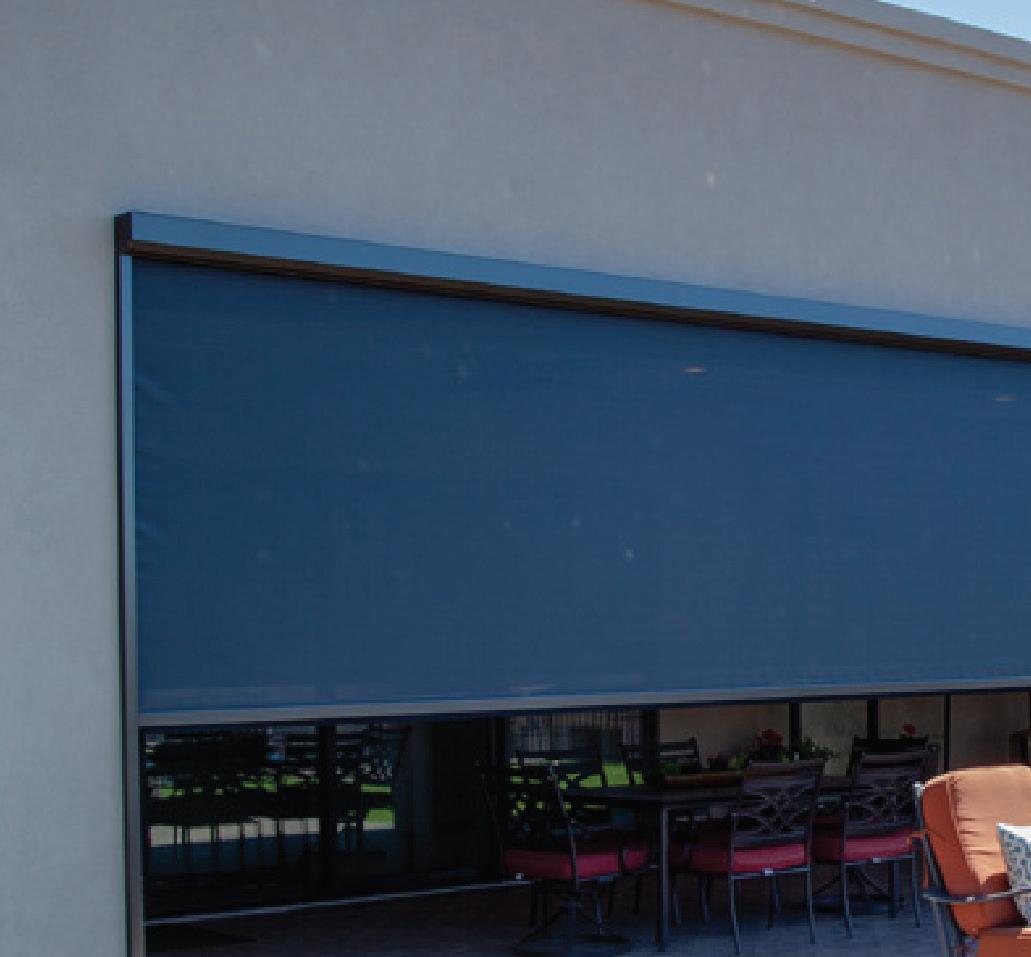











The midway point of the season for Mountain Pointe High School’s baseball team in 2022 brought turmoil.
The Pride had just won their eighth game in a row against Desert Ridge. It was their second in-state opponent since taking part in a tournament that pinned them against four teams from Colorado. They were in a good position to finish strong and secure a home game in the 6A Conference playoffs.
Then, what seemed to work so well for Mountain Pointe in the early part of the season didn’t anymore. The Pride lost to Desert Ridge, followed by their next eight opponents. Their final chance at the postseason came in the play-in tournament, but they fell to Brophy.
A successful first half of the season was marred by a nine-game losing streak.
“We kinda choose to forget about that,” Mountain Pointe Coach Max Pincus said.

“It was a lot.”
The most frustrating part of the losing streak for Mountain Pointe last year was every player’s mindset that they were better
When Amos Augustine, Ryder Noche and Gregory Riddell began playing flag football at different points of their lives, none of them realized how far the sport could take then and the opportunities it could present.
The three junior high students embraced their time on the field, using it as a chance to improve their skills outside of the tackle football season — which they all plan to play in high school next fall. But flag football has evolved over the years.
It’s more than just a game where players run routes and pull the flags that dangle from a belt around the waist of players. It’s become physical with route concepts,
specific defensive assignments and more organization than one could imagine. With that, come opportunities. And the three boys received the ultimate opportunity in March as they were named to the Team USA U15 team.
“I was just proud of myself that I made the team,” Augustine said. “I’m just excited because, especially going into high school, it’s the national level so I can really get my name out there and get people looking at my name. Exposure.”
Both Augustine and Noche play wide receiver and defensive back in football. Riddell said he can play anything, but figures to find his spot along the edge of the defensive line in high school.
see USA page 47
than the product they put on the field. They showed early on they could hit and defend with the pitching they had on the mound and players behind there in the field.
They appeared to be continuing the legacy of the baseball program and its status as a playoff team even if contending for a title was out of the realm of possibilities. But they sputtered and it left a chip on the shoulders of every player that returned this season.
They didn’t want the same results as last year. They simply wanted to move on.
And they’ve done so in impressive fashion.
“As a whole, we know how far we can go, and our pitching staff has been crazy this year,” senior outfielder Teagan Kearney said. “With the pitching we’ve had solid defense and have had solid (at bats). With all that it’s helped us.”
After starting the new season with three straight losses, Mountain Pointe rattled off 10 wins in a row heading into the Coach Bob Invitational. The Pride tied a team from Oregon before beating two others.
The streak finally came to an end on March 30 against West Salem in the tour-
see BASEBALL page 48

Stung by a late lawsuit filed by the City of Phoenix, the Arizona Coyotes and other groups in favor of a proposed hockey arena and entertainment district in Tempe last week urged voters to pass ballot measures in May that would allow the project to proceed.
The March 30 news conference featuring Coyotes players and officials, as well as four former mayors of Tempe, was a reaction by pro-development groups to a lawsuit Phoenix filed against Tempe two days earlier.
The suit alleges Tempe officials broke a contract when they advanced plans for a residential development near Priest Drive and Rio Salado Parkway, near Phoenix Sky Harbor International Airport.
Coyotes President and CEO Xavier Gutierrez said he was “shocked” by the suit, because he thought the city and Sky Harbor had reached a deal.
“You saw the CEO of Sky Harbor get out

in front at the Tempe City Council meeting and acknowledge that they were no longer

Book by May 16 and save $10 per month! Use promo code
opposed to this,” Gutierrez said of a Nov. 29 special Tempe City Council meeting.
“We as an organization took them at their word, and we were completely shocked that they reversed course.”
Former Tempe Mayor Hugh Hallman called the lawsuit a political stunt, contending, “The basis for the lawsuit is nonsense.”
Phoenix’s lawsuit centers around the building of multifamily housing in areas near the airport that are affected by flight noise.
The 1994 agreement limits how close residences can be to the airport but makes exceptions for soundproof apartments.
But Hallman pointed to a 2013 letter from the city of Phoenix about a different development.
In that letter, Hallman said, Phoenix said the 1994 document does allow multifamily housing in the noise-affected areas.
Throughout the press conference, Hallman insisted that the proposed development was in line with the 1994 agreement.
“Let me give you some advice, Sky Harbor, the letter agreement was not an amendment to the IGA (intergovernmental agreement),” Hallman said.
That does not appear to be the airport’s reading of the agreement.
A page dedicated to the agreement on the Sky Harbor website says: “Including
multifamily housing in the Tempe Entertainment District development would place up to 2,100 residential units in a high-noise area directly under two converging flight paths – and in a location where Tempe and Phoenix agreed there would be no housing.”
Phoenix Director of Aviation Services
Chad Makovsky said ahead of the Tempe news conference that he understood the developer’s frustration but that it should be aimed at Tempe.
“We thought we had a reasonable compromise with Tempe that would protect the airport, the communities around the airport and allow these developments to proceed,” the statement said.
Opposition groups were there Thursday and former Tempe Councilwoman Lauren Kuby, a prominent opponent of the project, said the blame for any rancor over the deal should be laid at the feet of Bluebird Development, which is owned by Coyotes majority owner Alex Meruelo.
“What’s clear is that this developer brings division wherever he goes,” Kuby said. “You can look at Glendale, you can look at Tucson, you can look at Miami Beach, there are so many instances where he sparks division.”
Late last year, the Tempe City Council agreed to send three propositions to voters this May to create a Coyotes Entertainment District.
It would include 2,000 apartments, a new 16,000-seat hockey arena and a complete entertainment district with businesses and gambling hubs on more than 45 acres of city-owned land west of Tempe Town Lake on Priest Drive and Rio Salado Parkway.
Proposition 301 would amend the city’s General Plan 2024 Land Use Map to facilitate the redevelopment of the city-owned, but commercially zoned, property into a mixed-use project.
That would allow an entertainment district with retail, restaurant, hotel, office and residential uses. Proposition 302 would rezone the city property, and Proposition 303 would uphold Tempe’s decision to authorize Mayor Corey Woods to sign off on a development and disposition agreement with Meruelo’s Bluebird De-
Noche, an Ahwatukee resident, and Riddell, who attends online school in the Kyrene School District and lives in Phoenix, have both already decided on attending Brophy Prep for high school to play under head coach Jason Jewell. Beyond that, they have the opportunity to receive a top-notch education, something their parents look forward to.
Augustine, meanwhile, is still deciding on which high school to attend. He currently resides in Gilbert and attends Casteel Junior High in Queen Creek. Wherever he ends up, the program will get a shifty wideout with speed and good hands. Brophy will also receive two talented players who have both played youth tackle and flag football at a high level.
All three were part of the Chandler Bears youth football team in 2019 that went on to play at nationals. Now all three are part of Elite Youth Flag Football, a team that stems from the Elite Community Foundation and Elite Athlete Management headquartered in Chandler.
Their ability to remain together and be successful doing so has been special for
the three boys.
“We were the only people from the West Coast over there,” Noche said. “There’s different levels of competition over there. It’s a different type of style. Different mentalities, physicality, that’s what I saw.”
To make Team USA, the boys had to head to Charlotte for a tryout and combine of sorts. They went through various drills for each position, and did drills similar to that at the NFL combine — 40-yard dash, shuttle, etc.
Coaches for Team USA also wanted to see them live in action during a 7-on-7 period. They opened the eyes of many on east coast, including the players they attended the combine with.
“Honestly, it was a good time,” Riddell said. “Just being able to be around a whole bunch of athletic people and learning and getting better. New experiences. I had never done this before so I didn’t know what it would be like.”
The boys’ first game with the Team USA U15 Team will take place in July. Teams from Canada and as far as Japan — among others — are set to compete in the tournament.
The rules from flag football seen in Arizona and across the nation, where some

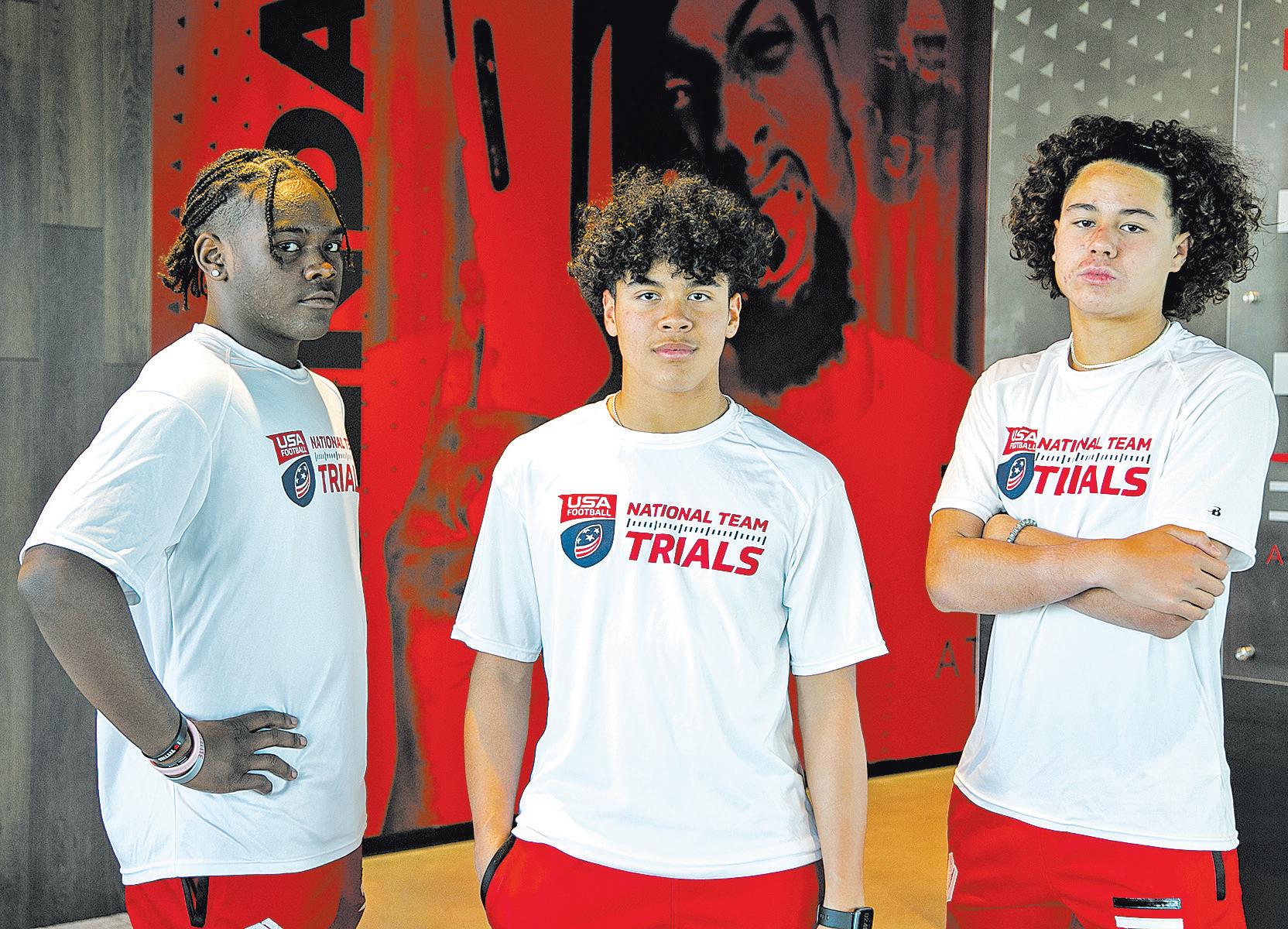
contact is now welcome, are different. Contact is not allowed.
The boys believe it will take some adjusting too but they’re confident in their skill level to pick up the game quick and make a difference for Team USA. Until then, they’ll continue practicing
and gearing up for the trip this summer. Overall, it’s the perfect opportunity to play for their country and then transition into high school.
“I’m kinda nervous but not at the same time,” Riddell said. “I’m ready to go into a different part of my life.”


velopment LLC.
Despite the lawsuit, Gutierrez was confident the measures on the May 16 special election ballot will pass and that the development will proceed.
BASEBALL from page 45
COYOTES from page 46 nament.
Much of the Pride’s success this season has been due to the chemistry among the players. They’re still relatively young, with several juniors and sophomores playing pivotal roles. But they all look to their leaders for guidance, Kearney included.
He’s become a force in the outfield for Mountain Pointe on defense and a senior voice in the clubhouse. Players look up to him and Pincus credits him for simply doing the right thing on a daily basis.
“This is such a fun group of guys to be with every day,” Kearney said. “We all bring each other up from top to bottom. Everyone has been on the fence, cheering for their teammates. It’s just been fun as a whole and great to lead them.”
Along with Kearney, juniors Sergio Garcia and Cole Rogers have also taken shape as leaders this season.
Garcia, who can do it all for the Pride, is batting .429 with eight RBI and two home runs this season at the plate. On the mound, he’s 3-1 with a 1.31 ERA. Garcia, sophomore Brett Crossland (1.25 ERA) and junior Sam Yeager (2.37 ERA) have led the way for Mountain Pointe from a pitching standpoint.
The position comes with pressure, especially when facing tough teams both in and out of state. But Garcia embraces it. In his mind, he’s doing whatever it takes to help his team be successful.
“It feels good to be able to play offensively and defensively on the mound or hitting,” Garcia said. “It’s a really big role for the team and I’m happy to be that guy. I’ve seen a lot of growth in myself.”
Maturity from last year is seen up and down the Mountain Pointe roster. Freshman stepping up into big roles as sopho-
“This is a fight between Tempe and Phoenix. We don’t believe that the voters and residents of Tempe should allow the city of Phoenix to bully them,” Gutierrez said.
“We are moving forward, and we are hoping that the voters will vote yes on propositions 301, 302 and 303.”
mores and juniors becoming leaders.
Shortstop Cole Rogers has been the poster child for maturity this season. Last year as a sophomore, he started coming into his own as a varsity player. He knows the expectations that come with playing shortstop at Mountain Pointe, especially following in the footsteps of Carson Tucker.
So, he used this past off-season to establish himself as a star and better himself overall.
“I’ve played shortstop my whole life and took it as an opportunity to get better,” Rogers said. “I want to show people what I can do. I put in a lot of work over the summer and it’s paying off right now.”
As of Friday, March 31, Mountain Pointe was fifth in the 5A Conference, which the Pride were dropped down to from 6A this year. In Arizona Interscholastic Association power point games, they’re undefeated at 9-0.
But Pincus knows the team has a tough road ahead.
Mountain Pointe faced top-ranked Casteel Monday and will see the Colts again on April 12. It also has matchups with 6A Chaparral and two against Campo Verde — a contender for the 5A title — at the end of the month.
Despite the difficult upcoming games, the Pride are playing with confidence. They knew they were better than they showed last season so in their minds, they’re now proving just how dangerous of a team they can be.
“We never felt like we were out of it last year,” Pincus said. “We didn’t have to overhaul something or change the dynamic. They carried the positivity to this year.
“We’re good enough to be right there. There’s a bunch of other really good teams. If we play quality baseball, I think we can compete with anybody in the state.”








SRP offers simple account management tools and tips that will save you time and money. Sign up for reminders about your energy usage, enroll in automatic payments or just pick the day you pay. SRP is here to help you simplify your account and your life.
Learn more at srp.net/account.

www.ahwatukee.com

Celebrating artist Georgia O’Keeffe’s New Mexico ranch, the 5-year-old Ghost Ranch AZ in Tempe revolves around a menu inspired by Chandler Chef David Mora’s international experience.
Located at the northeast corner of Warner and Rural roads it serves offers full platters, starters, sides, salads and desserts with a Southwest focus.
Among Mora’s dishes are starters such as the Shrimp Aquachile, with wild Mexican shrimp, jicama, avocado, onion, pickled onions and a not-too-spicy habanero mango sauce.
Also featured is Queso Fundido, including Schreiner’s choirzo and pico de gallo in hand-made tortillas. Entrées include the grilled rainbow trout; a warriorsized 14-ounce tomahawk pork chop; and a house specialty, a chipotle-braised short rib ossobuco.

Among
the sides is Rancho Papas, which combines heirloom fingerling potatoes, chimayo crema and cotija cheese.
The venue also offers a select wine and beer menu, including the Provisioner five-varietal red blend from Camp Verde as well as Arizona beers, and an extensive south-of-the border-focused cocktail menu.

“We’re very eclectic, using modern technique with inspired Southwest flavors. It’s my focus: the land, the farm – where I came from,” said Mora.
Mora was born in Medellín, Colombia, when the area was rampant with drug
For over a decade, William “Doc” Jones has devoted his time to ensuring that Arizona joined in recognizing April as Jazz Appreciation Month — a tradition celebrated by nearly 200 countries.
The trumpeter lobbied state legislators to pass HCR 2017 in 2019 recognizing April 30 as International Jazz Day and proclaiming 2019 as Jazz Appreciation Month in Arizona by treating lawmakers from both sides of the aisle to a jazz-serenaded lunch break and provided free shows around the Valley.

It was at that moment that Jones saw the power of the music as he witnessed legislators dance with one another and bond over two nonpartisan loves; music and food. This year, his efforts have inspired
four events over six days throughout April.
Kicking off a month of celebration beginning April 8 at the Tempe Center for the Arts, Jones will take the stage alongside a cast of musicians that includes Stellar Award winner Reggie Campbell, renowned drummer Fred Boswell Jr., chart-topping saxophonist Neamen Lyles and pastors to pay homage to gospel music, the genre that preceded jazz.
“I’ve been wanting to do this for a number of years where we have a show that goes back to the roots and shows the evolution from the art form of gospel music and how that evolved into the jazz that came out of New Orleans,” Jones said.
“We also got 10 pastors together and we will be giving them recognition for helping us in the jazz community to
Humans and dogs have been companions for thousands of years, and the Arizona Science Center’s latest spring exhibit is highlighting this iconic interspecies duo.
With support from the Annenberg Foundation and Wallis Annenberg PetSpace, the Arizona Science Center introduces “Dogs! A Science Tail,” which runs daily through Sunday, April 30. Through a hands-on, family-oriented expedition, the exhibit invites Valley residents to explore the life of a dog and their age-old relationship with humans.
“We are so excited here at Arizona Science Center to be hosting ‘Dogs! A Science Tale,’” says Sari Custer, the center’s chief of science and curiosity. “This is an opportunity for folks to explore the science of puppy love, to explore the connection between dogs and humans, which is years and years and years in the making. Our mission is to inspire, educate and engage curious minds through science, so this is our opportunity to do that.”
The highly immersive exhibit highlights the abilities of canines and humans that enable them to understand and communicate with

each other, showcasing life from a dog’s perspective and how they encounter the world through the senses.
“They’re exploring what it’s like to be a scientist working with dogs, how dog selection for different traits have led to the hundreds of different breeds that we have today…” Custer says. “It even explores everything from jobs that you can have that involve dogs, to how we go into actually caring for dogs at home.”
Experiences consist of listening to hidden sounds that dogs can hear but humans can’t, as well as a scent feature that Custer particularly emphasized.

“A dog has so much more ability to sense smell than we do — that’s how they gain information about their surroundings, people and even other animals,” she says. “You have a chance to actually smell these different scents with what they call their scent buttons, and try it yourself and see if you can pick out all the different scents; and the exhibit goes into explanation of how it works and what’s there.”
Other immersive features include walking a robot dog through an interactive neighborhood to understand how pets strengthen the community, an activity where one can test how fast they run in comparison to different breeds, and testing pop-culture knowledge during a
own community. This is a great showcase,” Custer says. “For those who love dogs that may not be able to have dogs at home, this is a chance to see dogs in action. It’s a really unique and exciting portion of this exhibit that we don’t normally get to have.”
The ‘Dogs!’ exhibit is also complemented by screenings of the anticipated documentary “Superpower Dogs,” which is narrated by actor Chris Evans. The Marvel star takes the audience on an immersive adventure educating viewers about the different roles of some heroic dogs in the working world, spotlighting their lifesaving skills and extraordinary bravery.
Daily showings are scheduled for 11 a.m. and 1 p.m.
game of “Jeopawdy!” based on the show “Jeopardy!”
There is also an opportunity to excavate replicas of actual fossils to determine if they belong to dogs or wolves.
“Guests can see skull examples and bone examples through time, there’s a simulated dig where they can explore and pretend to be an archaeologist,” Custer says. “In that simulated dig, you learn about what it means to study DNA and the history where scientists are looking at that history.”
Additionally, the exhibition features onsite events and outreach to further enhance attendees’ experience.
“One of the other key pieces of this exhibition is our dog park,” Custer says. “So, we have several partners that we are working with here in the Valley that are going to be onsite for live dog interactions.”
Some of the featured groups include the Arizona Humane Society, Fix.Adopt. Save., HALO Animal Rescue and the Arizona Animal Welfare League. Additional groups and events will be added over the course of the exhibition, ranging from therapy dogs to agility groups to law enforcement canines.
“We’re really excited that we can showcase what our community has to offer in the world of animal care and animal welfare, and how animals play a role in our
As the Arizona Science Center is always looking for exciting topics that meet its visitors’ needs and interests while incorporating science, Custer said the familiarity of the “Dogs!” exhibit supports its mission by providing an “entry into deeper conversations” in the field.
“First and foremost, I hope guests have some fun. Positive relationships with science are important to us,” she says.
“So having fun first and learning a little something along the way, hopefully walking away knowing that important role that dogs play and how different science aspects come into play, knowing there’s jobs and career paths that involve dogs — all of that is a key takeaway that we’re hoping our guests leave with (as well as the desire to) come back to us for more.”
What: “Dogs! A Science Tail” exhibit
When: 10:30 a.m. to 4 p.m. daily through April 30
Where: Arizona Science Center at 600 E. Washington Street, Phoenix Cost:$8.95 for general admission and $6.95 for members, children under 3 are free.
Info: For tickets or more information, call 602-716-2000 or visit azscience.org.
GHOST
cartel violence. His dad was a farmer.
“The guerillas would come and say, ‘This is what we will pay you for the land. Take it or we will take it,’” Mora recalled.
His father knew it was time to leave.
So, at 13, the future chef moved to North Miami Beach with his parents and his sister. His mother and father helped run his aunt’s Colombian wood furniture store, a branch of her main Bogota facility.
At, 16, he started bussing at a North Miami Beach steakhouse and began experiencing the diversity of the U.S. food industry.
“One of my best friend’s dad was the chef, and I spent a lot of time in the back of the house watching the staff cook,” Mora said.
“I loved the environment, the adrenaline, the pace and flavors. Within time I had learned almost every position in the front of the house, then I began to cook and I loved it. I was already determined and knew that being a chef was going to be my life.”
In 2009, he moved to Santa Fe, where he studied in a culinary arts program and learned about Southwest cuisine and the “delicious idiosyncrasies” of northern

New Mexico dishes.
He worked in a variety of restaurants, including Max’s, with Chef Mark Connel, who cooked professionally in Italy and then the three-Michelin-starred French Laundry in Napa; Arroyo Vino; Las Campanas; and Tapas Kitchen for smallbites.
“Every chef I have worked with has been a mentor in some way and I have learned from them, the good and the bad,” he said,




noting as an example Chef Connel, a friend and mentor who recently opened Parc Aspen in Colorado. Mora followed with stints in Arizona at Copa Café in Flagstaff and Mariposa in Sedona.
“I learned more about indigenous ingredients of Arizona and high desert flavors,” he recalled. “We enjoyed foraging lobster mushrooms in the Snowbowl area, wild herbs and fruit.” Today he continues to forage, hike and seek out hot springs in his free time. His future wife, Colorado native Lisa Graf, also worked at the Arroyo Vino restaurant. They decided to move to the Valley five years ago as her parents were living in Mesa.
For a while, he worked at The Boulders Resort in Carefree and was sous chef at Palo Verde and chef de cuisine at the Spotted Donkey. There he learned from Executive Chef Brian Archibald, now heading
the Regional French kitchen at Francine in the Scottsdale Fashion Mall.
The pastry chef at Ghost Ranch AZ, Lisa specializes in savage tarts and freak shakes. Her daughter, Sevani, named for the entertainer, is a violinist and a clay artist apprentice at the Mesa Arts Center.
David Chamberlin opened Ghost Ranch AZ about five years ago and closed it for a year during the pandemic. His brother, Aaron Chamberlin, debuted the St. Francis in downtown Phoenix and the Tempe and Phoenix Public Market Cafés.
He also owns Good Things Coming, also in Arizona.
Leading the Ghost Ranch house and kitchen staff of about 30 is Karmen Flores, the general manager.
Mora cooks because cooking is artistry and a way of caring for loved ones and restaurant guests.
“I think you will enjoy our old flavors and spices, our amazing environment and how close and personal we are to our guests,” he said.
Ghost Ranch AZ is open Mon. 3–9 p.m.; Tues.–Sat.: 11 a.m.–9 p.m.; and Sun.: 11 a.m.–8 p.m. Information: ghostranchaz. com.



keep jazz alive and introduce dance to the younger musicians.”
The show will set an early tone for the performances that follow.
Although his bill has been signed into law, Jones plans to entertain lawmakers as well to mark the fourth anniversary of their passage of the bill recognizing Jazz Appreciation Month in Arizona.
The public event April 12 will feature musicians from Arizona State University and bring together local lawmakers as well as the mayors of Phoenix, Scottsdale, Mesa, and Tempe for an afternoon of music, food and entertainment at Civic Space Park in Downtown Phoenix.
Jazz Appreciation Month festivities will then swing over to the Mesa Arts Center April 23 for a special free event centered around the contributions that women have made to the genre.
On the bill is a star-studded band under the direction of Mary Petrich and featuring a guest appearance by international pianist Nicole Pesce and vocalist Nayo Jones.
“It’s got a full day of women playing
this music and we’ve got some great artists,” Jones said.
The grand finale of the month is the annual Scottsdale Jazz Festival.
Historically the festival has been held on International Jazz day April 30, but this year it has been expanded into a two-day festival beginning a day earlier.
After a sold-out crowd packed last year’s Scottsdale Jazz Festival, Jones hopes to ride that momentum into what he is calling the “Super Bowl of Jazz Festivals.”
“I’m calling it the Super Bowl of Jazz Festivals because that’s how he’s built this weekend and what better city to come to the Scottsdale, Arizona?’” Jones said.
The festival will include a robust lineup of jazz musicians that includes an allstar band of students from the Molina School of Jazz at Next Student Academy in downtown Phoenix, Yuko Mabuchi and Mario Abney, and headline acts Jazz Funk Soul and Incognito.
Festival proceeds will be donated to the Molina School of Jazz’s initiative to fund music lessons and instruments for children around the Valley.
Gospel to Jazz Explosion presented by Doc Jones and Friends
When: 7 p.m. Saturday, April 8
Where: Tempe Center for the Arts, 700 W. Rio Salado Parkway, Tempe
Cost: Tickets start at $25
Info: tempecenterforthearts.com and jazzdayaz.com
When: 3 p.m. Wednesday, April 12
Where: Civic Space Park Outside Stage, 424 N. Central Avenue, Phoenix
Cost: Free
Info: jazzdayaz.com
When: 3 p.m. April 23
Where: 1 E. Main Street, Mesa
Cost: Free
Info: mesaartscenter.com and jazzdayaz.com

When: 2 p.m. Saturday, April 29 and Sunday, April 30
Where: Scottsdale Civic Center, 3939 N. Drinkwater Boulevard, Scottsdale.
Cost: Tickets start at $50
Info: scottsdalejazzfest.org



ACROSS
1 Shred
6 Tyke
12 Alaskan capital
13 Actress Lansbury
14 Soak up
15 Packed in a box, as oranges
16 Boxer Spinks
17 Like dried mud
19 Mac alternatives
20 Round Table titles
22 First lady?
24 Expected
27 Facts and figures
29 Congers
32 Elvis Presley hit song
35 Spiked club
36 Mandolin’s kin
37 UFO crew
38 Billboards
40 Minor quibbles
42 Nile biter
44 &&&&
46 Deal (with)
50 Weak
52 Missouri-born president
54 “-- serious?”
55 Small songbirds
56 Take offense at
57 “Leda and the Swan” poet
DOWN
1 Hayseed
2 Not -- many words
3 Drudges
4 Eg. and Syr., once
5 Barhopping tour
6 Big truck maker
7 Ham -- (deli order)
8 Links org.
9 Personal bugaboo
10 Power co. supply
11 Tiny amounts
12 Tokyo-based carrier
18 Amaze
21 Altar promise
23 Victory sign
24 Poorly lit
25 Actress Hagen
26 Fugitives
28 Creative flair
30 Allow

31 Soon-to-be grads
33 Homer’s neighbor
34 Profit
39 Beauty parlor
41 Diving gear
42 Miles away
43 Withered
45 Neither fem. nor masc.
47 Skip
48 Frying needs
49 Em halves
51 “See ya!”
53 Caviar


I’ve never been a picky eater.
But meatloaf was not one of my favorites, even though the dish has withstood the test of time as a favorite comfort food. Well, what a difference one recipe can make.
I went from never giving meatloaf a second thought to maybe thinking about it a little too much.
These days I can’t get enough of this special recipe that makes meatloaf so very flavorful and moist.
What secrets does this variation hold? There are several.
This

First, the two cups of whole milk that the breadcrumbs happily soak in. That alone gives the meatloaf a rich and ultra moist texture. Second, sautéing the sweet yellow onion adds to the moisture plus gives the loaf a slight natural sweetness.
Then the sauce that gets brushed over the top before baking gives this meatloaf a hint of spice, a bit of heat from the dry mustard and sweetness from the brown sugar.
All in all, this is a wonderful meal for the family, especially when paired with mashed potatoes, gnocchi, pasta or just some charred crusty French bread.
Ingredients:
Loaf ingredients:
• 2 tablespoons butter
• 1 large sweet yellow onion, chopped fine
• 2 garlic cloves, minced
• 1½ cups Italian seasoned breadcrumbs
• 2 cups whole milk
• 2 lbs lean ground beef
• 1 lb hot Italian bulk sausage
• 4 large eggs, beaten
Directions:
Preheat oven to 350 degrees. Grease an 8-inch loaf pan. In a skillet over medium high heat, add butter and sauté the onion until caramelized, about 10 minutes. Add the garlic and cook for another 2 minutes to soften. Set aside to cool, or add onion to a bowl and refrigerate to chill. In a large bowl, soak breadcrumbs in the milk for 5 minutes. Add the chilled onion mixture,
This quote from Bon Appetite magazine summed up meatloaf the best:
“Meatloaf in its many iterations and guises was often a sort of culinary scrap heap, a refuge for leftovers, in the spirit of many casseroles and of shepherd’s pie. It was a way to stretch protein. It was a way to use up excess vegetables. It was a ragtag orchestra of ingredients on the verge of expiration. And it made music more uplifting than anyone could have anticipated.”
This recipe is definitely music to my ears and a brand-new, one-woman fan favorite! .
•
• ½ teaspoon fresh or dried sage
• 1 teaspoon salt
• 1 teaspoon pepper
Sauce ingredients:
• 3 tablespoons brown sugar
• ½ cup catsup
• ¼ teaspoon nutmeg
• 2 teaspoons dry mustard
beef, sausage, eggs, onion, sage, salt and pepper, mixing well to combine.
Place in greased loaf pan, patting mixture to form a loaf. Make the sauce: In a small bowl, combine the brown sugar, catsup, nutmeg and dry mustard, mixing well. Spread sauce over top of meatloaf.
Bake for 1 hour or until cooked through. Serves 8..














Yes, you should actually dress for the job you want
In some cases, Casual Friday has turned into casual every day, but that doesn’t mean your next job might not require a higher standard.
Certainly, the gig economy has changed things — and in some cases for the better. We’ve never had more flexibility, in the hours we work, in the places where we work, and in how we dress when we work. But if your position isn’t a self-employed role, at-home or transient, there may be an expectation that you look the part.
Should you get called in for a formal interview, first impressions will count. You’ll want to stand out among other candidates who may take Casual Friday to its logical extreme — and, depending on the industry, you may be meeting with people who never
ascribed to that loose concept, anyway. If a hiring manager senses that you’re a lowest-common-denominator candidate — someone who is just trying to get by with the least amount of effort possible — you may quickly fall down the list of potential candidates. Pay special attention to the way your interviewer is dressed, and ask questions about expected attire.
In some cases, companies have a dress code, with specific details about what can and cannot be worn at work. They may require a uniform, or explicitly exclude certain fashion choices. Following these rules speaks to your commitment to the work, and to your enthusiasm. So paying attention to these norms can be critical to your relationship with the boss, long after you’ve secured the job. Keep in mind that even places which allow jeans or T-shirts may have
second rules about messaging on the shirt, or things like accompanying footwear. Find out what the expectations are, and try to exceed the minimum. You worked hard to secure this job, and it would be a shame to lose it over this kind of thoughtless infraction.

You may see terms like “casual,” “business casual,” and “business professional” tossed around. Here are the typical definitions: Casual doesn’t mean T-shirts, so much as
crisp, often collared shirts, jeans and closed footwear. Business casual usually entails a look like jeans with a sport coat. Business professional is just what it sounds like — a more formal look.
















































































































































